
Protected: SECRET BLENDS PROTOCOL – CHALLENGE COMBO ESSENTIALS – ROADMAP TO SUCCESS
December 28, 2020
Protected: PURGE 200:1 (MESSAGE FOR PASSWORD)
July 10, 2021ALDOSTERONE DOWNREGULATOR 200:1
$275.00
introducing
INTERSTELLAR BLEND™
aldosterone downregulator
200:1 CONCENTRATION


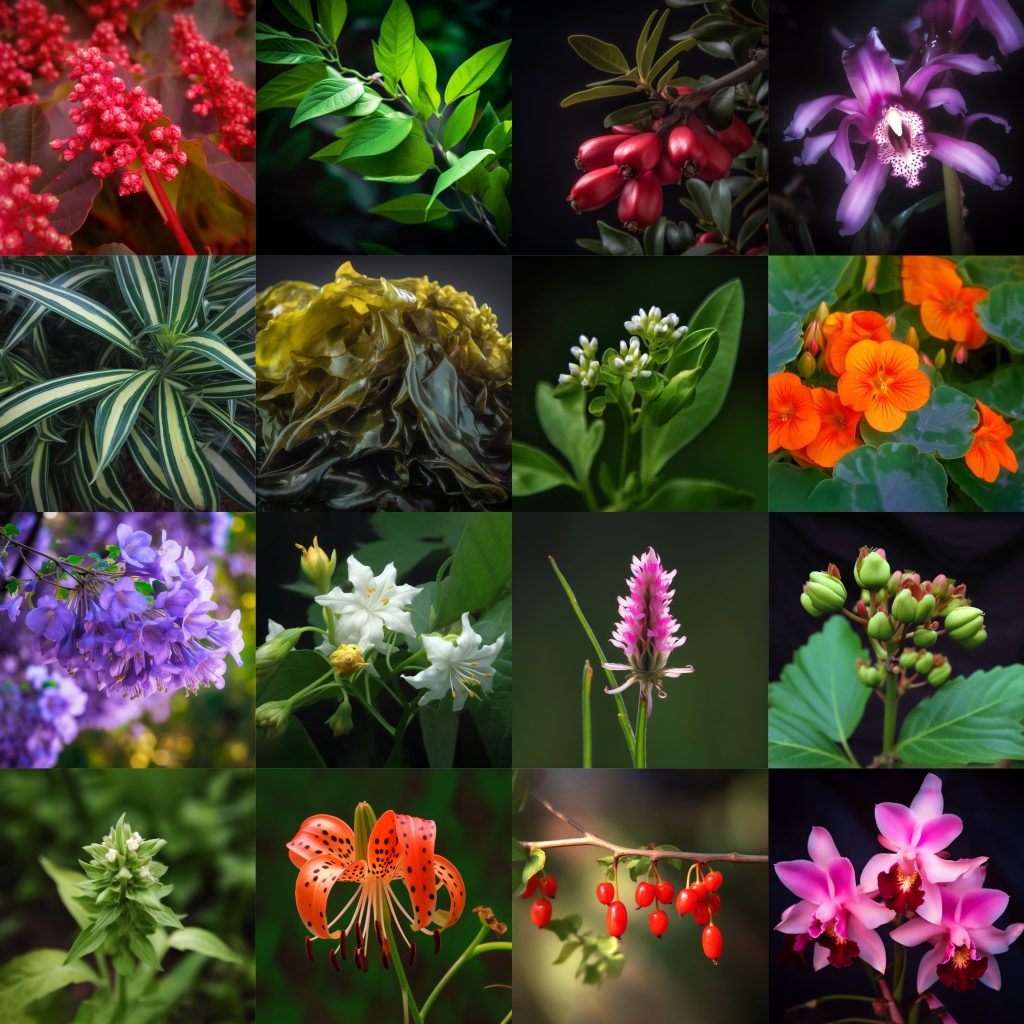


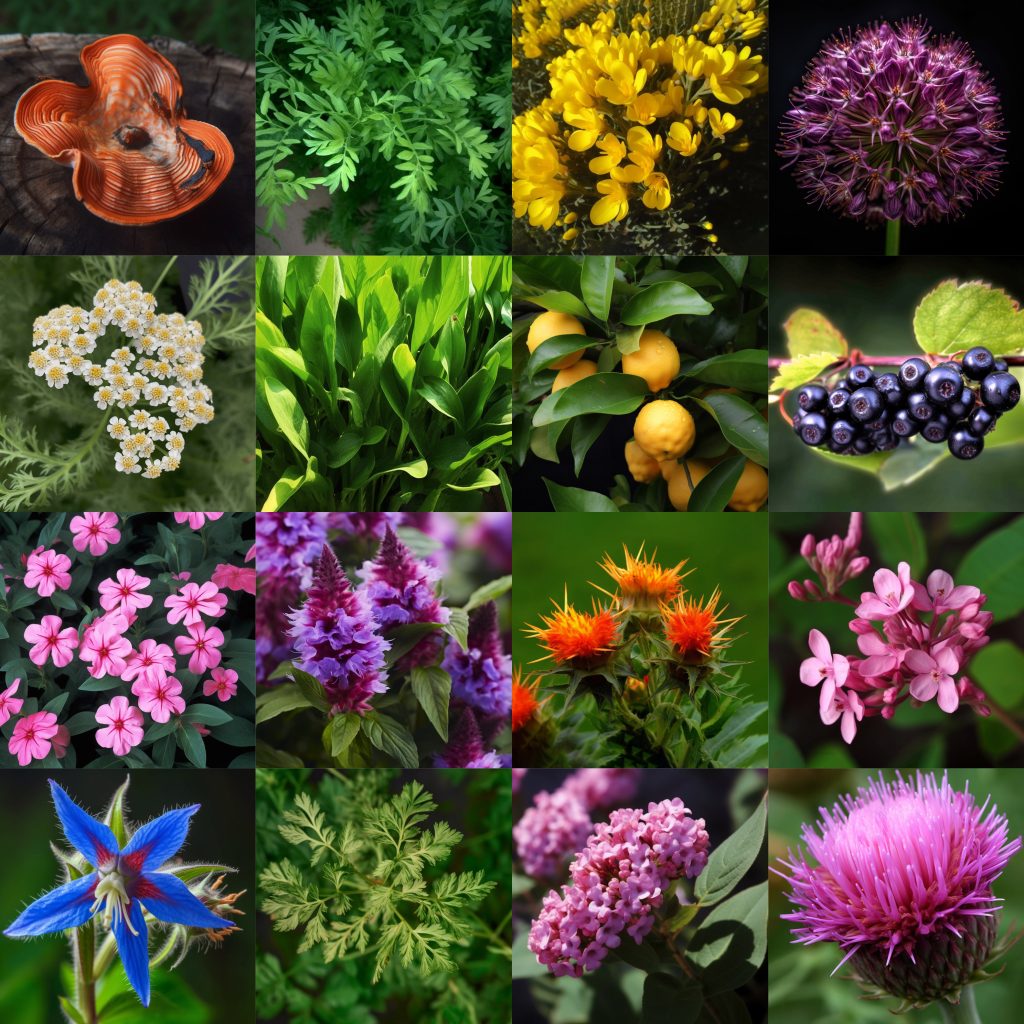
READ FIRST:
THE ROLE OF ALDOSTERONE IN OBESITY and HYPERTENSION
FEATURING: A. VENETUM L. • ACHILLEA • AGASTACHE MEXICANA • ALISMA ORIENTALIS(SAM.)JUZEP. • ALLIUM SATIVUM • ANTRODIA CAMPHORATA • ARONIA MITCHURINII • ARTEMISIA HERBA ALBA • ARTEMISIA SCOPARZA WALDST.ET KIT • ASTRAGALUS COMPLANATUS • ASTRAGALUS MEMBRANACEUS • AVERRHOA ARAMBOLA • BORAGO OFFICINALIS • BUDDLEJA CRISPA • CALYCOTOME VILLOSA • CAROM CAPTICUM • CARTHAMUS TINCTORIUS L. • CASSIA SEED • CATHARANTHUS ROSEUS • CECROPIA PACHYSTACHYA • CIRSIUM JAPONICUM • CITRUS LIMETTA • CLERODENDRON TRICHOTOMUM • COCOS NUCIFERA • COPTIS CHINENSIS FRANCH • CORIANDRUM SATIVUM • COSCINIUM FENESTRATUM • CRATAEGUS PINNATIFIDA BUNGE • CROCUS SATIVUS • CUDRANIA TRICUSPIDATA • CUSCUTA JAPONICA • ECHINODORUS GRANDIFLORUS • EKEBERGIA CAPENSIS • ELETTARIA CARDAMOMUM • EPIMEDIUM BREVICORNUM MAXIM. • EUCOMMIA ULMOIDES OLIVER • EUGENIA UNIFLORA • EUODIA RUTAECARPA (JUSS.)BENT • FICUS DELTOIDEA VAR. KUNSTLERI • FICUS EXASPERATE • FRITILLARIA USSURIENSIS MAXIM • GANODERMA LUCIDUM SPORE POWDER • GASTRODIA ELATA BL • GASTRODIA ELATA BLUME • GEUM JAPONICUM • GINKGO BILOBA L. • GLOBIMETULA CUPULATA • GRAPTOPETALUM PARAGUAYENSE • GUAZUMA ULMIFOLIA • GYNURA PROCUMBENS • HALIOTIDIS CONCHA • HARPEPHYLLUM CAFFRUM BERNH • HIBISCUS SABDARIFFA • HORDEURN VULGARE L • HYPTIS FRUTICOSA • JACARANDA MIMOSAEFOLIA • JATROPHA GOSSYPIIFOLIA • LAELIA ANCEPS • LAELIA AUTUMNALIS • LAMINARIA JAPONICA ARESCH. • LEONURUS JAPONICUS HOUTT • LEPECHINIA CAULESCENS • LEPIDIUM SATIVUM • LILIUM LANCIFOLIUM THUNB. • LORANTHUS FERRUGINEUS • LYCIUM BARBARUM L. • LYCIUM CHINENSE MILL. • LYCOPUS LUCIDUS TURCZ.VAT.HIRTUS REGEL • MADERASPATANA • MELOTHRIA • MOMORDICA CHARANTIA • MONASCUS PURPUREUS WENT. • NIGELLA SATIVA • OENOTHERA BIENNIS • OPHIOPOGON JAPONICUS (LINN. F.) KER-GAWL. • PANAX GINSENG • PANAX GINSENG C. A. MEYER • PANAX PSEUDO-GINSENG • PASSIFLORA EDULIS RIND • PERIPLOCA LAEVIGATA • PERSEA AMERICANA MILL • PHYLLANTHUS ACIDUS • PHYLLANTHUS URINARIA • PINELLIA TERNATA( THUNB.) BREIT • PLEUROTUS NEBRODENSIS • POLYALTHIA LONGIFOLIA • POLYGONUM CUSPIDATUM SIEB.ET ZUCC. • PRUNELLA VULGARIS L. • PUERARIA LOBATA (WILLD.) OHWI • RADIX BUPLEURI • RAPHANUS SATIVUS • REHMANNIA GLUTINOSA (GAETN.) LIBOSCH. EX FISCH. ET MEY • RETAMA RAETAM FORSSK • RHEUM PALMATUM L. • SALVIA CINNABARINA • SALVIA MILTIORRHIZA BGE • SAURURUS CHINENSIS • SCHISANDRA CHINENSIS • SCLEROCARYA BIRREA • SCROPHULARIAE RADIX • SCUTELLARIAE RADIX • SIEGESBECKIA ORIENTALIS L. • SOLANUM TORVUM • SOPHORA JAPONICA L. • TANACETUM VULGARE • TRIBULUS TERRESTRIS • TROPAEOLUM MAJUS • UNCARIA RHYNCHOPHYLLA • VALERIANA WALLICHII
INGREDIENTS & science

A. venetum L.
Effects of aqueous extracts of Apocynum venetum leaves (Luobuma extracts) on the blood pressure were evaluated in hypertensive animal models, such as spontaneously hypertensive rats (SHR), renal hypertensive rats and NaCl-induced hypertensive rats. In SHR, administration of Luobuma (heat-processed and unprocessed leaves) extracts at a dose of 70 mg/rat per day significantly decreased the systolic blood pressure value, but their decreasing effects were weaker than that of captopril. The urine volume, and the urinary Na+, K+ and protein excretions were not significantly different between Luobuma-treated and untreated groups. In 3/4 nephrectomized rats, the Luobuma extracts significantly decreased the systolic blood pressure value, accompanied by significant increases of the urine volume and the urinary Na+ and K+ excretions. Furthermore, they decreased the blood urea nitrogen (BUN) level. In NaCl-induced hypertensive rats, the Luobuma extract decreased the systolic blood pressure value.
However, it did not change the urinary excretions of Na+, K+ and protein. The BUN level was lower than that of control rats, but the serum total cholesterol (TC) level did not changed. From these findings, the Luobuma extracts have an anti-hypertensive effect, possibly due to amelioration of the kidney functions in the three experimental animal models.
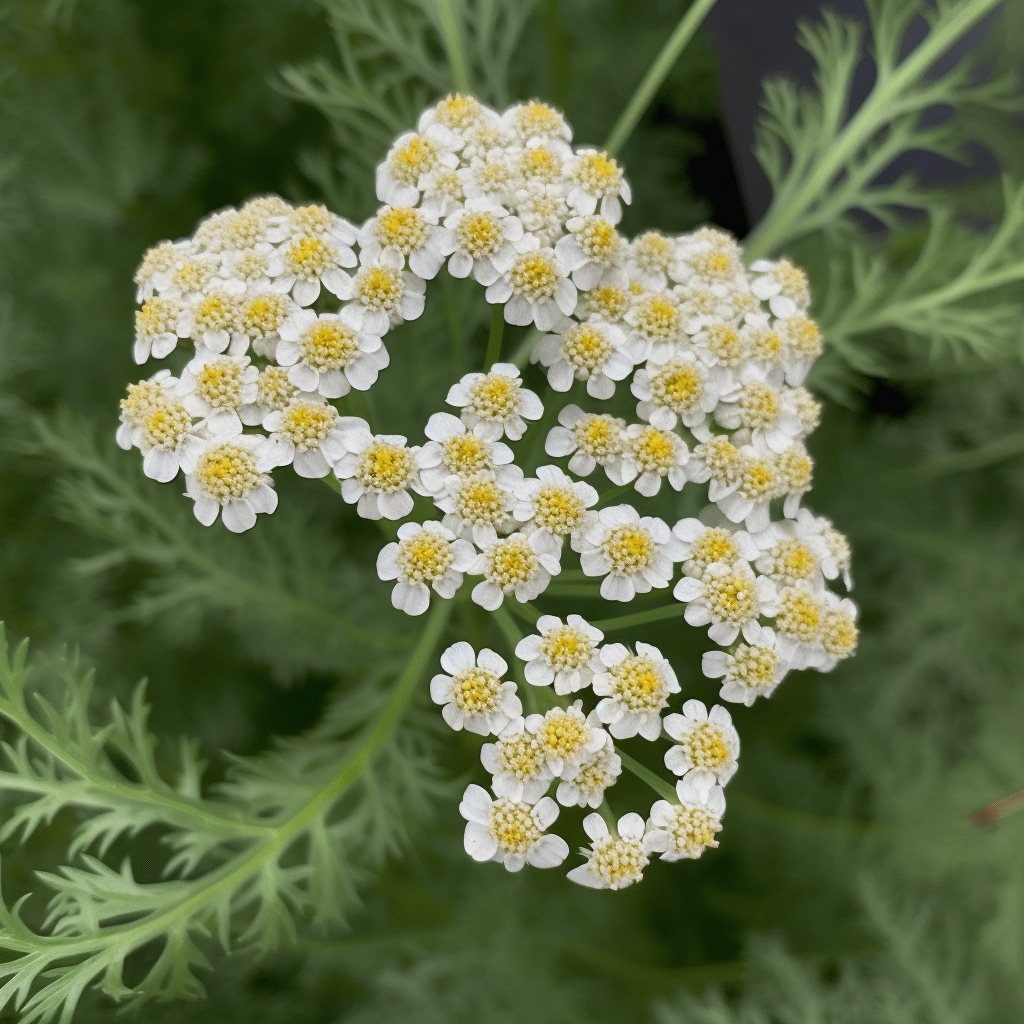
Achillea
Traditional uses of Achillea millefolium L. (Asteraceae) include the treatment of cardiovascular diseases. In the present study, we used anesthetized rats to assess the hypotensive effect of a hydroethanolic extract (HEAM), and its dichloromethane (DCM), ethyl acetate (EA), butanolic (BT), and dichloromethane-2 (DCM-2) fractions, besides the flavonoid artemetin, isolated from A. millefolium. The oral administra- tion of HEAM (100–300 mg/kg), DCM (20 mg/kg), DCM-2 (10–30 mg/kg), but not EA (10 mg/kg) and BT (50 mg/kg) fractions significantly reduced the mean arterial pressure (MAP) of normotensive rats. The phytochemical analysis by NMR 1H of DCM and DCM-2 fractions revealed high amounts of artemetin, that was isolated and administered by either oral (1.5 mg/kg) or intravenous (0.15–1.5 mg/kg) routes in rats. This flavonoid was able to dose-dependently reduce the MAP, up to 11.47 ± 1.5 mm Hg (1.5 mg/kg, i.v.).
To investigate if artemetin-induced hypotension was related to angiotensin-converting enzyme inhibition, we evaluated the influence of this flavonoid on the vascular effects of both angiotensin I and bradykinin. Intravenous injection of artemetin (0.75 mg/kg) significantly reduced the hyperten- sive response to angiotensin I while increased the average length of bradykinin-induced hypotension. Artemetin (1.5 mg/kg, p.o.) was also able to reduce plasma (about 37%) and vascular (up to 63%) ACE activity in vitro, compared to control group. On the other hand, artemetin did not change angiotensin II-induced hypertension. Our study is the first showing the hypotensive effects induced by the extract and fractions obtained from A. millefollium.
In addition, our results disclosed that this effect may be, at least in part, associated with high levels of artemetin and its ability to decrease angiotensin II generation in vivo, by ACE inhibition.

Agastache Mexicana
Current investigation was undertaken to elucidate the mode of action of tilianin, isolated from Agastache mexicana, as a vasorelaxant agent on in vitro functional rat thoracic aorta test and to investigate the in vivo antihypertensive effect on spontaneously hypertensive rats (SHR). Tilianin (0.002-933 microM) induced significant relaxation in a concentration- and endothelium-dependent and -independent manners in aortic rings pre-contracted with noradrenaline (NA, 0.1 microM), and serotonin (5-HT, 100 microM). Effect was more significant (p < 0.05) in endothelium-intact (+E) aorta rings than when endothelium was removed(E). Pre-treatment with N-nitro-L-arginine methyl ester (L-NAME; 10 microM) or 1-H-[1,2,4]-oxadiazolo-[4,3a]-quinoxalin-1-one (ODQ, 1 microM) produced a significant change of the relaxant response and activity was markedly inhibited, but not by indomethacin (10 microM) or atropine (1 microM). Furthermore, tilianin (130 microM) provoked a significant displacement to the left in the relaxation curve induced by sodium nitroprusside (SNP; 0.32 nM to 0.1 microM).
Moreover, tilianin induced significant in vitro NO overproduction (1.49 +/- 0.86 microM of nitrites/g of tissue) in rat aorta compared with vehicle (p < 0.05). In addition, pre-treatment with tetraethylammonium (TEA, 5 mM) and 2-aminopyridine (2-AP, 0.1 microM) shifted to the right the relaxant curve induced by tilianin (p < 0.05). Finally, a single oral administration of tilianin (50 mg/kg) exhibited a significant decrease in systolic and diastolic blood pressures (p < 0.05) in SHR model.
Results indicate that tilianin mediates relaxation mainly by an endothelium-dependent manner,probably due to NO release, and also through an endothelium-independent pathway by opening K+ channels, both causing the antihypertensive effect.
Astragalus membranaceus
Aim of study: Diabetic nephropathy (DN) is the leading cause of the end-stage failure of kidney, but the efficacy of currently available strategies for the prevention of DN remains poor. An activation of the transcription factor, nuclear factor-κB (NF-κB), has been suggested to be a key step in the pathogenesis of DN. In the present study, we investigated the effect of Astragalus polysaccharide (APS), an aqueous extract from the Astragalus membranaceus roots, on gene expressions of NF-κB and an inhibitory protein of nuclear factor-κB (IκB) in experimental DN induced by streptozotocin in male Sprague-Dawley rats.
Materials and Method: Rats with DN were treated with APS (1 g/kg p.o.) or benazepril (1.5 mg/kg p.o.), an angiotensin-converting enzyme inhibitor, using as positive control. The biochemical parameters such as blood glucose, plasma lipid and microalbuminuria were measured. Also, the mRNA level of NF-κB or IκB in renal cortex was determined using reverse transcription-polymerase chain reaction.
Results: Eight weeks after the treatment, symptoms including shineless, bristly hair, polyuria, polydipsia, lethargy, physical inactivity, loss of body weight, kyphosis and decubitus position were ameliorated by APS. The levels of blood glucose, plasma lipid and microalbuminuria were lowered in APS-treated rats compared with control rats. The ratio of kidney weight over body weight was reduced and the renal function was improved after APS treatment. The mRNA level of NF-κB in renal cortex was decreased and IκB mRNA expression was raised by APS. These results suggest that APS has prophylactic and therapeutic effects on the progress of DN;
Conclusions: Therefore, APS is helpful for the prevention and/or treatment of DN at early stage.

Alisma orientalis(Sam
Ethnopharmacological relevance: Oryeongsan (ORS, Wulingsan), a formula composed of five herbal medicines, has long been used for the treatment of impairments of the regulation of body fluid homeostasis in China, Japan and Korea.
Aim of the study: The purpose of the present study was to test the effects of ORS on the renal function and the mechanisms involved in rats.
Materials and methods: Experiments were performed in rats caged individually. Renal function and plasma levels of renin activity and aldosterone concentration were measured.
Results: Treatment of ORS resulted in increases in urinary volume, excretion of Na+, K+, and Cl−, and glomerular filtration rate, and decreases in urinary osmolality and Na+ balance. Further, ORS decreased plasma renin activity and aldosterone concentration. An increase in urinay excretion of Na+ was a function of glomerular filtration rate, while the increase in the day-time period was related with the increase in the ratio of urinary Na+/K+.
Conclusion: Therefore, the present results suggest that ORS induces diuresis and natriuresis via inhibition of the renin–angiotensin–aldosterone system in rats.
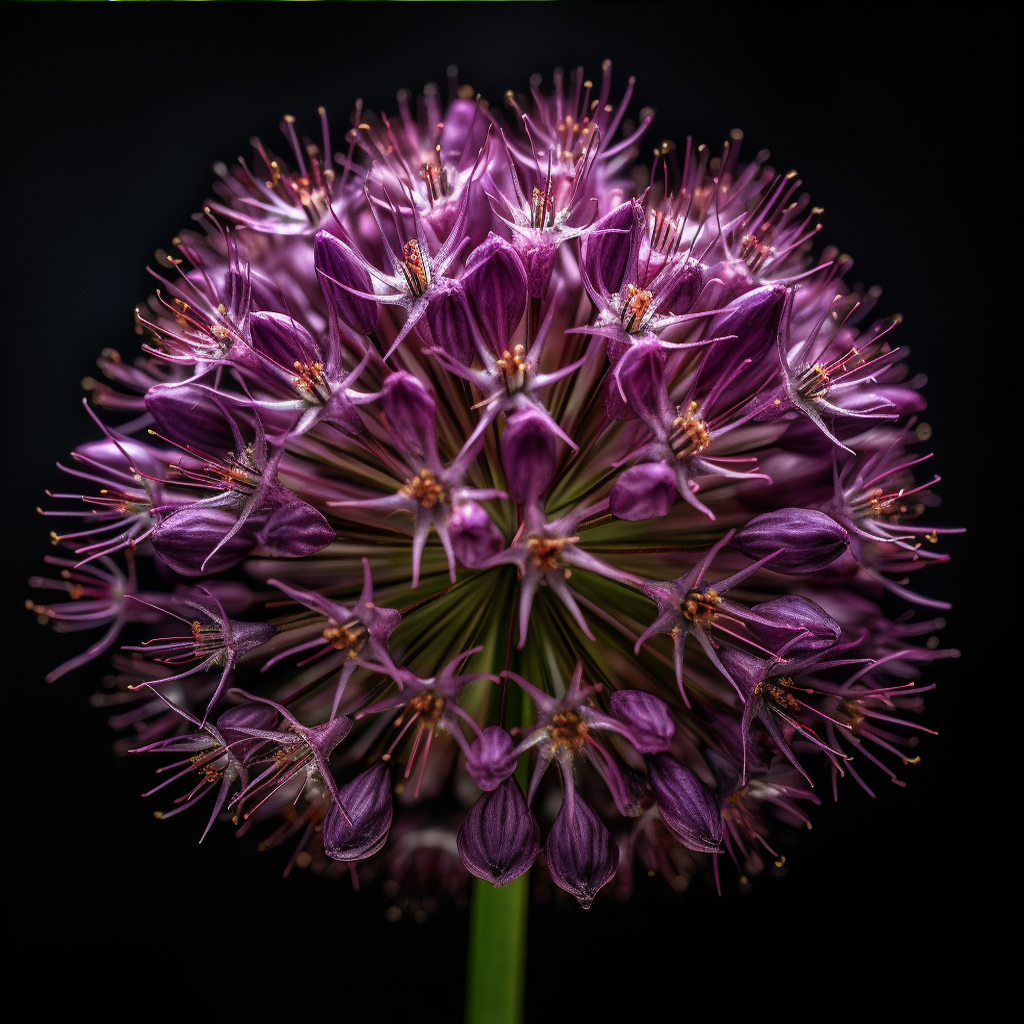
Allium sativum
The rennin-angiotensin system (RAS) has been implicated in the development of diabetic vascular complications. Peptidyl-dipeptidase A (angiotensin converting enzyme, ACE) has a major role in this system. The aim of the present study was to clarify the effect of intraperitoneal administration of aqueous garlic extract (Allium sativum) on the serum ACE activity of streptozotocin (STZ)-diabetic and nondiabetic rats.
Although garlic extract administration had no significant effect on serum glucose, it significantly strongly decreased the serum ACE activity. ACE activity was higher in diabetic than nondiabetic rats, but in diabetic animals treated with garlic extract, the elevation of ACE activity did not occur. These results suggest that garlic extract might have value as ACE inhibitor to prevent some vascular complications of diabetes mellitus.

Antrodia camphorata
The vasorelaxation of Antrodia camphorata mycelia: involvement of endothelial Ca(2+)-NO-cGMP pathway
Antrodia camphorata, a medicinal fungus, has been used to treat cardiovascular diseases such as hypertension for many years. The purpose of this study was to examine the effects of mycelia extracts, from five Antrodia camphorata strains, on vascular tension and underlying mechanisms were explored. In isolated rat aortic rings, accession B86 caused concentration-dependent vasorelaxation with maximal relaxation of 40.34 +/- 7.53% whereas accessions 35398, 35396 and B71 had mild vasorelaxing effects. Strain B85 evoked potent vasorelaxation, partly through an endothelium-dependent mechanism that was inhibited by Nomega-nitro-L-arginine and 1H-[1,2,4]oxadiazolo[4,3-a]quinoxaline-1-one (ODQ) but not by antagonist of K+ channels, tetraethylammonium. In cultured endothelial cells, B85 stimulated nitric oxide (NO) release and augmented the level of the intracellular Ca2+ concentration. HPLC and LC-MS-MS analysis revealed the presence of adenosine.
Our results suggest that B85 produced strongest vasorelaxation in aortic preparations among five test strains. B85 acts in part on endothelial cells by activating the Ca(2+)-NO-cGMP pathway to reduce smooth muscle tone. However, K+ channels had no apparent roles. Adenosine could possibly be involved in the endothelium-dependent pathway of B85-induced vasorelaxation.

Aronia mitchurinii
blood pressure-lowering properties of chokeberry (Aronia mitchurinii, var. Viking)
The blood pressure-lowering properties of lyophilized chokeberry juice and polyphenols were monitored using in vitro angiotensin-converting enzyme (ACE) inhibition measurement and a 10day in vivo study with spontaneously hypertensive rats (SHR). Juice and polyphenols indicated weak ACE-inhibitory activity. The IC 50 values for polyphenols and juice were 1.5–2.5 and 4.5mg dry matter/ml, respectively. In the SHR study the blood pressure-lowering effects of juice and polyphenol extract seemed to be short-term and were generally highest after 3h from administration (50mg/kg/day) when mean reductions in systolic blood pressure were 20±8 and 15±7mmHg, respectively.
Corresponding mean decreases in diastolic blood pressure were 23±6 and 13±2mm Hg in juice and polyphenol groups, respectively. It was concluded that both chokeberry juice and polyphenols had blood pressure-lowering effects. We hypothesize that chokeberry polyphenols enhance endothelial nitric oxide production with an ACE-independent mechanism, e.g. by activation of endothelial nitric oxidase enzyme; this is yet to be verified.

Artemisia herba
Cardiovascular effect of Artemisia herba alba aqueous extract in spontaneously hypertensive rats
This study aimed to evaluate the hypotensive activity of Artemisia herba alba aqueous extract (AHAE) in spontaneously hypertensive rats (SHR). AHAE was lyophilized and administered daily at a dose of 150 mg/kg for 20 days. AHAE administration produced a significant reduction in systolic blood pressure after 8 days of oral administration (P < 0.01), and a sustained reduction was observed at the end of treatment (P < 0.01). Heart rate remained unchanged during the 20 days of oral AHAE administration.
In addition, AHAE administration produced a significant increase in urinary output (P < 0.01) and glomerular filtration rate (P < 0.01) on day 8 of treatment. Urinary electrolyte excretion was also modified during the 20 days of AHAE administration, and a significant increase in urinary sodium and potassium excretion was observed from day 4 (P < 0.01) to day 20 (P < 0.001). However, urinary chloride excretion was increased from day 8 (P < 0.01) to the end of treatment (P < 0.001).
The hypotensive effect appeared to be independent of the renin–angiotensin system since AHAE did not affect plasma angiotensin-converting enzyme or renin activities (P > 0.05) after 20 days of oral administration. We conclude that AHAE possesses antihypertensive activity in SHR and that the underlying mechanism appears to involve, at least in part, an increase in urine and electrolyte output.
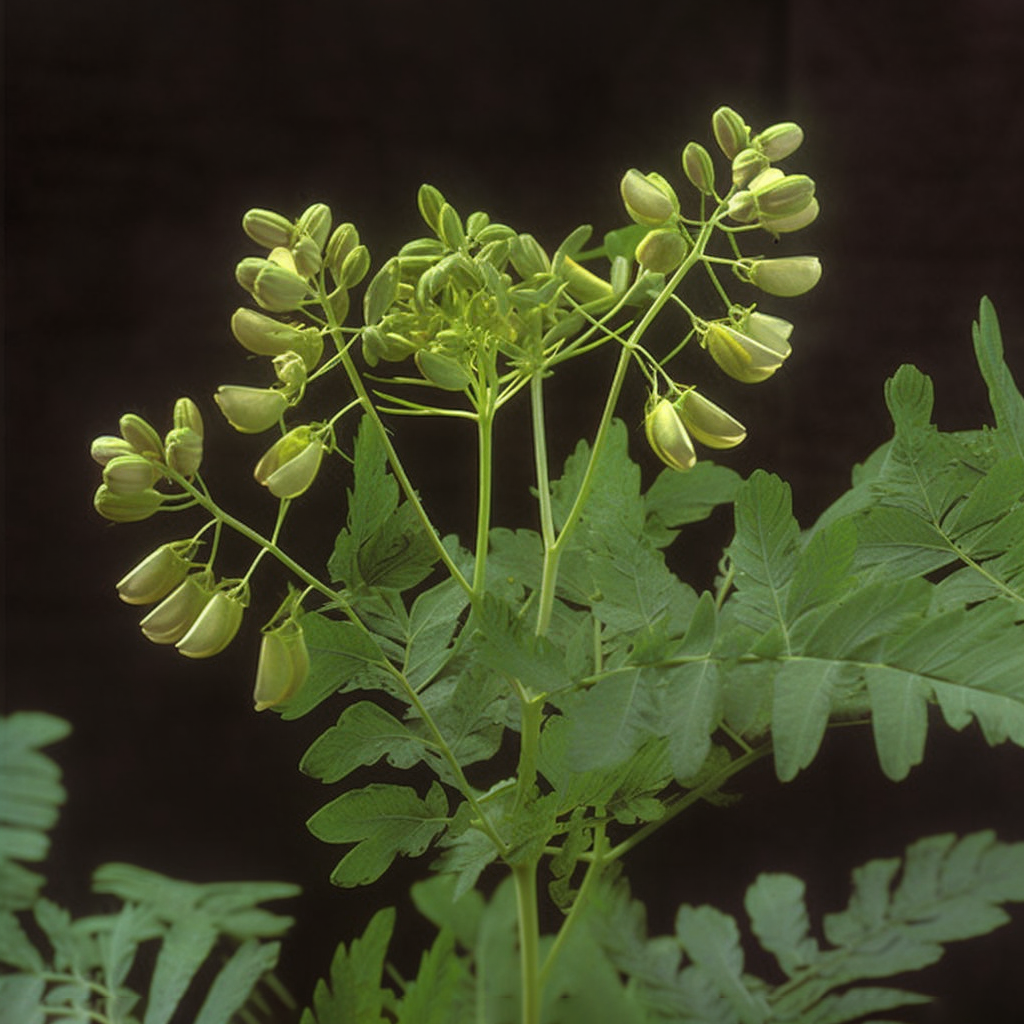
Astragalus complanatus
The objective of the present study was to examine further the underlying mechanism of the antihypertensive effect of the total flavonoid (TF), extracted from the seed of Astragalus complanatus R.Brown. Renovascular hypertension rats (RHR) were established by the two-kidney one clip (2K1C) method. The effect of TF on the contraction of portal vein was studied in an isolated preparation. The response of portal vein to angiotensin II (Ang II) was expressed as a percentage of the 100 mmol/l KCl induced maximum contraction. We took the dose-response curve of portal vein to Ang II (from 10(-9) to 10(-6) mmol/l) as the control and then observed the change of curve after TF and Valsartan (Ang II receptor blocker) administration. Ang II induced a concentration-dependent increase of the contraction amplitude (maximal increase, 46.53+/-5.15% of 100 mmol/l KCl induced contraction at Ang II 10(-6) mmol/l in RHR).
The Ang II-induced portal vein contraction was prevented by TF with a concentration related manner (maximal inhibition amplitude from 46.53+/-5.15% to 22.525+/-4.67% of 100 mmol/l KCl contraction at 10(-6)mmol/l Ang II and 3.12 x 10(-1) mg/l TF in RHR). The effect of TF on Ang II-induced portal vein contraction was similar to Valsartan.
These results showed that the antihypertensive action of TF was attributed to the dilation of vessels and is related to the blockade of the Ang II receptor.

Artemisia scoparza
We investigated the antihypertensive effects of Artemisia scoparia (AS) in spontaneously hypertensive rats (SHR). The rats were fed diets containing 2% (w/w) hot water extracts of AS aerial parts for 6 weeks. The AS group had significantly lower systolic and diastolic blood pressure levels than the control group. The AS group also had lower angiotensin I converting enzyme (ACE) activity and angiotensin II content in serum compared to the control group.
The AS group showed higher vascular endothelial growth factor and lower ras homolog gene family member A expression levels in kidney compared to the control group. The AS group had significantly lower levels of plasma lipid oxidation and protein carbonyls than the control group. One new and six known compounds were isolated from AS by guided purification.
The new compound was determined to be 4′-O-β-D-glucopyranoyl (E)-4-hydroxy-3-methylbut-2-enyl benzoate, based on its nuclear magnetic resonance and electrospray ionization-mass spectroscopy data.
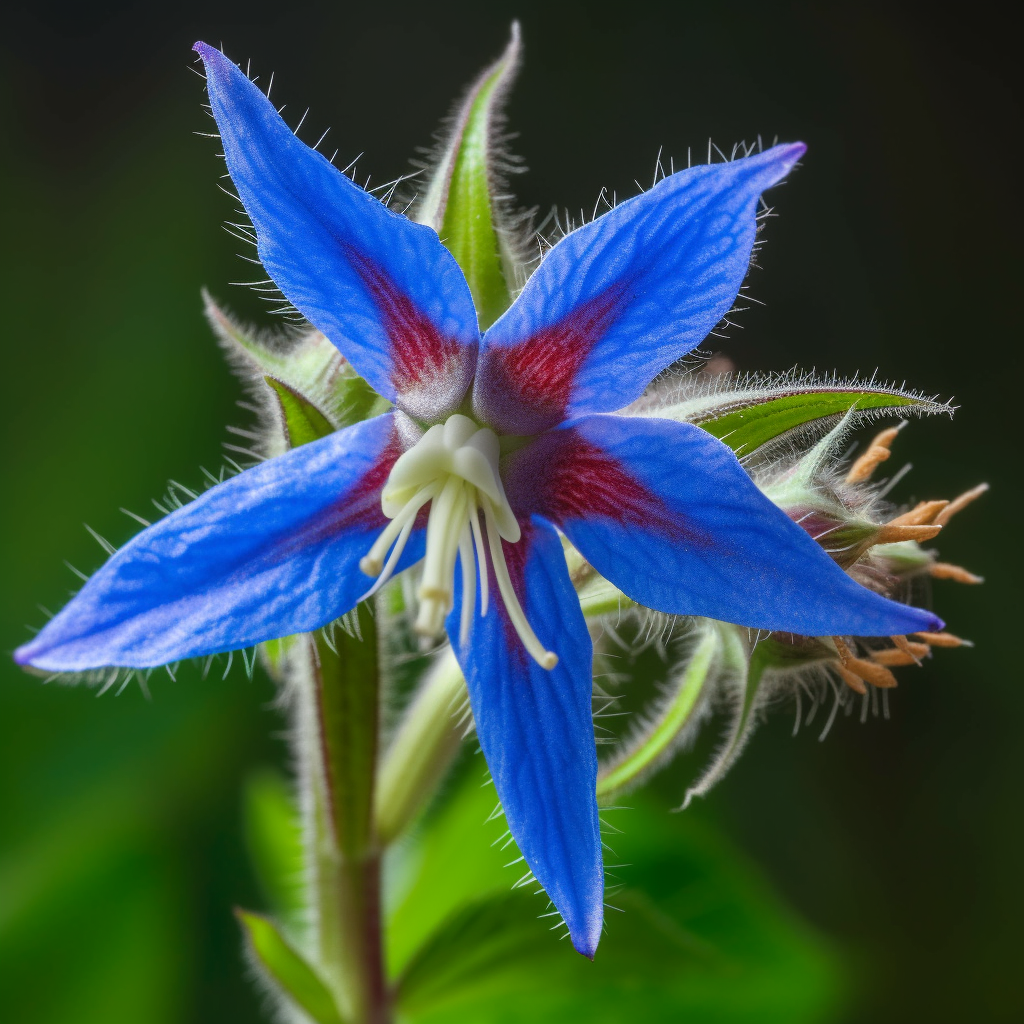
Borago officinalis
Aim of the study: In this study, we investigated the crude extract of Borago officinalis leaves (Bo.Cr) for its antispasmodic, bronchodilator, vasodilator and cardio-depressant activities to rationalize some of the traditional uses.
Materials and methods: Bo.Cr was studied using different isolated tissue preparations including rabbit jejunum, trachea, aorta, and guinea-pig atria.
Results: Bo.Cr which was tested positive for flavonoids, coumarins, sterols and tannins produced a concentration-dependent relaxation of spontaneous and K+ (80mM)-induced contractions in isolated rabbit jejunum preparations, suggestive of Ca++ antagonist effect, which was confirmed when pretreatment of the tissue with Bo.Cr produced a rightward shift in the Ca++ concentration-response curves like that caused by verapamil. In rabbit tracheal preparations, Bo.Cr relaxed the carbachol (1microM) and K+-induced contractions. Verapamil also produced non-specific inhibitory effect. In rabbit aorta preparations, Bo.Cr exhibited vasodilator effect against phenylephrine and K+-induced contractions similar to verapamil. When tested in guinea-pig atria, Bo.Cr caused inhibition of both atrial force and rate of contractions.
Conclusions: These results suggest that the spasmolytic effects of Bo.Cr are mediated possibly through Ca++ antagonist mechanism, which might explain the traditional use of Borago officinalis in hyperactive gastrointestinal, respiratory and cardiovascular disorders.

Buddleja crispa
Presence of blood-pressure lowering and spasmolytic constituents in Buddleja crispa
This aim of this study was to investigate the crude extract of Buddleja crispa (Bc.Cr) and its active constituent(s) for their antihypertensive and antispasmodic activities. The Bc.Cr caused a dose-dependent (3-10 mg/kg) fall in mean arterial pressure in rats under anesthesia. In rabbit aorta preparations, Bc.Cr (0.03-1 mg/mL) caused inhibition of high K(+) (80 mM) precontractions.
The Bc.Cr (0.03-1 mg/mL) also inhibited spontaneous and high K(+) precontractions in rabbit jejunum preparations, suggestive of calcium channel blocking (CCB) activity. CCB activity was further confirmed when pretreatment of the tissues with Bc.Cr (0.03-0.10 mg/mL) caused a rightward shift in Ca(++) concentration response curves, similar to verapamil. Among the pure compounds, BdI-H3 was more potent against the high K(+) than spontaneous contractions and was around eight times more potent than Bc.Cr against the spontaneous contractions while the other two compounds, BdI-2 and BH-3 were inactive.
Activity-directed fractionation revealed that the hexane fraction was more potent against K(+) precontractions. These data indicate that Bc.Cr possesses a blood-pressure lowering effect, mediated possibly through CCB, though additional mechanism(s) cannot be ruled out. Among the pure compounds, Bdl-H3 is likely to be the active compound involved in the spasmolytic and possibly BP lowering effect of the parent crude extract.

Cassia Seed
Objective: To assess the putative diuretic and antioxidant properties of Cassia occidentalis (C. occidentalis) leaves’ aqueous extract.
Methods: Adult rats were administered with C. occidentalis leaves aqueous extract acutely (24 h) and subchronically (7 d), at doses 80, 160, 240, 320, and 400 mg/kg (per os). Negative control group received only an equivalent volume of distilled water, while the two positive control groups received the diuretic drugs furosemide (20 mg/kg, ip.) and hydrochlorothiazide (HCTZ) (20 mg/kg, ip.). Urinary elimination of electrolytes in response to treatments was evaluated, together with changes in concentrations of creatinine, urea, aldosterone, glucose, and albumin in urine and plasma. Various urinary indicators of kidney function and plasmatic markers of oxidative stress were also assessed.
Results: The acute administration of C. occidentalis increased the urinary excretion of 107.58% at the higher dose tested, compared to negative control. The reference drugs furosemide and HCTZ induced increases of 84.27% and 48.05%, respectively. Acutely, the extract induced Na+ and Cl− elimination, whereas subchronically an increase in K+ elimination was also observed. The extract also improved the kidney function indexes and oxidative stress markers. These effects were dose-dependent and comparable with positive control observations.
Conclusions: Our findings strongly suggest that C. occidentalis aqueous extract has diuretic and antioxidant activities, and deserves further studies considering the potential for the treatment of hypertension.

Calycotome villosa
The present study was undertaken in normotensive anaesthetized male rats that received a continuous perfusionof a chrysin glucoside isolated from the flowers and leaves of Calycotome villosa subsp intermedia at a doseof 2.5 mg/kg, or furosemide (control diuretic) at a dose of 0.5 mg/kg. Compared with the control rats receivingNaCl (0.9%), the urine flow, glomerular filtration and electrolyte excretion (Na+++++, K+++++) increased significantlyin rats treated with chrysin glucoside (p<<<<< 0.001). A similar effect was observed in the rats perfused withfurosemide. Intravenous injections of bolus doses (1– 3 mg/kg) of the chrysin glucoside to anaesthetized ratselicited an immediate and dose-dependent decrease in mean arterial blood pressure (MABP).
Pretreatmentof the rats with the nitric oxide synthase inhibitor, L-NOArg (10 mg/kg), reduced partially, but significantly(p<<<<< 0.01), the maximal decrease in MABP elicited by chrysin glucoside. In the rat isolated aorta prepara-tion, chrysin glucoside inhibited in a concentration-dependent manner the noradrenaline induced contractions. This relaxant activity of chrysin glucoside was significantly reduced byincubation of the endothelium-intact rings with L-NOArg, (80 ±±±±± 4.7% vs 48 ±±±±± 5.06% in the absenceof L-NOArg).
In conclusion, these results demonstrate a diuretic and hypotensive action of a chrysin glucosidefrom Calycotome villosa in anaesthetized rats and indicating an action on renal function, and an activevascular relaxation mediated partially through nitric oxide release.
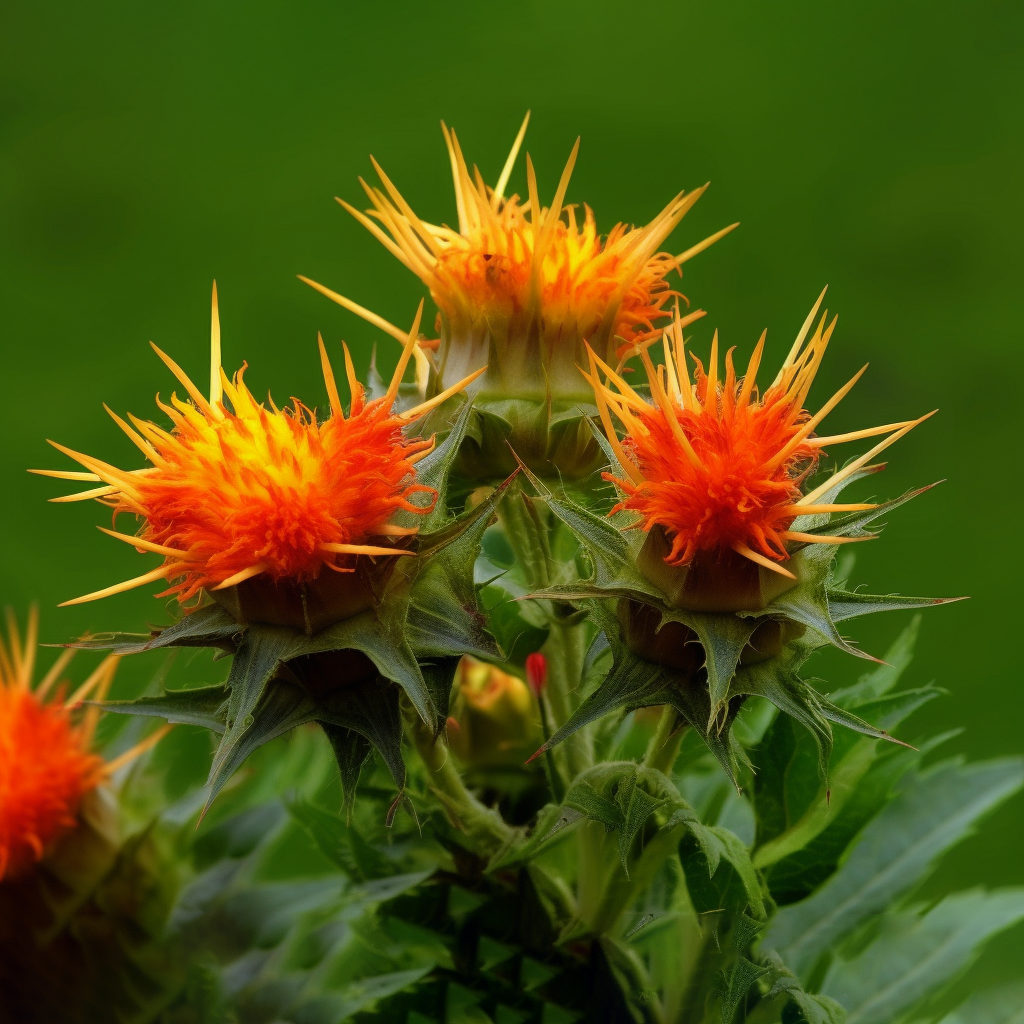
Carthamus tinctorius
Metabolic syndrome, such as diabetes mellitus, obesity, atherosclerosis, and high blood pressure (HBP), are closely linked pathophysiologically. However, current monotherapies for metabolic syndrome fail to target the multifactorial pathology via multiple mechanisms, as well as resolving the dysfunctionality of the cells and organs of the body. We aimed to provide a comprehensive and up-to-date review of the pharmacological advances, therapeutic potential, and phytochemistry of Salvia miltiorrhiza, Carthamus tinctorius, and Danhong injection (DHI).
We discussed the molecular mechanisms of the bioactive constituents relating to diabetes mellitus and metabolic disease for further research and drug development. Interestingly, Salvia miltiorrhiza, Carthamus tinctorius, and DHI have anti-inflammatory, anti-glycemic, anti-thrombotic, and anti-cancer properties; and they mainly act by targeting the dysfunctional vasculatures including the inflammatory components of the disease to provide vascular repair as well as resolving oxidative stress. The major bioactive chemical constituents of these plants include polyphenolic acids, diterpene compounds, carthamin, and hydroxysafflor yellow A.
Treatment of diabetes mellitus and its associated cardiovascular complication requires a comprehensive approach involving the use of appropriate traditional Chinese medicine formula. Danshen, Honghua, and DHI target the multiple risk factors regulating the physiologic function of the body and restore normalcy, apart from the traditional advice on exercise and diet control as treatment options in a metabolic syndrome patient.
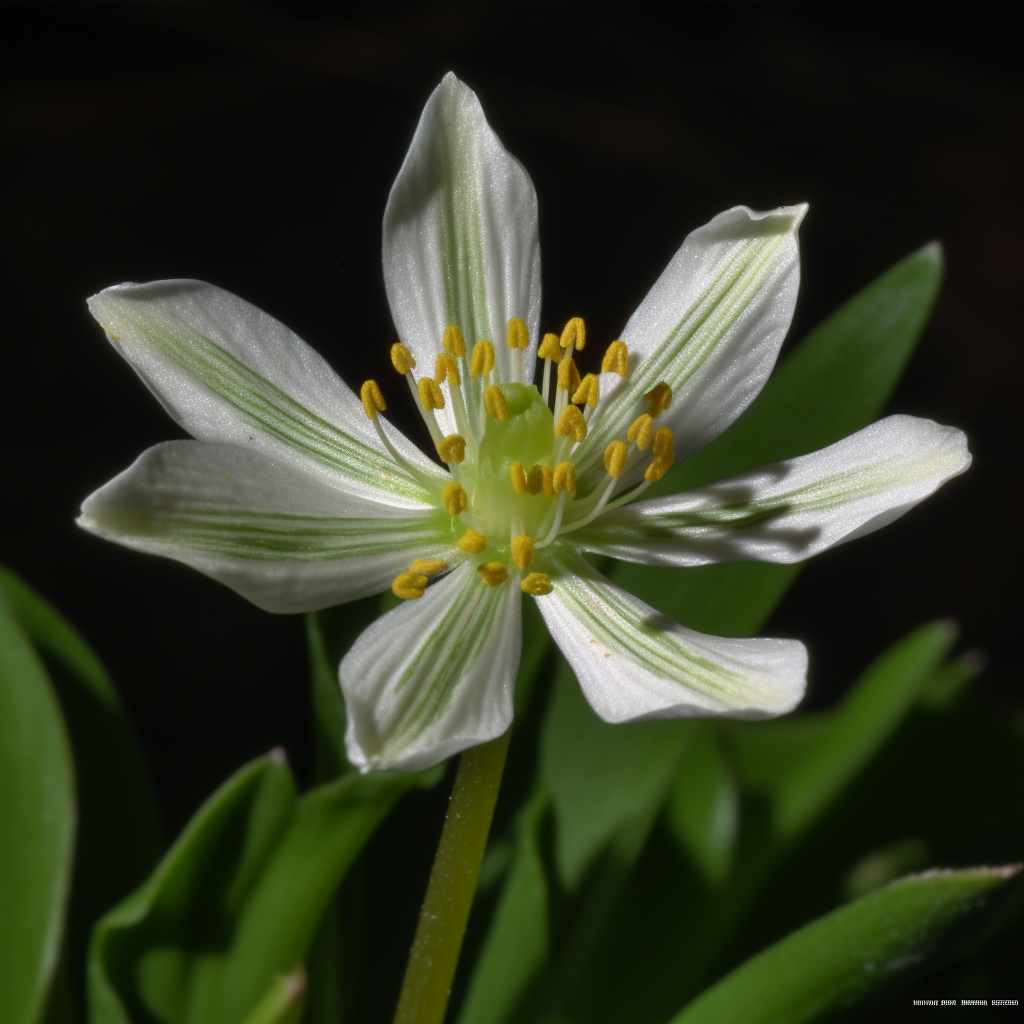
Coptis chinensis
Left ventricular hypertrophy (LVH) is an important characteristic of hypertensive heart disease. Renin-angiotensin system (RAS) blockers have been shown to be effective drugs for the reversal of LVH. Clinical and experimental studies have shown that Zi Shen Huo Luo Formula (ZSHLF) can improve the efficacy of perindopril in the treatment of hypertensive LVH, but its mechanism is unclear. This study aimed to investigate the possible mechanism to improve the efficacy of perindopril. First, we identified 23 compounds in ZSHLF by ultra performance liquid chromatography/tandem mass spectrometry (UPLC-MS/MS) analysis, among which ferulic acid, caffeic acid, vanillic acid, berberine, rutin, quercetin, kaempferol, stachydrine, and tiliroside have been reported to reduce blood pressure and exhibit cardioprotective effects.
Second, we treated spontaneously hypertensive rats (SHRs) with perindopril and ZSHLF for 12 continuous weeks and found that chronic use of perindopril could increase the aldosterone (ALD) levels and cause aldosterone breakthrough (ABT). ZSHLF combined with perindopril reduced the ALD levels, interfered with ABT, decreased blood pressure, improved left ventricular diastolic dysfunction, and decreased the collagen volume fraction; these effects were superior to those of perindopril alone. In vitro experiments, ALD-induced cardiomyocytes (H9c2 cells) and cardiac fibroblasts were treated with ZSHLF-containing serum, which suppressed ALD-induced cardiomyocyte hypertrophy and cardiac fibroblast proliferation, increased mineralocorticoid receptor (MR) and Cav-1 colocalization and decreased phosphorylated epidermal growth factor receptor (pEGFR) and phosphorylated extracellular signal-regulated kinase (pERK) protein expression the cells. In conclusion, ZSHLF can interfere with ABT and affect the pathological role of ALD by affecting MR and Cav-1 interactions and EGFR/ERK signaling pathway.
These effects represent a possible mechanism by which ZSHLF improves the efficacy of angiotensin-converting enzyme inhibitors (ACEIs) in hypertensive LVH treatment. However, the major bioactive components or metabolites responsible for the effects and the implications of these findings in patients need further verification.

Catharanthus roseus
The leaves extract of Catharanthus roseus was investigated for hypotensive and hypolipidemic effects in adrenaline-induced hypertensive rats (AIHR) and compared with those of Atenolol in a crossover design. The pharmacologically Active components responsible for hypotensive activities were isolated from plant using bioassay guided purification approach and the structure of the compounds was proposed by spectroscopic methods. Catharanthus roseus leaves extract and commercial drug Atenolol were administered through intraperitoneal (i.p) route for one week.
Different biochemical parameters such as heart weight, blood glucose level, serum cholesterol level, serum triglyceride level, body weight and the relationships between them were measured. Catharanthus roseus leaves extract at a dose of 30 mg/155+/-15 gm of body weight was injected in rat at every morning during the treatment period. The dose of Atenolol was determined according to its pharmacokinetic parameters.
Clinically effective plasma concentration as a hypotensive drug was obtained after the injection of 0.1 mg/155+/-15 gm of body weight of the drug. The Catharanthus roseus leaves extract made significant changes in each cardiovascular parameter after investigation. Catharanthus roseus leaves extract treated animals have shown the hypotensive effects. Hypotensive effects were also shown by Atenolol.

Cecropia pachystachya
Cecropia pachystachya Mart. is popularly called “ambay” and extensively used in herbal medicine of South America for cough and asthma. In Argentina it grows in neotropical rainforest (Ntr C.p.) and in a temperate region (Tp C.p.). In a previous work we showed their hypotensive properties with different potency and toxicity, and now we studied the Tp C.p. effects in isolated heart from rats and central effects of both plants on the open-field test for mice. Tp C.p. produced a positive inotropic effect on isolated rat hearts, which was not affected by 1 microM propranolol, suggesting that it is not due to a beta-adrenergic effect.
In contrast, it was prevented by pretreatment with high [K](o) media, which stimulates the Na,K-ATPase pump, suggesting an inhibition of the pump by “ambay”, as digital do. In the open-field test, both Ntr C.p. and Tp C.p. similarly decreased the spontaneous locomotion and exploratory behavior of mice at doses between 180 and 600 mg/kg. Ntr C.p. potentiated the effect of 3 mg/kg diazepam to one similar to 10 mg/kg diazepam, but was not antagonized by 0.5 mg/kg flumazenil. Amphetamine at 5 mg/kg prevented the sedative effect of Ntr C.p. Chromatographic analysis showed that both plants have a qualitatively similar fingerprint but quantitatively differed in at least three components.
Although the purpose was not to identify them, both plants have at least 10 compounds. Two of them were in higher amount in Tp C.p. than in Ntr C.p., and then, they could be responsible for the cardiovascular toxicity of Tp C.p. In conclusion, the results suggest that ambay has cardiotonic and sedative properties. The sedative effect could be useful in cough treatment. The extract resulted additive to benzodiazepines but it did not bind to the same site on GABA-A receptor, and it was interfered by the dopamine release produced with amphetamine.

Cirsium japonicum
Cirsium japonicum De Candole is widely used in traditional herbal medicine for the treatment of hemorrhage, hypertension or blood circulation in Korea. In this work, we investigated the vasorelaxant activity of an aqueous extract of C. japonicum whole plant (CjEx) and its possible mechanism in isolated rat thoracic aortic rings constricted with norepinephrine (NE; 300 nmol/l). CjEx elicited an acute relaxation in endothelium-intact rings in a concentration-dependent manner (0.1-1.0 mg/ml).
This relaxation was eliminated by the removal of the endothelium and pretreatment with N(G)-nitro-L-arginine (10 micromol/l), methylene blue (1 micromol/l) or diphenylhydramine (10 micromol/l), but indomethacin (10 micromol/l) atropine (100 nmol/l), [D-Pro(2), D-Trp(7,9)] substance P (5 micromol/l) or HOE-140 (10 nmol/l) did not affect the relaxation. The results indicate that the response to CjEx involves enhancement of the nitric oxide-cyclic guanosine monophosphate system, and that it occurs via histamine H(1)-receptor. Our findings may contribute to better understanding of the potential link between the clinical use and its beneficial effects on vascular health.
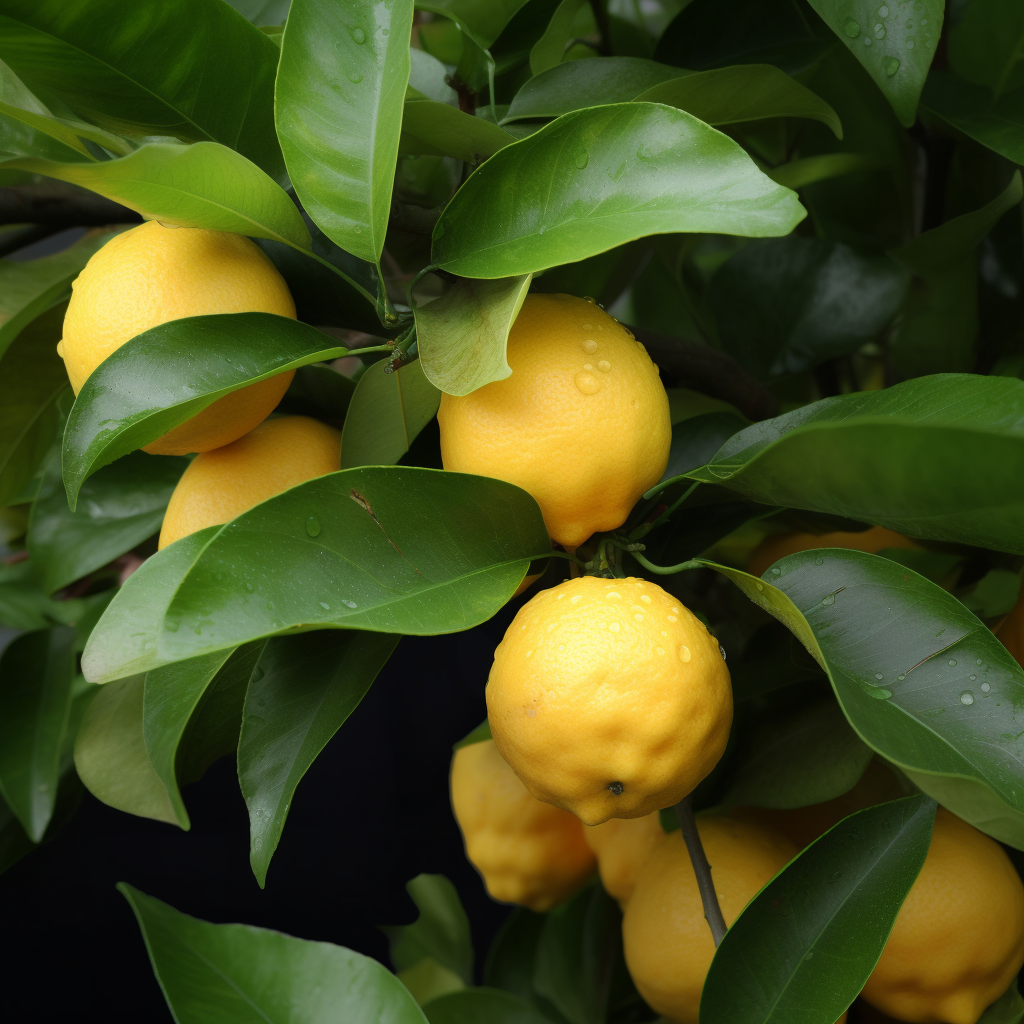
Citrus limetta
Citrus limetta leaves extract antagonizes the hypertensive effect of angiotensin II
Ethnopharmacological relevance: Citrus limetta Risso (Rutaceae) is widely used in Mexico for healing purposes, among them as antihypertensive treatment.
Aim of the study: To assess the antihypertensive effect of C. limetta leaves as one of its ethnomedical uses.
Materials and methods: The acute response of blood pressure to angiotensin II administration was measured in mice. Additionally, the acute oral toxicity profiles were determined.
Results: The findings of the current investigation showed that different concentrations of the aqueous extract prevented the raise of systolic blood pressure (p< or =0.001 vs. vehicle), diastolic blood pressure (p< or =0.0002 vs. vehicle) and mean blood pressure (p< or =0.0000 vs. vehicle); with a dose dependent effect for diastolic pressures at 125-500mg/kg dosages. The 500 and 1000mg/kg doses inhibited the action of Ang II in similar extent to telmisartan. Toxic signs or deaths were not observed in mice treated at 2000mg/kg of C. limetta extract.
Conclusions: All doses of C. limetta aqueous extract, used in this assay, were safe and effective.
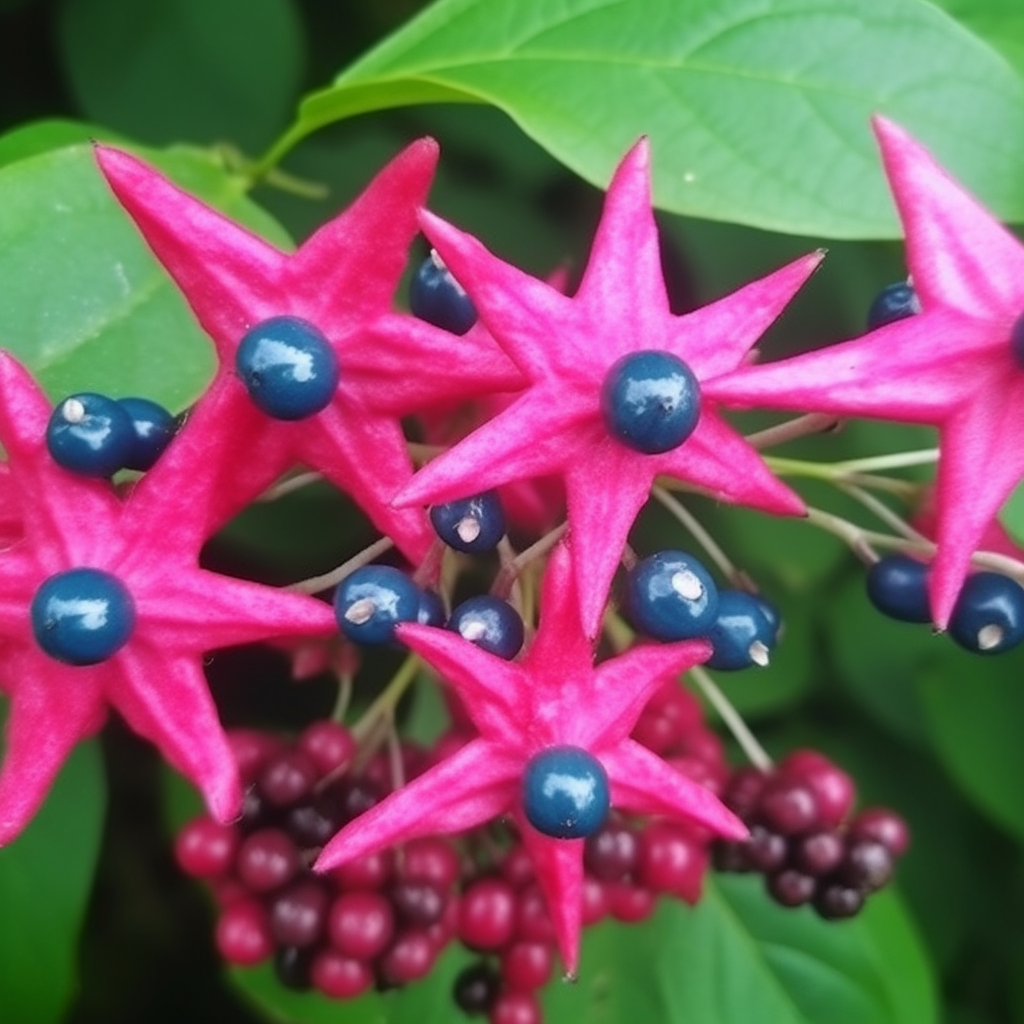
Clerodendron trichotomum
angiotensin converting enzyme inhibitory phenylpropanoid glycosides from Clerodendron trichotomum
The stems of Clerodendron trichotomum have been traditionally used for treatment of hypertension in far East Asia including China, Korea, and Japan. Bioassay-guided fractionation and purification of the EtOAc-soluble extract of Clerodendron trichotomum afforded acteoside (1), leucosceptoside A (2), martynoside (3), acteoside isomer (4), and isomartynoside (5). The angiotensin converting enzyme (ACE) activities were significantly inhibited by the addition of these phenylpropanoid glycosides (1-5) in a dose-dependent manner of which IC(50) values were 373+/-9.3 microg/ml, 423+/-18.8 microg/ml, 524+/-28.1 microg/ml, 376+/-15.6 microg/ml, 505+/-26.7 microg/ml, respectively.
These results suggest that the antihypertensive effect of Clerodendron trichotomum may be, at least in part, due to ACE inhibitory effect of phenylpropanoid glycosides.
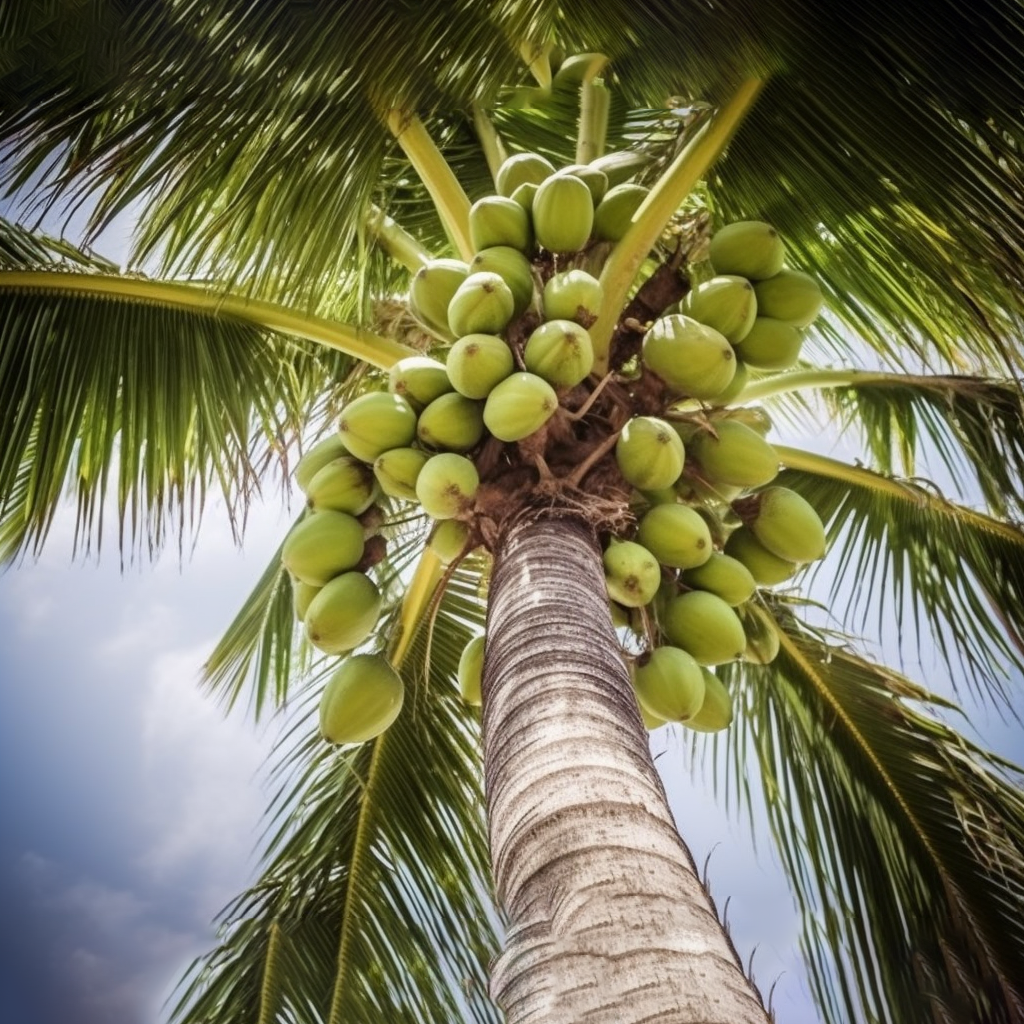
Cocos nucifera
Ethnopharmacological relevance: The fruits of Cocos nucifera Linn. (Arecaceae) have long been used in traditional medicine for the treatment of cardio-metabolic disorders.
Aim of the study: To evaluate the ethanolic extract of Cocos nucifera Linn. endocarp (CNE) for its vasorelaxant activity on isolated rat aortic rings and antihypertensive effects in deoxycorticosterone acetate (DOCA) salt-induced hypertensive rats.
Materials and methods: Cocos nucifera Linn. endocarp was extracted with ethanol and characterized by HPLC. CNE was examined for its in vitro vascular relaxant effects in isolated norepinephrine, phenylephrine or potassium chloride pre-contracted aortic rings (both intact endothelium and denuded). In vivo anti-hypertensive studies were conducted in DOCA salt-induced uninephrectomized male Wistar rats.
Results: Removal of endothelium or pretreatment of aortic rings (intact endothelium) with l-NNA (10μM) or ODQ (10 μM) followed by addition of contractile agonists prior to CNE significantly blocked the CNE-induced relaxation. Indomethacin (10μM) and atropine (1 μM) partially blocked the relaxation, whereas glibenclamide (10 μM) did not alter it. CNE significantly reduced the mean systolic blood pressure in DOCA salt-induced hypertensive rats (from 185.3 ± 4.7 mmHg to 145.6±6.1 mmHg). The activities observed were supported by the polyphenols, viz. chlorogenic acid, vanillic acid and ferulic acid identified in the extract.
Conclusions: These findings reveal that the vasorelaxant and antihypertensive effects of CNE, through nitric oxide production in a concentration and endothelium-dependent manner, is due to direct activation of nitric oxide/guanylate cyclase pathway, stimulation of muscarinic receptors and/or via cyclooxygenase pathway.

Crataegus pinnatifida
Hawthorn leaves, flowers and fruits are used to treat mild hypertension alone or in conjunction with prescribed drugs. In a pilot study of mild hypertension, there were promising hypotensive responses to 500 mg of hawthorn per day after 10 weeks. Walker et al. [25] investigated the effects of hawthorn for hypertension in patients with type II diabetes.
Results showed there was a significant group difference in mean diastolic blood pressure reductions (P = 0.035): the hawthorn group showed greater reductions (baseline: 85.6 mmHg, 95% confidence interval [CI] = 83.3 to 87.8; outcome: 83.0 mmHg, 95% CI = 80.5 to 85.7) than the placebo group (baseline: 84.5 mmHg, 95% CI = 82 to 87; outcome: 85.0 mmHg, 95% CI = 82.2 to 87.8). There was no group difference in systolic blood pressure reduction from baseline (3.6 and 0.8 mmHg for hawthorn and placebo groups, respectively; P = 0.329).
In a double-blind, placebo-controlled clinical trial to determine the effects of the C. curvisepala leaves and flowers for mild hypertension, results showed a significant decrease in both systolic and diastolic blood pressure after 3 months (p < 0.05), and a time-dependent antihypertensive effect [26].
The mechanism for hypotension of Hawthorn is regard to be related to the inhibition of Angiotensin I – Converting Enzyme (ACE), which is considered to be a useful therapeutic approach in the treatment of high blood pressure. Within the enzyme cascade of the renin–angiotensin system, ACE removes histidyl-leucine from angiotensin I to form the octapeptide angiotensin II, which is one of the most potent vasoconstrictors. Angiotensin II also stimulates the synthesis and release of aldosterone which promotes sodium and water retention, resulting in increasing of blood pressure[27].
Using an in vitro ACE-inhibition assay, Inokuchi et al. [28] found ACE-inhibitory fractions in Hawthorn fruits. Lacaille-Dubois et al.[29] found flavonoids and proanthocyanidins from the flowers and leaves of C. oxyacantha/ monogyna demonstrated inhibitory activity at 0.33 mg/ml, while phenolic acids showed no significant ACE-inhibition.
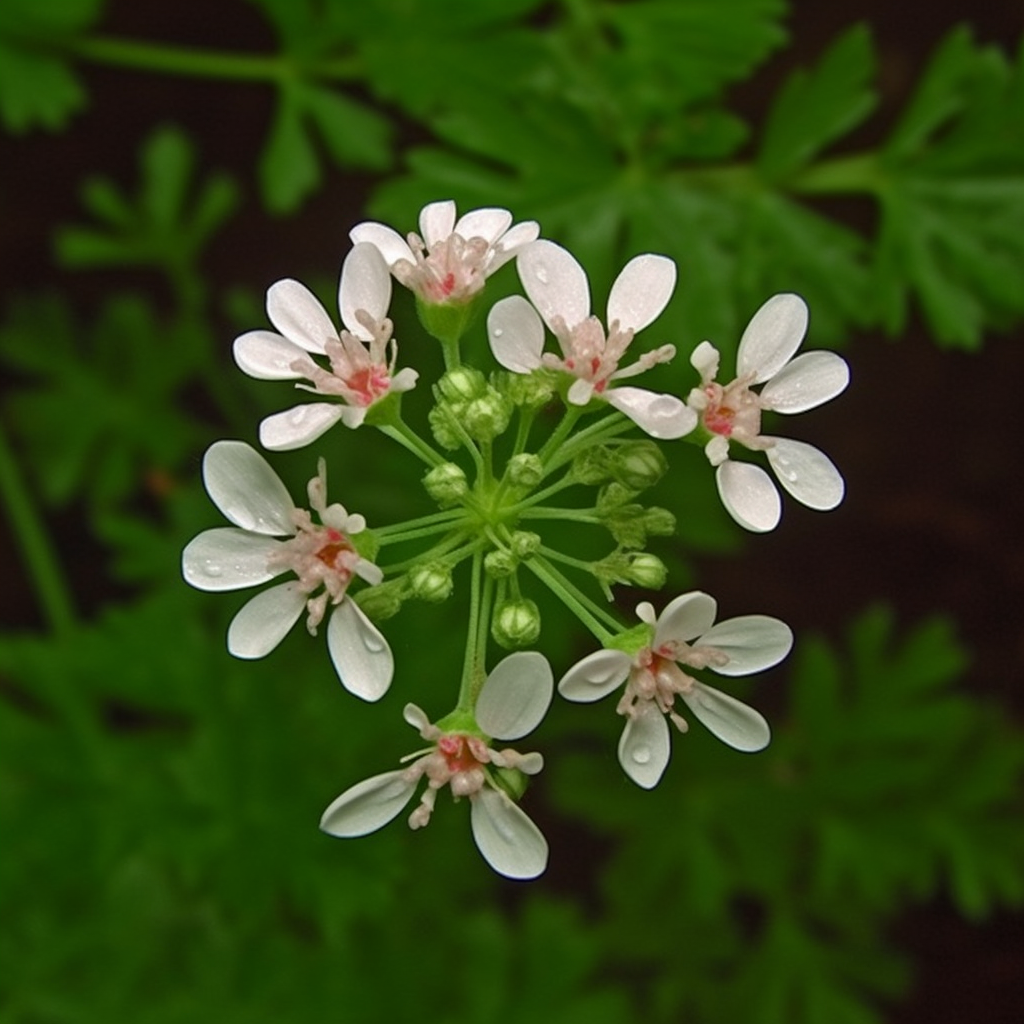
Coriandrum sativum
Coriander fruit exhibits gut modulatory, blood pressure lowering and diuretic activities
Aim of the study: Coriander (Coriandrum sativum) is traditionally used for various gastrointestinal and cardiovascular disorders and this study was designed to rationalize its use in dyspepsia, abdominal colic, diarrhea, hypertension and as diuretic.
Materials and methods: Coriander crude extract (Cs.Cr) was evaluated through in vitro and in vivo techniques.
Results: Cs.Cr caused atropine sensitive stimulatory effect in isolated guinea-pig ileum (0.1-10 mg/ml). In rabbit jejunum preparations, Cs.Cr evoked a similar contractile response but in the presence of atropine, it exhibited relaxation against both spontaneous and high K(+) (80 mM)-induced contractions as well as shifted the Ca(2+) concentration-response curves to right, similar to that caused by verapamil. Cs.Cr (1-30 mg/ml) caused fall in arterial blood pressure of anesthetized animals, partially blocked by atropine. Cs.Cr produced vasodilatation against phenylephrine and K(+) (80 mM)-induced contractions in rabbit aorta and cardio-depressant effect in guinea-pig atria. Cs.Cr produced diuresis in rats at 1-10mg/kg. Bio-assay-directed fractionation revealed the separation of spasmogenic and spasmolytic components in the aqueous and organic fractions respectively.
Conclusions: These results indicate that coriander fruit exhibits gut stimulatory, inhibitory and hypotensive effects mediating possibly through cholinergic, Ca(2+) antagonist and the combination of these mechanisms respectively. diuretic activity adds value to its use in hypertension.
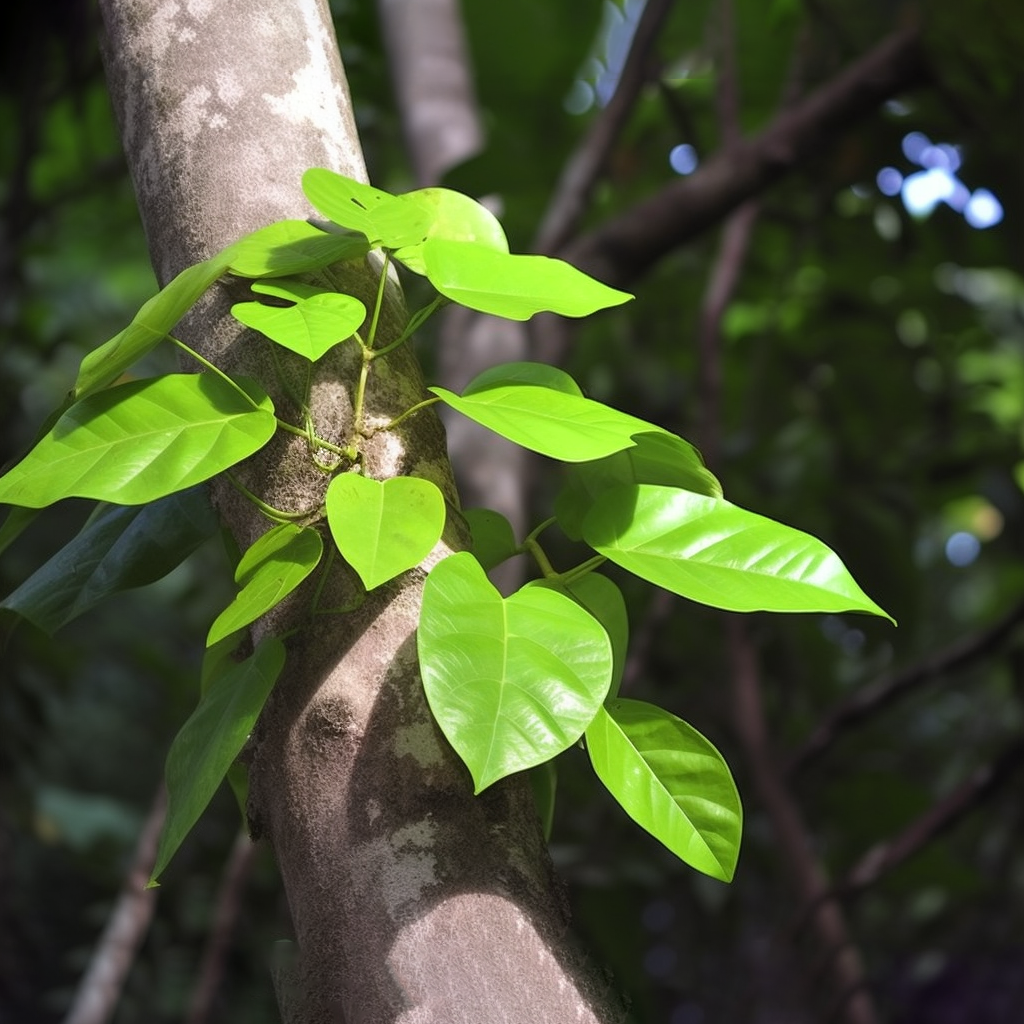
Coscinium fenestratum
Hypotensive effect and toxicology of the extract from Coscinium fenestratum (Gaertn.) Colebr
The water extract from Coscinium fenestratum (Gaertn.) Colebr. (CF extract) was tested for hypotensive and vasorelaxant effects. Acute and subchronic toxicity as well as motor activity of CF extract were also evaluated. The present study demonstrates that CF extract is effective in reducing blood pressure in anesthetized normotensive rats. This effect is shown to be dose-related and rapid in onset. The extract showed an endothelium-dependent and independent vasorelaxant activity in isolated aortic rings precontracted with phenylephrine (1 microM) and KCl (60 mM). The capacity of L-NAME (100 microM), an inhibitor of nitric oxide synthase, to reduce the vasorelaxant action of the extract indicates the involvement of nitric oxide.
In the acute toxicity test, an oral dose of 5000 mg/kg of the CF extract did not produce mortality or significant changes of the general behavior of animals and gross appearance of internal organs of rats. Similarly, in the subchronic toxicity test, an oral dose of 2500 mg/kg/day of the CF extract given to rats for 90 days did not cause any significant change of any of the parameters observed when compared with those of the control animals. Moreover, the CF extract did not produce any effect on the central nervous system when spontaneous motor activity in rats was assessed.
However, because some average hematological and blood chemistry values were found to be statistically different, further studies, including chronic toxicity test, should be done to confirm the safety of this plant when it is used over a long period of time.
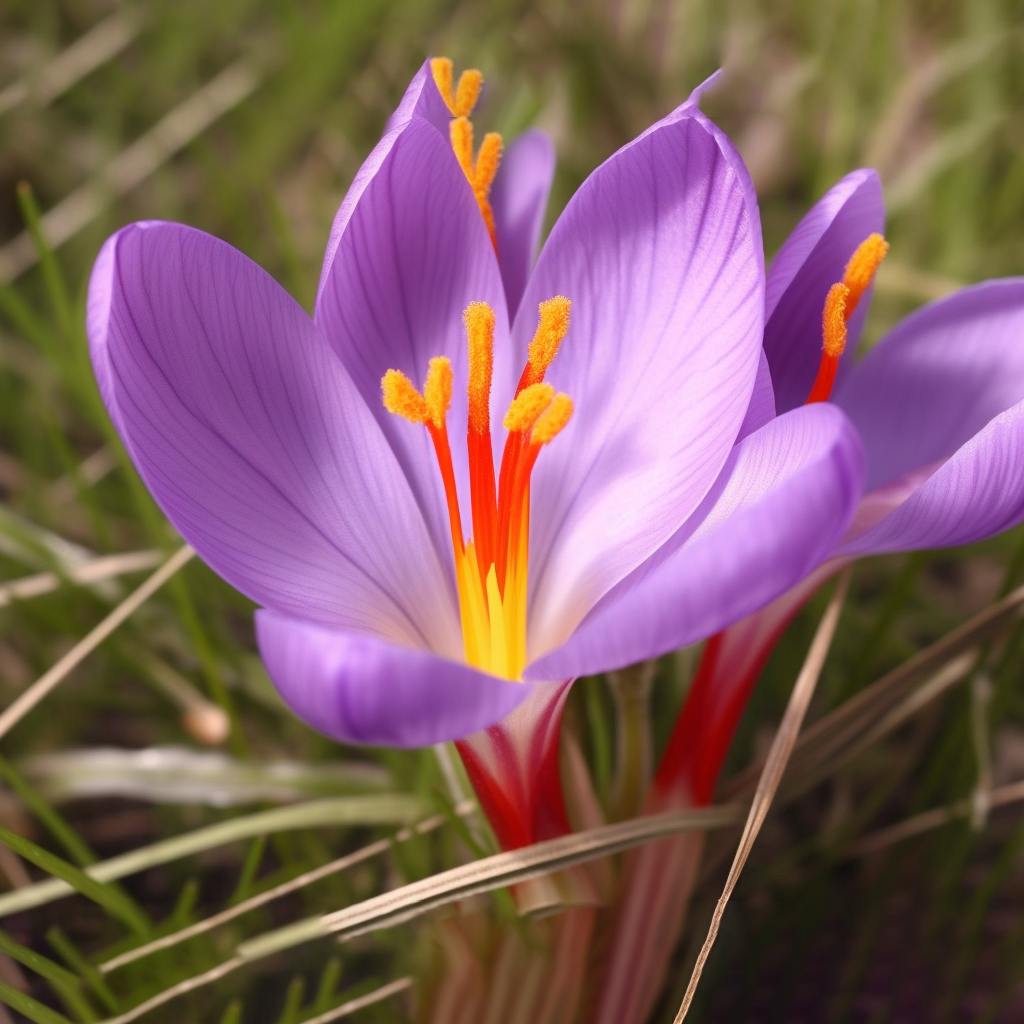
Crocus sativus
In this study, the effects of saffron (Crocus sativus) stigma aqueous extract and two active constituents, crocin and safranal, were investigated on blood pressure of normotensive and desoxycorticosterone acetate-induced hypertensive rats. Three doses of crocin (50, 100 and 200 mg/kg), safranal (0.25, 0.5 and 1 mg/kg) and the aqueous extract (2.5, 5 and 10 mg/kg) were administered intravenously in different groups of normotensive and hypertensive animals and their effects on mean arterial blood pressure (MABP) and heart rate (HR) were evaluated. The aqueous extract of saffron stigma, safranal and crocin reduced the MABP in normotensive and hypertensive anaesthetized rats in a dose-dependent manner. For example, administrations of 10 mg/kg of aqueous extract, 1 mg/kg of safranal and 200 mg/kg of crocin caused 60 +/- 8.7, 50 +/- 5.2 and 51 +/- 3.8 mmHg reductions in MABP, respectively.
It can be concluded that the aqueous extract of saffron stigma has hypotensive properties which appear to be attributable, in part, to the actions of two major constitutes of this plant, crocin and safranal. It seems that safranal is more important than crocin for lowering down blood pressure of rats.
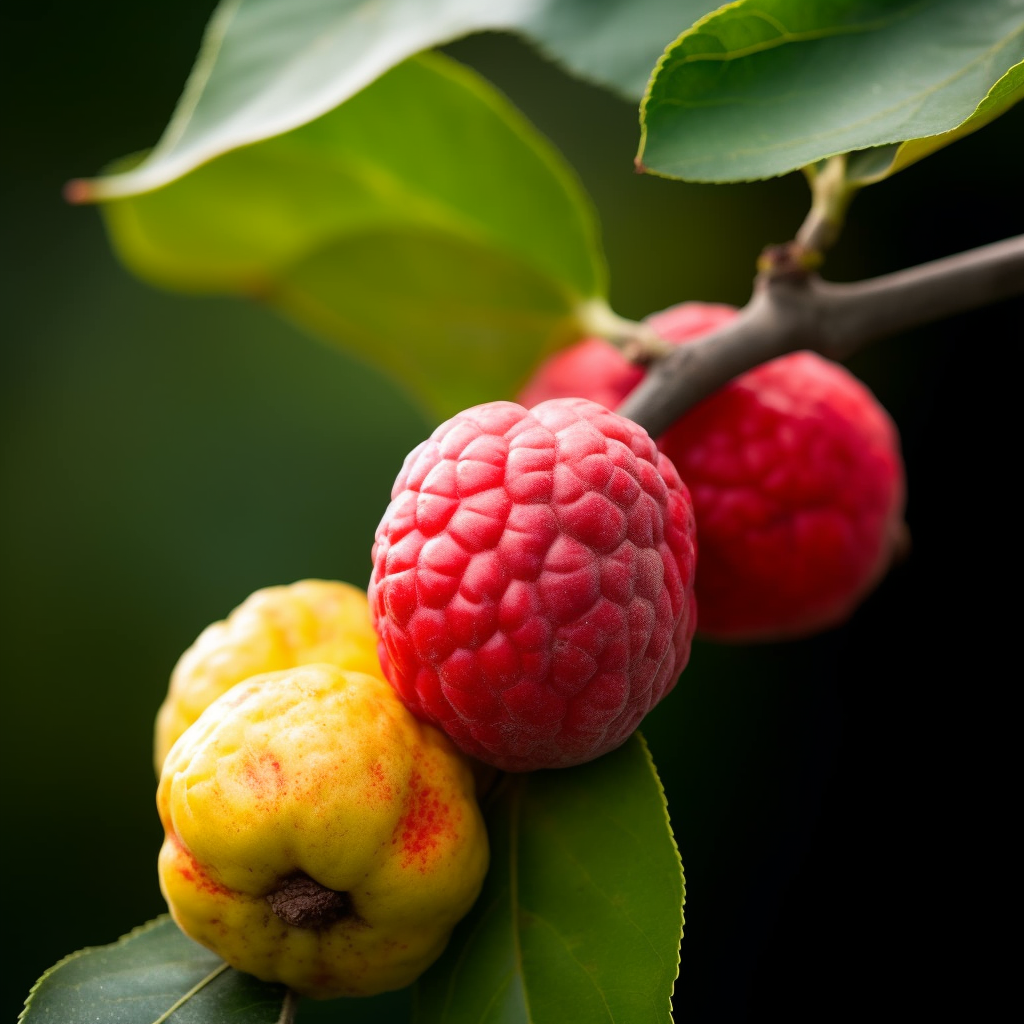
Cudrania tricuspidata
A pharmacological inhibition of nitric oxide synthase (NOS) in rats for 4-6 weeks produces renal vasoconstriction, renal dysfunction, and severe hypertension. The present study was aimed at investigating whether Cudrania tricuspidata (C. tricuspidata) water extract ameliorates N(G)-Nitro-L-arginine methylester (L-NAME)-induced hypertension. Treatment of L-NAME (60 mg/L drinking water, 4 weeks) causes a sustained increase in systolic blood pressure (SBP). The concentration of plasma NO metabolites and NO/cGMP productions in the vascular tissues of the L-NAME-treated group were significantly reduced as compared with those in the control. C. tricuspidata water extract blocked increase of SBP in the L-NAME-treated group and restored SBP to normal level. Futhermore, C. tricuspidata water extract was able to preserve the vascular NO/cGMP production and plasma NO metabolites concentration.
However, there are no changes in the expression of ecNOS and iNOS of thoracic aorta among the rats of control, L-NAME-treated group, and L-NAME and C. tricuspidata water extract co-treated group. The urinary sodium level, urine volume, and creatinine clearance were significantly higher in rats co-treated with C. tricuspidata water extract and L-NAME than in L-NAME-treated group.
Taken together, these results suggest that C tricuspidata water extract prevents the increase of SBP in the L-NAME-induced hypertension that may have been caused by enhanced generation of vascular NO/cGMP.

Cuscuta japonica
angiotensin converting enzyme inhibitors from Cuscuta japonica Choisy
Bioassay-guided fractionation of the EtOAc-soluble extract of Cuscuta japonica afforded 3,5-Di-O-caffeoylquinic acid (1). methyl 3,5-Di-O-caffeoylquinate (2). 3,4-Di-O-caffeoylquinic acid (3). and methyl 3,4-Di-O-caffeoylquinate (4). Purification of these compounds was conducted with the application of various chromatographic methods. The structures of the compounds were elucidated on the basis of MS and NMR data analysis. Compounds 1-4 inhibited the angiotensin I converting enzyme activity in a dose-dependent manner.
Compounds 1-4 showed the 50% inhibitory concentration values of 596, 483, 534, and 460 micro M, respectively. The presence of these active components may be responsible, at least in part, for the antihypertensive action of traditional crude drug Cuscuta Semen.
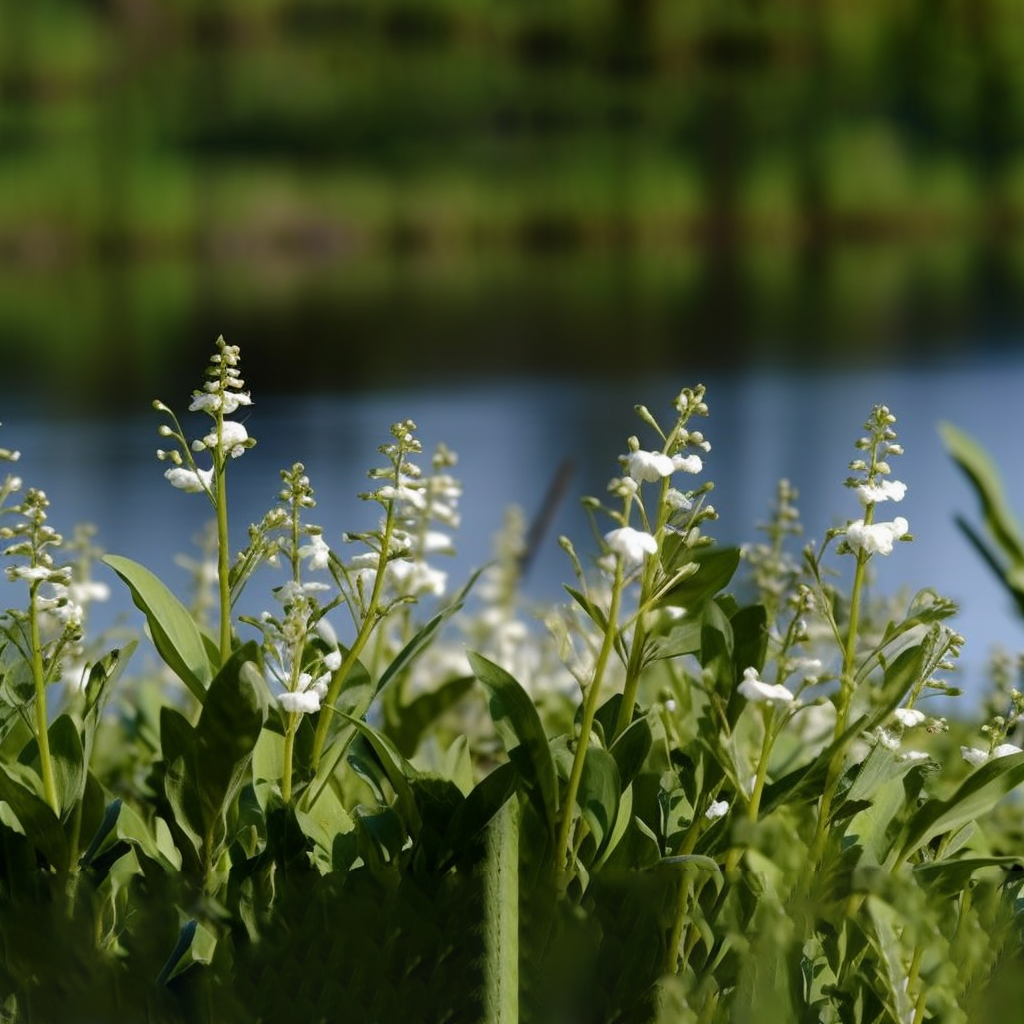
Echinodorus grandiflorus
We investigated the vascular effects of a crude aqueous extract (AEEG) of Echinodorus grandiflorus (Alismataceae) using the in vitro experimental models of the rabbit isolated aorta and perfused kidney. Echinodorus grandiflorus, a native semi-aquatic plant widely distributed in Brazil, has been extensively used in Brazilian folk medicine for the treatment of high blood pressure and inflammatory diseases. The bolus injection of AEEG (0.1-10 mg) into the rabbit renal circulation pre-contracted with norepinephrine induced marked and dose-dependent vasodilator responses (maximum of 37+/-4%; n=6; P<0.001), which was similar to that induced by injection of 10 mmol acetylcholine (41+/-3%). Moreover, AEEG elicited a significant and concentration-dependent relaxation in the endothelium-intact, but not endothelium-denuded aortic rings, reaching the maximum of 81+/-5% (n=7, P<0.001). Inhibition of the nitric oxide-cGMP pathway with L-NAME (100 microM) or Methylene Blue (20 microM) reduced maximum relaxation induced by AEEG from 81+/-5% to 46+/-3 and 45+/-3%, respectively (n=7, P<0.001).
A similar reduction was obtained with the incubation of the aortic rings with the selective PAF receptor antagonist WEB 2086 (10 microM) (from 81+/-5% to 55+/-3%; n=7; P<0.01). Conversely, blockade of muscarinic receptors with atropine (10 microM) did not affect the vasodilator effects of AEEG, while inhibition of the enzyme cyclooxigenase not only did not block, but rather potentiated vasodilation induced by AEEG (n=7, P<0.001).
Finally, blockade of Ca(2+)- and ATP-activated K(+) channels using the specific blockers charydbotoxin (100 nM) and glibenclamide (3 microM), respectively, did not modify aortic relaxation induced by AEEG. We conclude that water-soluble extracts from leaves of Echinodorus grandiflorus elicit an endothelium-dependent, nitric oxide and PAF receptor-mediated vasodilation in rabbit aortic rings, which does not appear to involve the generation of vasodilating prostaglandins or the activation of K(+) channels. This potent vasodilator effect of the extracts was confirmed in the isolated rabbit renal circulation.
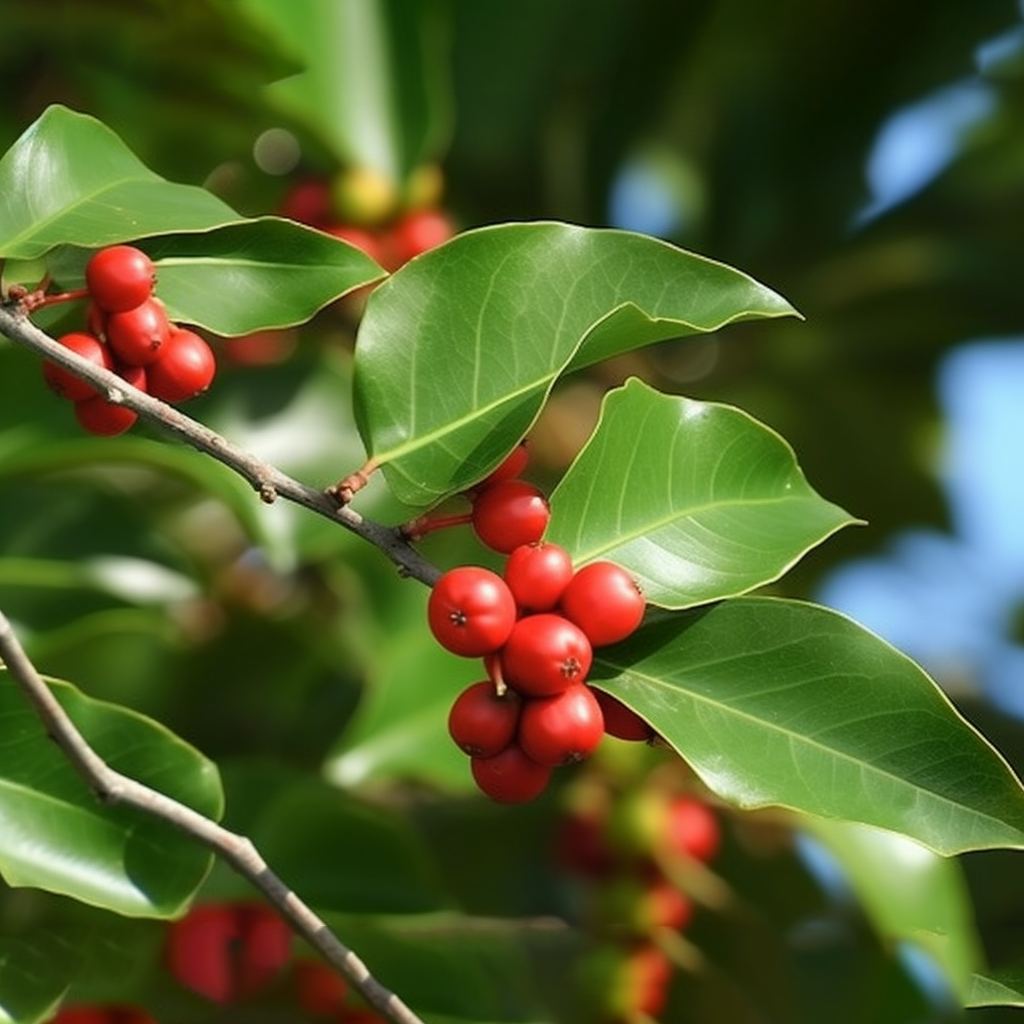
Ekebergia capensis
The purpose of this study was to examine the in vivo effects of Ekebergia capensis leaf ethanolic extract (EKE) on the blood pressure of anaesthetised normotensive male Wistar rats and conscious weanling Dahl salt-sensitive (DSS) rats, which develop hypertension as they age. To investigate possible mechanism(s) of the extract’s hypotensive effects, the contractile or relaxant responses to EKE in the absence or presence of reference drugs were evaluated in Wistar rat isolated aortic rings precontracted with methoxamine hydrochloride (ME, 10 microM). Acute intravenous administration of EKE elicited hypotensive responses in anaesthetised animals, while sub-chronic treatment with the extract averted the development of high blood pressure in weanling DSS rats.
Isometric recordings of methoxamine hydrochloride (ME) pre-contracted, isolated, endothelium-intact and -denuded aortic rings revealed concentration-dependent relaxation responses to EKE (1-160 mg/ml). The potency was significantly less in the endothelium- denuded rings. Inhibitors of endothelium-derived relaxing factor (EDRF), L-NAME, methylene blue and indomethacin significantly reduced EKE-evoked vasorelaxations in endothelium-intact aortic rings. These results indicate that the vasorelaxant effect of EKE was in part mediated via EDRF-dependent or -independent pathways.
These observations suggest that the hypotensive effect of EKE was in part mediated via modulation of total peripheral resistance of the vascular smooth muscles.

Elettaria cardamomum
Gut modulatory, blood pressure lowering, diuretic and sedative activities of cardamom
Ethnopharmacological relevance: Cardamom (Elettaria cardamomum) is traditionally used in various gastrointestinal, cardiovascular and neuronal disorders.
Aim of the study: To rationalize cardamom use in constipation, colic, diarrhea, hypertension and as diuretic.
Materials and methods: Cardamom crude extract (Ec.Cr) was studied using in vitro and in vivo techniques.
Results: Ec.Cr caused atropine-sensitive stimulatory effect in isolated guinea-pig ileum at 3-10mg/ml. In rabbit jejunum preparations, Ec.Cr relaxed spontaneous and K+ (80 mM)-induced contractions as well as shifted Ca++ curves to right, like verapamil. Ec.Cr (3-100mg/kg) induced fall in the arterial blood pressure (BP) of anaesthetized rats, partially blocked in atropinized animals. In endothelium-intact rat aorta, Ec.Cr relaxed phenylephrine (1 microM)-induced contractions, partially antagonized by atropine and also inhibited K+ (80 mM) contractions. In guinea-pig atria, Ec.Cr exhibited a cardio-depressant effect. Ec.Cr (1-10mg/kg) produced diuresis in rats, accompanied by a saluretic effect. It enhanced pentobarbital-induced sleeping time in mice. Bio-assay directed fractionation revealed the separation of spasmogenic and spasmolytic components in the aqueous and organic fractions respectively.
Conclusion: These results indicate that cardamom exhibits gut excitatory and inhibitory effects mediated through cholinergic and Ca++ antagonist mechanisms respectively and lowers BP via combination of both pathways. The diuretic and sedative effects may offer added value in its use in hypertension and epilepsy.
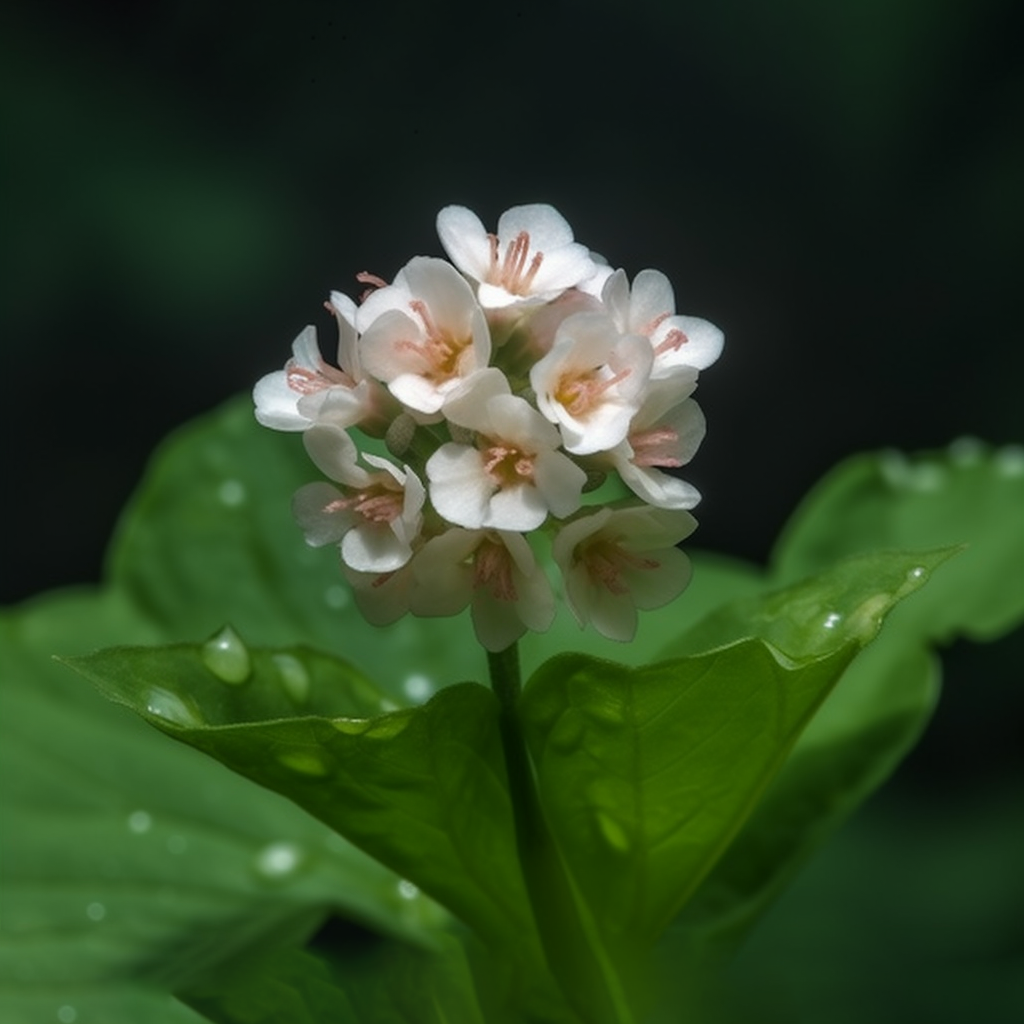
Eucommia ulmoides
The vascular effects of three extract preparations from the Chinese medicinal herb, Eucommia ulmoides Oliv., which is historically an active ingredient commonly used in antihypertensive herbal prescriptions in China, were investigated with isometric contraction using isolated rat aortic and dog carotid rings. Both aqueous extracts isolated from eucommia leaf (L) and bark (B) concentration dependently caused endothelium-dependent relaxation in vessels precontracted with 1 microM phenylephrine (PE), but the methanol extract of the leaf (M) had no effect.
Vessels precontracted with KCl and de-endothelialized vessels precontracted with PE were not affected by B or L. The endothelium-dependent relaxation evoked by B and L was either abolished or substantially inhibited by NG-nitro-L-arginine methyl ester (L-NAME) and methylene blue (MB), indicating the involvement of the nitric oxide (NO) synthase pathway in the vasorelaxant action of B and L. The relaxation to the aqueous extract of eucommia bark was not inhibited with 1 microM atropine, but was inhibited by 3-5 mM tetraethylammonium (TEA) and 3 mM 4-aminopyridine.
This suggests that the endothelium-dependent, NO-mediated relaxation evoked by the aqueous eucommia extracts was not mediated via the activation of endothelium muscarinic receptors and may involve the activation of K+ -channels. Results in this study have provided the first evidence on the in vitro vasorelaxant action of E. ulmoides Oliv. that forms the pharmacological basis for its well-documented antihypertensive action.
The lignan extracts from the tree bark of Eucommia ulmoides Oliv., a famous traditional Chinese medicine, have been demonstrated to have inhibitory effects on aldose reductase activity in spontaneously hypertensive rat myocardium. This study was aimed to investigate the hypertensive cardiac remodeling effects of the lignan extracts together with epalrestat. Ten-week-old male spontaneously hypertensive rats were randomly divided into three groups (n = 12, each) and administered 100 mg/kg/d of captopril (angiotensin converting enzyme inhibitor), 100 mg/kg/d of epalrestat (aldose reductase inhibitor) or 300 mg/kg/d of lignan extracts by gavage for 16 weeks. Sex-, age-, and number-matched normotensive Wistar Kyoto rats with spontaneously hypertensive rats were treated with distilled water (vehicle) as controls. Systolic blood pressures were measured periodically.
Echocardiography examination was taken when rats were 24 weeks old. We found that both captopril and lignan extracts lowered blood pressure, and inhibited aldose reductase activity similarly to epalrestat. Echocardiography examination and histomorphometry indices were improved in all treated groups (p < 0.05). Therefore, lignan extracts could prevent hypertensive cardiac remodeling, which is likely related to aldose reductase inhibition.
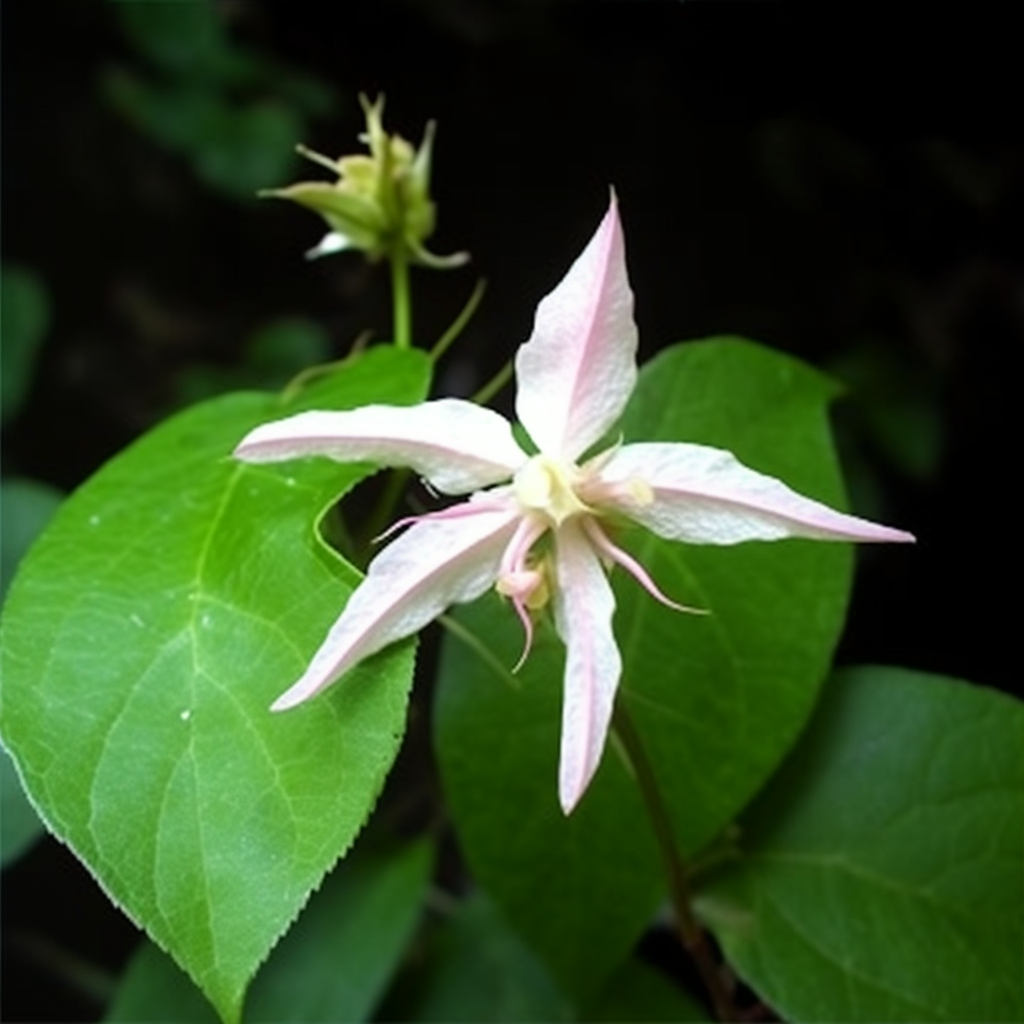
Epimedium brevicornum
Aim To explore the effect of total flavonoids of epimedium (TFE)on plasma aldosterone in rats with heart failure. Methods Male SD rats were randomly allocated to the ISO-induced CHF group(n=50)receiving two subcutaneous injections of 170 mg ISO per kilogram of body and the healthy normal group(NOR group,n=10)receiving two subcutaneous injections of 0.25 ml normal saline.
At 6th week, the LVEF were measured by echocardiogram, the remaining rats, with an LVEF≤45%,were randomly divided into control group(CON group,n=10),metoprolol group 8 mg·kg-1· day-1(MET group, n=10)and TFE group 200 mg·kg-1· day-1(TFE group, n=10),drugs given i.g.At 18th week, the HR, LVSP, LVEDP and±dp/dtmax were assessed.aldosterone in plasma were examined by radio-immunity method.And the mass ratio of heart ventricle and left ventricle to body was measured. Results Compared with the NOR group, HR, LVEDP, LVWI and the aldosterone in plasma were significantly increased(P0.01).But LVSP and±dp/ dtmax were significantly decreased in the CON group.Compared with the CON group,HR,LVEDP,LVWI and the aldosterone in plasma were decreased distinctly, while LVSP and±dp/dtmax were increased distinctly (P0.01) in the TFE and MET group.
The antagnostic effect of TFE to heart function,VWI,LVWI,pathological scores and ALD is similar to the MET group(P0.05).Conclusion TFE can inhibit the aldosterone in plasma,improve heart function and reverse ventricular remodeling with congestive heart failure.

Eugenia uniflora
Pharmacological effects of Eugenia uniflora (Myrtaceae) aqueous crude extract on rat’s heart
The effect of aqueous crude extract (ACE) of Eugenia uniflora L. (Myrtaceae) was studied on rat’s perfused ventricles. This plant is used in South American traditional medicine as an antihypertensive and we already demonstrated previously its hypotensive properties. In this paper, maximal left intraventriclular pressure (P) of rat’s hearts beating at 0.2 Hz firstly increased to 162.1+/-11.1% of basal value during 1-3 min of perfusing ACE 0.6%. Maximum rate of contraction (+P) also increased to duplicating +P/P ratio. Both types of effect were significantly decreased by either propranolol 0.35 microM, and pre-treatment with reserpine (5 mg/kg), suggesting that they were caused by a compound that releases cathecolamines with beta-adrenergic action.
Nevertheless, after 20 min of perfusing ACE, ventricles decreased P to about 50% of their basal value, suggesting a negative-inotropic compound present in the extract. The perfusion of 1.2% ACE decreased P in a pressure-[Ca](o) curve (0.5-2 mM) in a non-competitive manner, suggesting that an irreversible Ca-blocking compound is also present in the extract. In summary, E. uniflora ACE has a dual effect on the heart related to its hypotensive action and is probably responsible for the therapeutic or adverse effects in patients under cardiac risk.
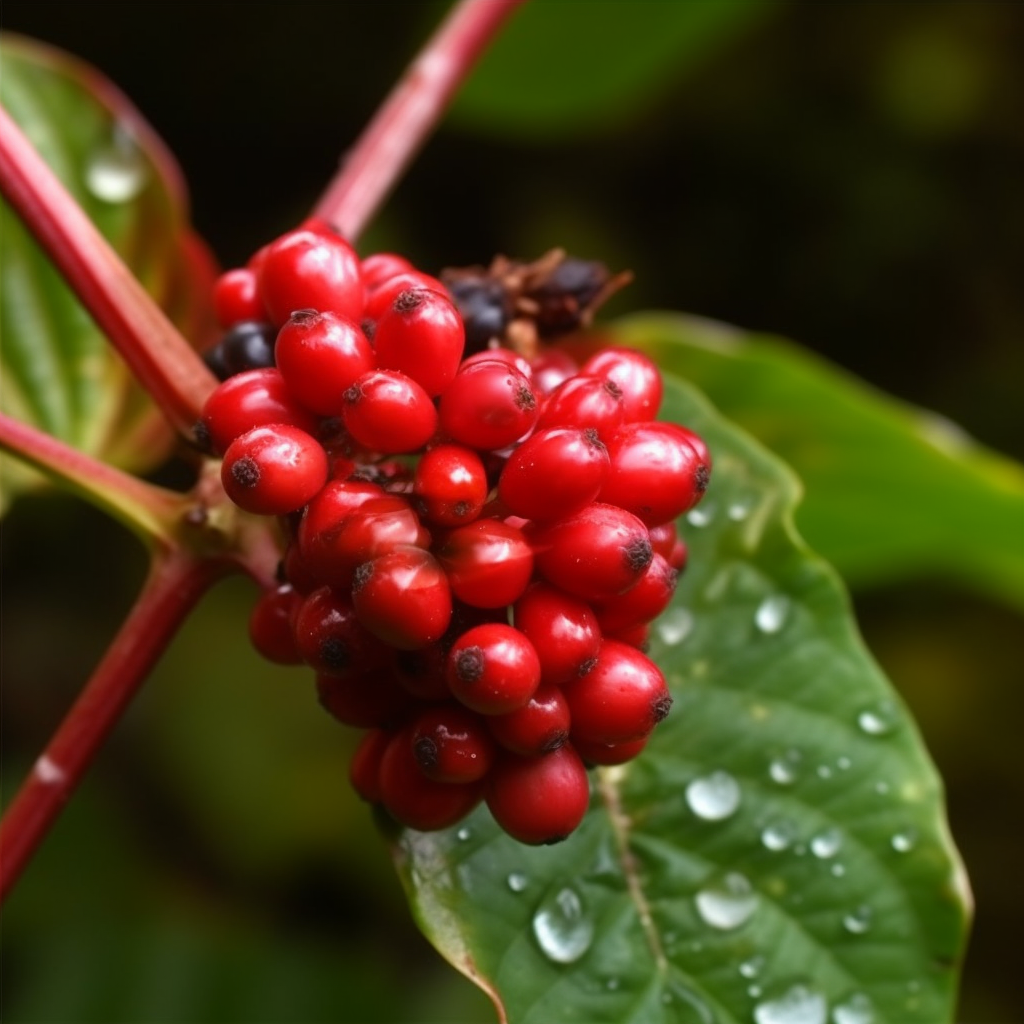
Euodia rutaecarpa
Pharmacological Effects of Evodia Rutaecarpa and Its Bioactive Components
The chemical components and pharmacological effects of a Chinese herbal drug Wu-Chu- Yu, the dry unripe fruit of Evodia rutaecarpa (Juss.) Benth (Evodiae Fructus, E.F.), have been studied by us since 1976. Totally, thirty-eight chemicals are isolated and identified from Evodiae plants in Taiwan. Among them, eight (7-hydroxyrutaecarpine, and 7 novel aceptophenones) are characterized as new chemicals. Under bioassay directed fractionation, three compounds, dehydroevodiamine (DeHE), evodiamine (Evo) and rutaecarpine (Rut) are isolated and studied pharmacologically.
Further studies demonstrate that DeHE produces a hypotensive and bradycardic effecds in SHR, but not in WKY rats. However, higher doses of Rut (2.5-20 mg/kg, i.p.) increase blood pressure in conscious WKY rats but not in SHR. Evo also produces hypotensive and tachycardiac effects in conscious SHR but not in WKY rats. Endothelium activation and receptor-mediated Ca2+ channels inhibition in the vascular smooth muscle are involved in the vasorelaxant effect of DeHE, Evo and Rut. The vasorelaxant effect of Rut is 100% endothelium dependent in the aorta but only 65-70% in mesenteric artery. Evo exerts 50% endothelium dependence in aorta and 20% in mesenteric artery. Vasorelaxant effect of DeUE in mesenteric artery is 20% endotheliumdependent, but not endothelium dependent in the aorta.
Recently, the anti-amnesia effect of DeHE in intracerebroventricular β-amyloid peptide injected mice is shown. Studies also show the effect of E.F. and its bioactive components on septic-shock rats, on rabbit corpus cavernosum, and on testosterone and aldosterone secretion in rat testicular interstitial cells and Zona glomerulosa cells. The interaction of E.F. and its bioactive components between various drugs metabolizing enzymes is further demonstrated.

Gastrodia elata
Anti-hypertensive effect of Gastrodia elata Bl leaf extract in rats
Purpose: To investigate the probable antihypertensive effects of Gastrodia elata Bl. extract (GEBE) in renovascular hypertensive rats as well as the mechanism involved in blood pressure reduction.
Methods: The two-kidney one-clip (2K1C) Goldblatt model of renovascular hypertension was used in Wistar rats. The 2K1C group rats were treated with captopril (40 mg/kg/day), low-dose GEBE (150 mg/kg/day) and high-dose of GEBE (300 mg/kg/day) for 6 weeks by intragastric administration. Systolic (SBP) and diastolic blood pressure (DBP) were measured by the tail-cuff method. Urine creatinine and urea levels of the rats were measured by enzyme-linked immunosorbent assay (ELISA). Superoxide dismutase (SOD) and malondialdehyde (MDA) levels were also evaluated.
Results: In the captopril- and GEBE-treated groups, blood pressure decreased progressively over the course of the 6-week treatment period compared with that of the untreated (control) rats (p < 0.01). High-dose GEBE also significantly increased plasma SOD activity but decreased plasma MDA concentration (p < 0.05). Renal function improved following captopril and GEBE (300 mg/kg/day) treatment (p < 0.01).
Conclusion: The results suggest that GEBE probably exerts an antihypertensive effect by inhibiting endothelin (ET)-converting enzyme and via its antioxidant activity.
Gastrodin Reduces blood pressure by Intervening with RAAS and PPARγ in SHRs
Gastrodin is a bioactive compound extracted from traditional Chinese medicine, Gastrodia elata Bl. It has a definite effect on reducing blood pressure in hypertensive patients. However, the mechanisms of gastrodin in lowering blood pressure still remain unclear. In this study, 4 weeks of administration of gastrodin (100 mg/kg/d intraperitoneally injected) decreased the systolic blood pressure (SBP) in spontaneously hypertensive rats (SHRs) (versus). Among SHRs receiving gastrodin treatment, angiotensin II (Ang II) and aldosterone (ALD) in serum were significantly decreased (versus, versus, and, resp.) and dramatically downregulated expression of angiotensin type 1 receptor (AT1R) (versus) in myocardium in both mRNA and protein levels compared with their corresponding groups without gastrodin treatment. Additionally, gastrodin increased the mRNA expression (versus) and protein synthesis (versus) of peroxisome proliferator-activated receptor γ (PPARγ) in myocardium tissues.
Overall, our data demonstrated that gastrodin was able to decrease the SBP in SHR. Furthermore, this study showed that gastrodin intervened with the renin–angiotensin–aldosterone system (RAAS) and PPARγ effectively, which indicates its antihypertensive mechanism.
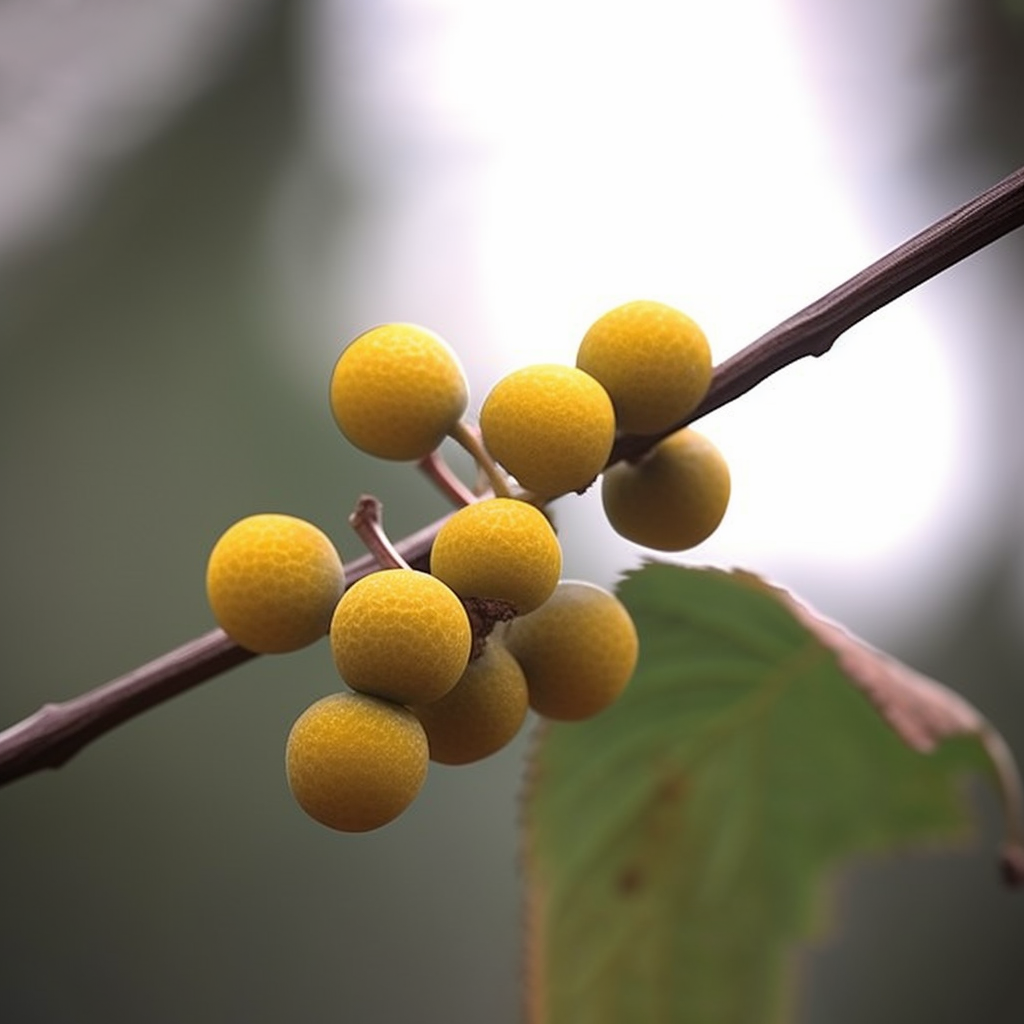
Ficus exasperate
Sandpaper leaf (Ficus exasperata) is commonly used in folk medicine to manage high blood pressure. However, different methods such as soaking, boiling, hand maceration, and blending have been employed for preparing sandpaper leaf extracts for hypertensive patients. This study sought to investigate and compare the influence of different processing methods on the antihypertensive properties of sandpaper leaf as well as its effect on Fe2+ and sodium nitroprusside– (SNP-) induced lipid peroxidation in rat heart in vitro. Sandpaper leaf extracts were prepared using different methods and the resulting solutions were freeze-dried. Effect of the extracts on angiotensin-1-converting enzymes (ACE) and arginase activity was assessed. Thereafter, antioxidant activities of the extracts were determined using in vitro antioxidant assays, and the total phenolic content and flavonoid content of the extracts were determined.
The results revealed that sandpaper leaf extracts from different processing methods inhibited ACE and arginase activity in a dose-dependent manner. However, the soaking method had significantly (p < .05) higher inhibitory effect on angiotensin converting (ACE) and arginase activity than hand maceration, boiling, and blending methods. Sandpaper leaf extracts also exhibited high antioxidant activities as typified by their iron-chelating ability, 2, 2′-azino-bis (3-ethylbenzthiazoline-6-sulphonic acid) (ABTS) radical–scavenging and iron-chelating ability as well as inhibition of Fe2+– and SNP-induced lipid peroxidation in rat heart in vitro. Processing methods alter the inhibitory effect of sandpaper leaf extracts on ACE and arginase activities. Thus, inhibition of ACE and arginase coupled with antioxidant properties could offer protective mechanisms against hypertension. However, the soaking method appears to be the most promising among methods considered.

Fritillaria ussuriensis
The present study was designed to investigate whether the Bulbus Fritillaria shows a hypotensive effect via the angiotensin converting enzyme (ACE) inhibition and elicit NO/cGMP release in rat aortic rings. Intravenous injection of Bulbus Fritillaria water extract lowered the mean arterial pressure of anesthetized rats in a dose-dependent manner. The ACE activities were inhibited significantly by the additions of ethylacetate and butanol extracts from Bulbus Fritillaria, of which IC(50) values were 292 and 320 microg/ml, respectively.
Moreover, angiotensin I-induced vasoconstriction was also strongly inhibited by the additions of ethylacetate and butanol extracts from Bulbus Fritillaria. In order to assess whether NO production was induced by Bulbus Fritillaria extracts, we directly measured NO and cGMP production levels from the aortic ring elicited by extracts of Bulbus Fritillaria. Our results showed that the hexane, butanol, and water extracts of Bulbus Fritillaria increased NO and cGMP productions in intact vascular tissue. These findings suggest that Bulbus Fritillaria extracts have a hypotensive effect in rats via the inhibition of ACE activity and direct release of NO/cGMP in the vascular tissue.
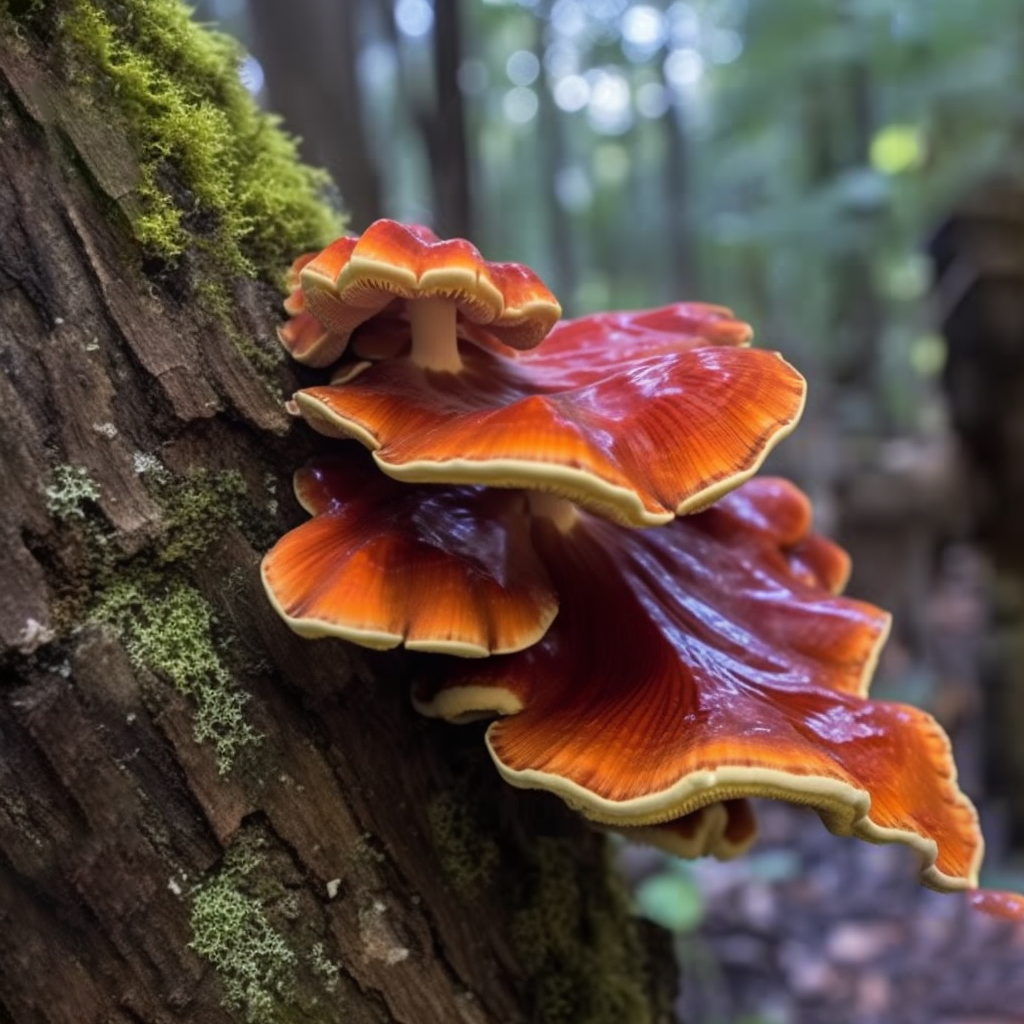
Ganoderma lucidum
The Many Uses of Reishi Mushroom
It is very possible many of you have seen, heard of, or tried a Reishi mushroom product before; but this seems to be a more recent occurrence in the western world. Today, functional mushrooms like these are becoming more sought after for their long history of medicinal use. In the case of Reishi, we have a man by the name of Shigeaki Mori to thank for the widespread use of this versatile fungus. He spent 15 years developing a new cultivation method using wild spores and a plum tree, resulting in a much more affordable mushroom, and new availability to the general population.
Reishi (Ganoderma lucidum) grows naturally in moist and dimly lit forests, particularly on dried trunks of plum, oak, and pasonia trees. For every 10,000 trees, maybe 2 or 3 will host a Reishi mushroom making natural wild grown reishi very rare. Around 4,000 years ago, the Chinese emperor, Shen Nong tasted and catalogued over 365 plants to create the first book of Traditional Chinese Medicine (10). Each plant was evaluated on treatment capabilities, effectiveness, and side effect potential. Red Reishi mushroom was classified as the best of the “Superior” plants. Now, thanks to the work of Mr. Mori, we have the tools and resources to cultivate this mushroom for widespread use meaning far more people can enjoy the benefits of this rare, shiny, woody mushroom. In fact, Reishi is one of the most widely used medicinal mushrooms today!

Ficus deltoidea
This study investigated the effects of a standardised ethanol and water extract of Ficus deltoidea var. Kunstleri (FDK) on blood pressure, renin–angiotensin–aldosterone system (RAAS), endothelial function and antioxidant system in spontaneously hypertensive rats (SHR). Seven groups of male SHR were administered orally in volumes of 0.5 mL of either FDK at doses of 500, 800, 1000 and 1300 mg kg− 1, or captopril at 50 mg kg− 1 or losartan at 10 mg kg− 1 body weight once daily for 4 weeks or 0.5 mL distilled water. Body weight, systolic blood pressures (SBP) and heart rate (HR) were measured every week. 24-hour urine samples were collected at weeks 0 and 4 for electrolyte analysis. At week 4, sera from rats in the control and 1000 mg kg− 1 of FDK treated groups were analyzed for electrolytes and components of RAAS, endothelial function and anti-oxidant capacity. SBP at week 4 was significantly lower in all treatment groups, including captopril and losartan, when compared to that of the controls.
Compared to the controls, ACE activity and concentrations of angiotensin I, angiotensin II and aldosterone were lower whereas concentrations of angiotensinogen and angiotensin converting enzyme 2 were higher in FDK treated rats. Concentration of eNOS and total anti-oxidant capacity were higher in FDK treated rats. Urine calcium excretion was higher in FDK treated rats. In conclusion, it appears that ethanol and water extract of FDK decreases blood pressure in SHR, which might involve mechanisms that include RAAS, anti-oxidant and endothelial system.
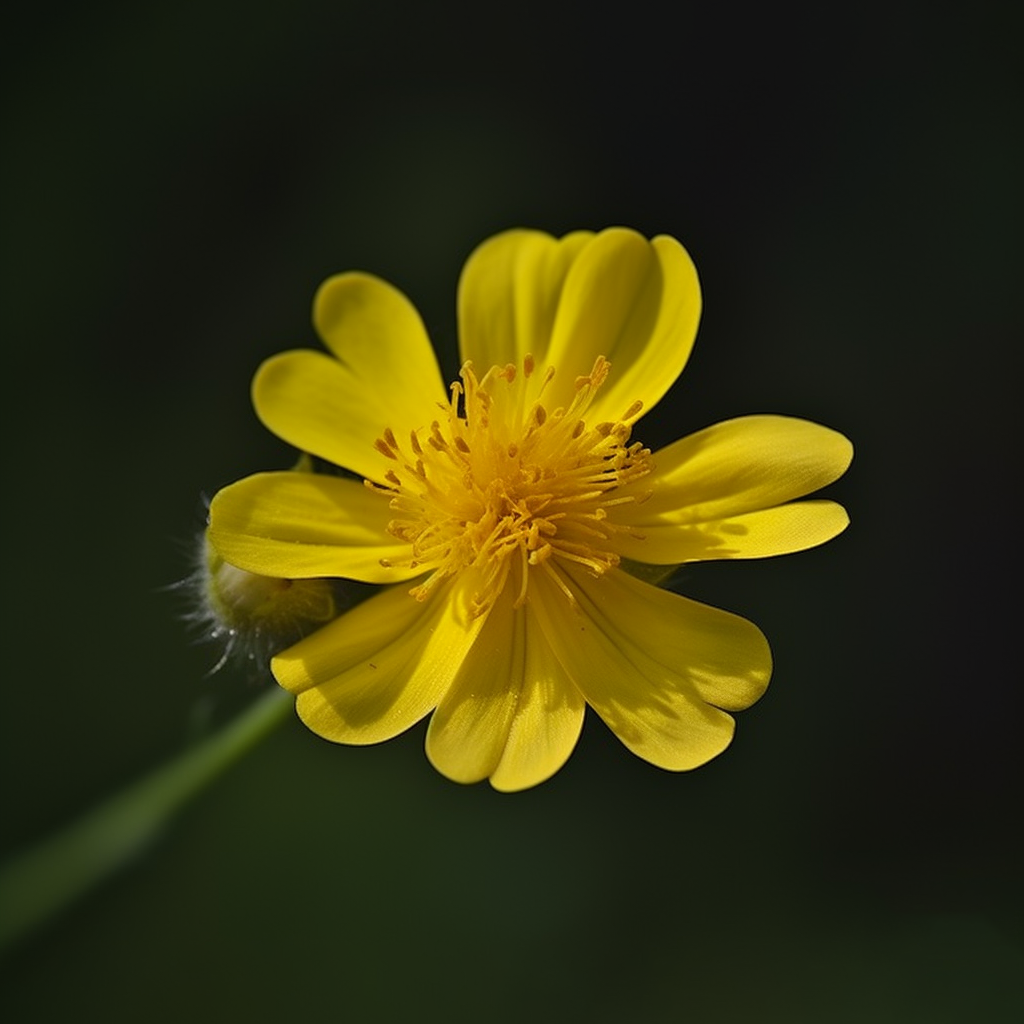
Geum japonicum
Crude extracts and three purified tannins from Geum japonicum Thunberg (Rosaceae) were examined for relaxant effects in isolated rat thoracic aorta and for hypotensive effects in anesthetized normotensive and hypertensive rats. The acetone extract and the butyl alcohol extract of Geum japonicum at a cumulative concentration of 30mug/ml potently relaxed phenylephrine-precontracted aortic rings by 73+/-5% and 80+/-7%, respectively, without affecting the resting tension of these vessels. Removal of the vascular endothelium, inhibition of nitric oxide (NO) synthase with N(omega)-nitro-l-arginine (l-NA) or inhibition of cGMP biosynthesis with methylene blue all abolished the vasorelaxant effects of the Geum japonicum extracts. Addition of l-arginine, the substrate for NO biosynthesis, reversed the inhibitory effects of l-NA.
Similar vasorelaxant effects of 82+/-10%, 61+/-8% and 82+/-14%, were observed with the purified tannins, penta-O-galloyl-beta-glucoside, casuariin and 5-desgalloylstachyurin, respectively, at a cumulative concentration of 10muM. Intravenous injection of the butyl alcohol extract of Geum japonicum at a cumulative dose of 2.5mg/kg into both hypertensive and normotensive rats resulted in a marked reduction in the mean arterial blood pressure by 46+/-6% and 34+/-7%, respectively, which was abolished by prior injection of l-NA.
Therefore, these results suggest that tannins may be responsible for the vasorelaxant and hypotensive effects of Geum japonicum, mediated via endogenous NO and subsequent cGMP formation. The data suggest that extracts of Geum japonicum may have potential use as new anti-hypertensive agents for lowering arterial blood pressure in hypertensive patients.
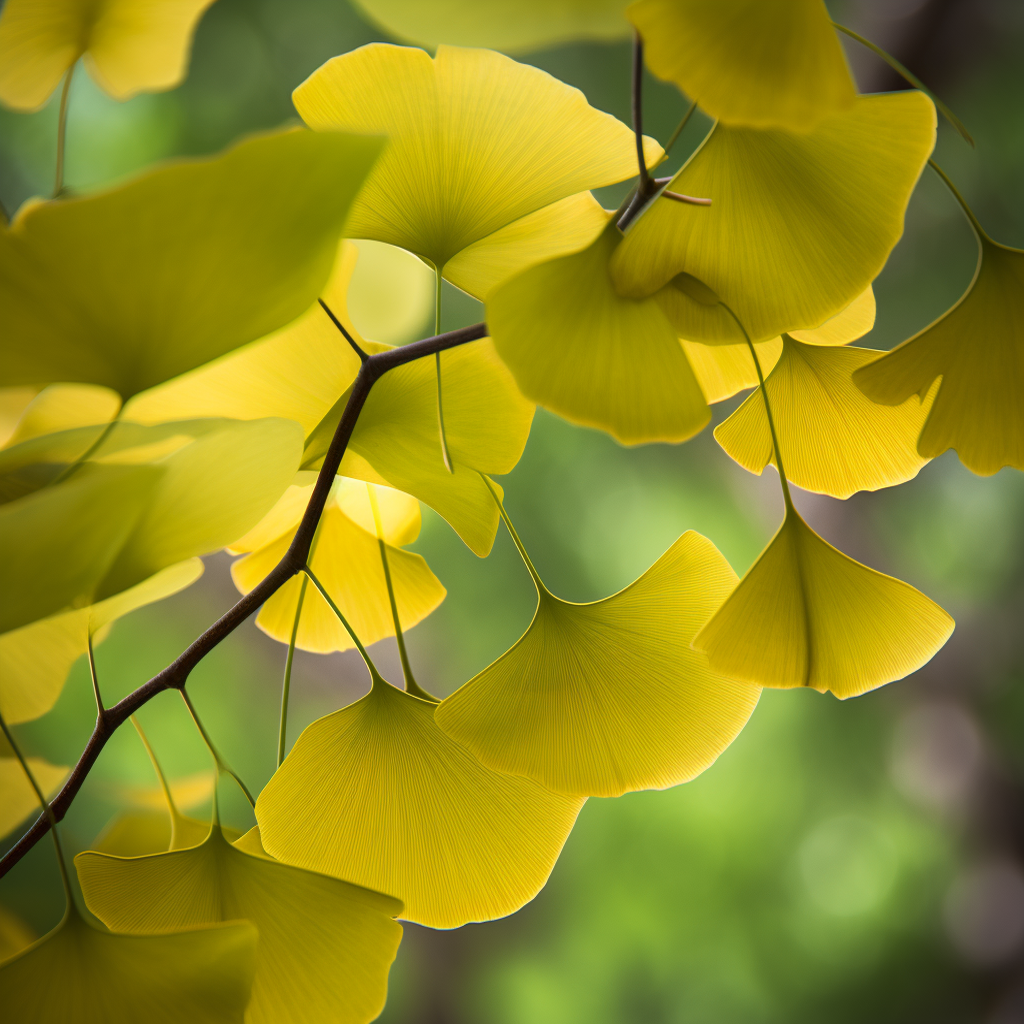
Ginkgo biloba
The 2 kidney, 1-clip (2K, 1C) model of hypertension was used to investigate the potential antihypertensive effect of a standardized leaf extract of Ginkgo biloba (EGb 761). Clipping of the renal artery resulted in gradual elevation of the systolic blood pressure (SBP) reaching a plateau after 4 weeks of surgery. Treatment of hypertensive rats with EGb 761 (60, 90, 180 mg/kg/day orally) was therefore started 4 weeks after surgery and continued for 3 weeks. This led to a dose-dependent reduction in SBP with no significant change in heart rate. Control hypertensive rats showed a significant elevation of total protein thiols (Pr-SHs level) in both clipped and non-clipped kidneys as well as in the serum. However, glutathione peroxidase (GSH-Px) activity was decreased in the clipped kidneys but elevated in the non-clipped ones and in the blood. The malondialdehyde (MDA) level was raised in clipped kidneys but not in non-clipped ones nor in the serum. Nitric oxide (NO level) and angiotensin converting enzyme (ACE) activity were increased in both clipped and non-clipped kidneys but not in the serum.
Endothelium-dependent and -independent relaxation of aortic rings towards acetylcholine (Ach) and sodium nitroprusside (SNP) were impaired. Treatment with EGb 761 (180 mg/kg/day for 3 weeks) was associated with recovery of GSH-Px activity in clipped kidneys, inhibition of ACE activity in both kidneysand a reduction in the elevated NO level of the non-clipped kidneys, decreased responsiveness to the vasoconstrictor NE and improvement of endothelial function as evidenced by restoration of endothelium-dependent vasorelaxation induced by Ach. The observed beneficial effects of the EGb 761 may be attributed to different factors, including ACE inhibition and maintenance of cellular antioxidant capacity as well as preserving vascular reactivity towards endothelium-dependent and -independent vasodilators while inhibiting responses to vasoconstrictors.
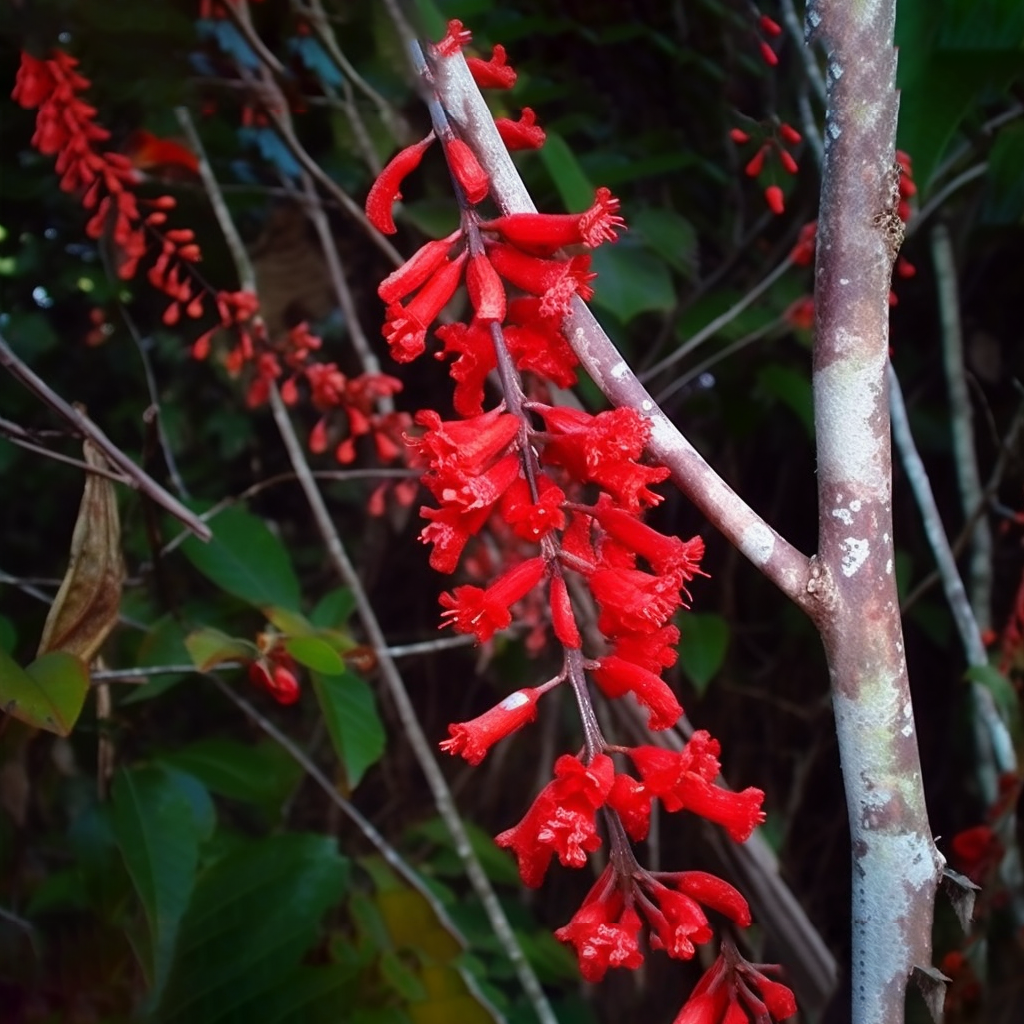
Globimetula cupulata
The leaves of some mistletoes, specifically Loranthus micranthus Linn, Tapinanthus dodoneifolius (DC) Danser and Globimetula cupulata (DC) Van Tieghem (family: Loranthaceae), are used traditionally in Nigerian folk medicine to manage, control and/or treat a plethora of human ailments, including diabetes mellitus and hypertension. In order to scientifically appraise some of the folkloric, ethnomedical uses of Globimetula species, the present study was undertaken to investigate the hypoglycaemic and hypotensive effects of Globimetula cupulata aqueous leaf extract (GCE, 50-800 mg/kg po) in rat experimental paradigms. The hypoglycaemic effect of the plant extract was examined in normal (normoglycaemic) and diabetic (hyperglycaemic) rats using a streptozotocin (STZ)-induced diabetes model. Normotensive Wistar and hypertensive Dahl salt-sensitive rats were used to investigate the hypotensive (antihypertensive) effect of the plant extract. Metformin (MFM, 500 mg/kg po) was used as the reference hypoglycaemic agent for comparison. Acute oral administrations of G cupulata aqueous leaf extract (GCE, 50-800 mg/kg po) caused dose-related, significant (p < 0.05-0.001) hypoglycaemia in normal and STZ-treated diabetic rats.
Furthermore, acute intravenous administrations of GCE (50-800 mg/kg iv) produced dose-dependent, significant reductions (p < 0.05-0.001) in systemic arterial blood pressure and heart rates of the normotensive and hypertensive rats used. Although the exact hypoglycaemic and hypotensive mechanisms of action of the plant extract still remain speculative, it is unlikely that the extract induced hypotension in the mammalian experimental animal model via cholinergic mechanisms, since its cardiovascular effects were resistant to atropine pretreatment.
However, the findings of this experimental study indicated that Globimetula cupulata aqueous leaf extract possesses hypoglycaemic and hypotensive properties. This therefore lends pharmacological support to the folkloric, ethnomedical uses of the plant in the management and/ or control of diabetes mellitus and hypertension among the Yoruba-speaking people of western Nigeria.
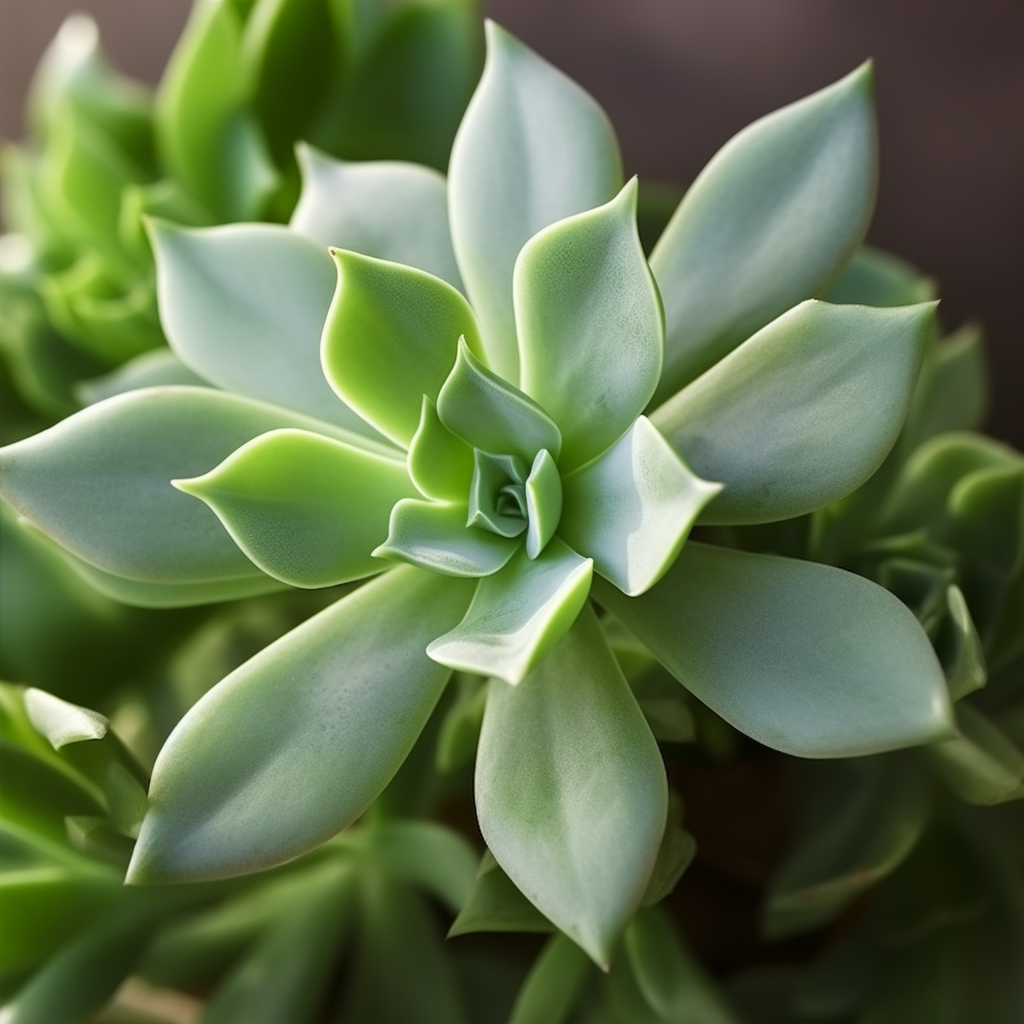
Graptopetalum paraguayense
This study was aimed at evaluating the kinetic properties and capacities of water (GWE), 50% ethanolic (GE50) and 95% ethanolic (GE95) extracts from Graptopetalum paraguayense for the potential to inhibit angiotensin converting enzyme (ACE). The results showed that GWE, GE50 and GE95 showed potent inhibitory effects on ACE. It was found that the ACE inhibitory activities of all the tested extracts increased with the increase of their concentrations. In addition, the ACE inhibition of the tested extracts of G. paraguayense were significantly reduced after the addition of 1.5 mM ZnCl2, suggesting the inhibitory action of the extracts may have resulted from the chelation of the ACE zinc cofactor.
The inhibition kinetics, analyzed by Lineweaver-Burk plots, revealed that G. paraguayense extracts showed a mixed-type inhibition. A comparison of the 50% inhibition concentration (IC50) and K(i) values showed that the ethanolic extracts, including GE50 and GE95 exhibited the more effective ACE inhibitory activity than the water extracts of G. paraguayense.

Guazuma ulmifolia
The aim of the study: was to investigate the in vivo and in vitro cardiovascular activity of a procyanidin fraction (PCF) obtained from acetone extract of Guazuma ulmifolia bark which has traditionally been used as an antihypertensive agent.
Results: 10 mg/kg PCF doses orally administered to sugar-fed hypertensive rats decreased both the systolic arterial pressure and the heart rate, whereas the same doses intravenously administered induced arterial hypotension which was attenuated by NG-nitro-L-arginine methylester (L-NAME 31 mg/kg) pretreatment. In these experiments we employed carbachol as a positive control test. The PCF reduced the contraction induced by norepinephrine (1×10(-7) M) in isolated aortic rings of normotensive (IC50=35.3+/-12.4 ng/mL) and sugar-fed hypertensive (IC50=101.3+/-57.2 ng/mL) rats. This relaxant activity was inhibited by either vascular endothelium removal or L-NAME (30 microM) pretreatment, while indomethacin (10 microM) or atropine (10 microM) had no effect. Preliminary analysis of the PCF by HPLC-DAD-MS and FAB+ mass spectrometry allowed the detection of the main components such as the complex of procyanidin oligomers consisting mainly of tetramers and trimers.
Conclusions: Guazuma ulmifolia bark possesses long-lasting antihypertensive and vasorelaxing properties linked to the endothelium related factors, where nitric oxide is involved.
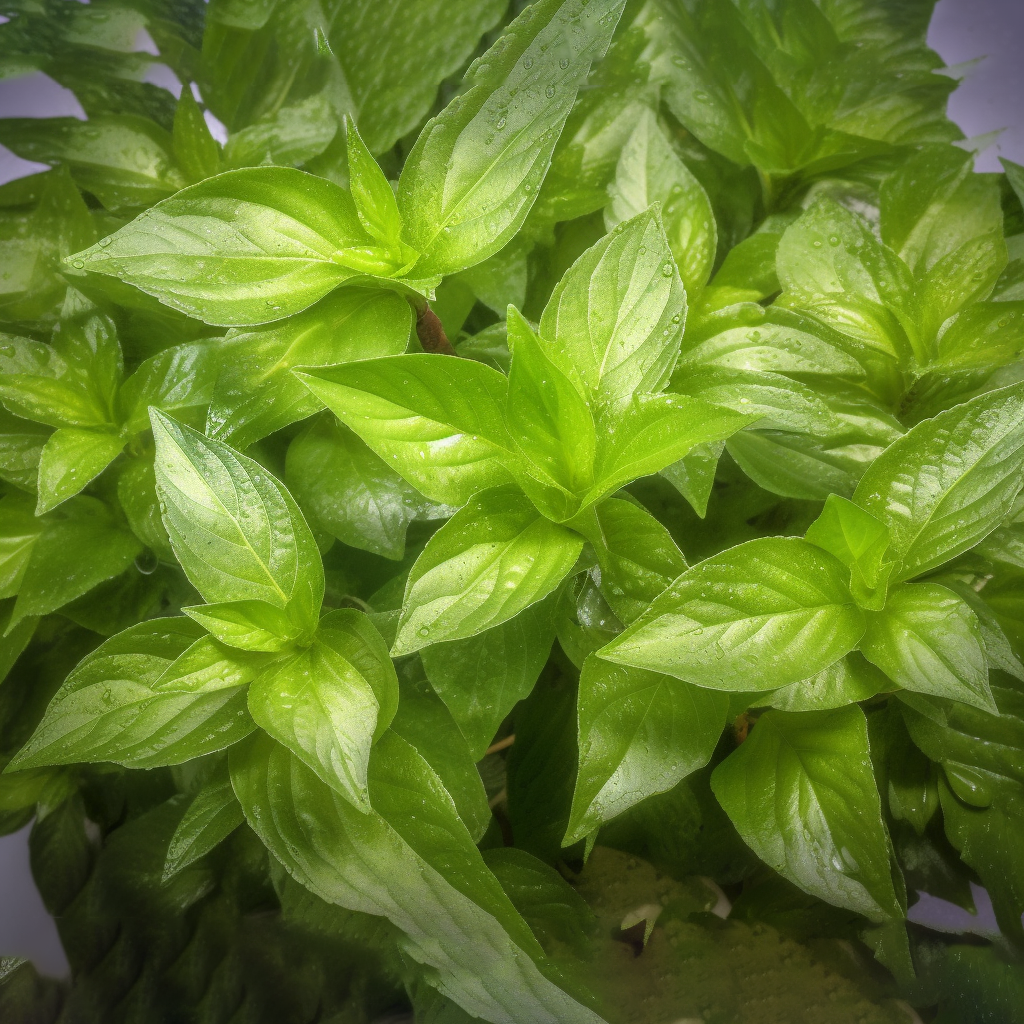
Gynura procumbens
Objectives: To investigate the hypotensive and angiotensin-converting enzyme (ACE) inhibitory activities of a partially purified fraction (FA-I) of the leaves of Gynura procumbens and to qualitatively analyse the putative compounds present in the fraction.
Materials and methods: The hypotensive effect of FA-I was tested in both spontaneously hypertensive rats (SHR) and normotensive Wistar-Kyoto rats (WKY) by an intravenous administration of 0-10 mg/kg of the FA-I. Administration of captopril (20 microg/kg) served as the control. In vitro 0.0-2.0 mg/ml FA-I was added to a mixture of ACE and hippuryl-L-histidyl-L-leucine and assayed by a modification of the colourimetric method of Hurst and Lovell-Smith. All blood pressure measurements were monitored by the Macintosh MacLab set-up. ACE activity was measured by an in vitro assay in which the enzymatic cleavage of hippuryl-L-histidyl-L-leucine to form histidyl-leucine and hippurate was determined colourimetrically by a cyanuric chloride/dioxane reagent.
Results: The FA-I produced a marked dose-dependent reduction in mean arterial pressure (MAP) in SHR and WKY rats, with an ED(50) of 1.09 and 1.05 mg/kg, respectively (p < 0.01). Furthermore, FA-I at 10 mg/kg strongly inhibited the angiotensin I-induced rise in MAP (p < 0.01). This response was comparable to that of captopril at 20 microg/kg. In the in vitro assay, ACE activity was inhibited with an IC(50) of 0.8 mg/ml. The qualitative phytochemical analysis of FA-I indicated the presence of glycoconjugates and peptides.
Conclusion: These results suggest that the hypotensive effect of G. procumbens may be due, in part, to the glycoconjugated or peptidal substances found in FA-I that exhibit an inhibitory effect on ACE.
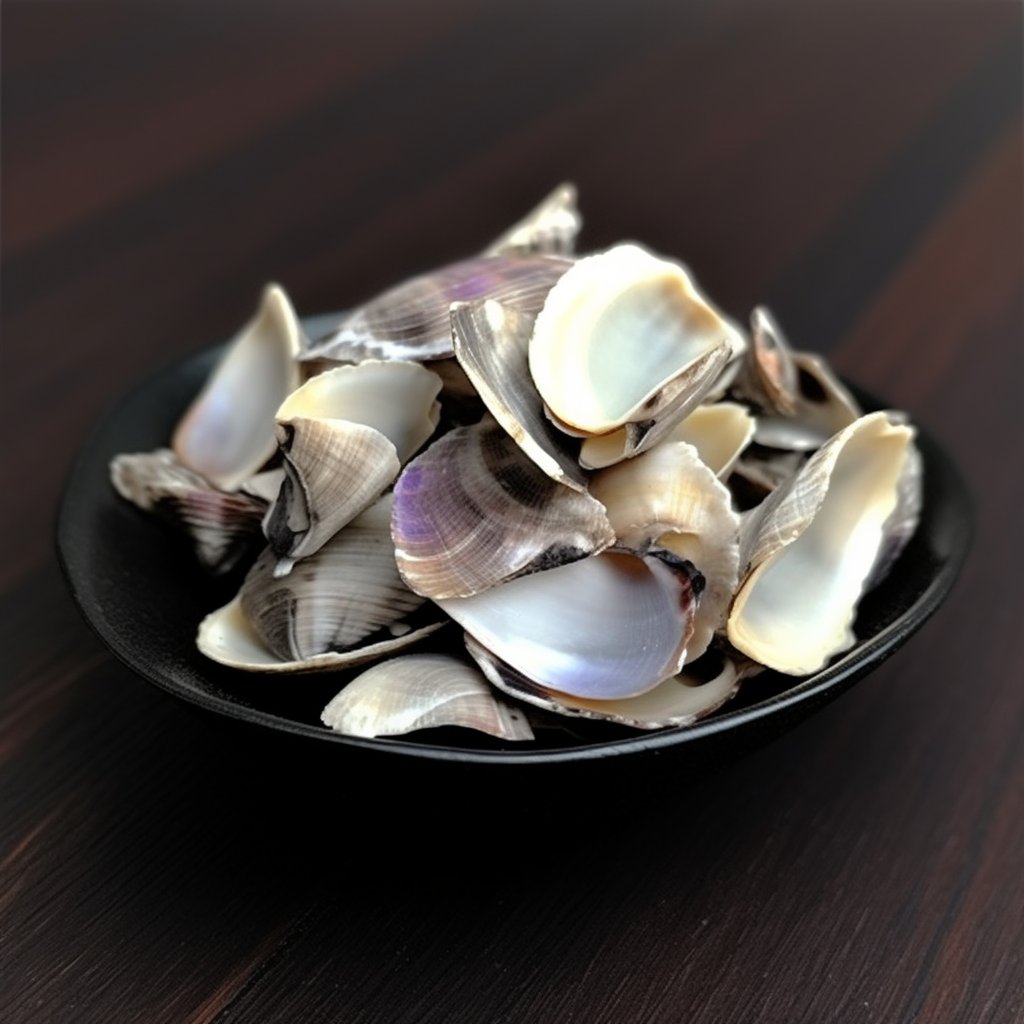
Haliotidis Concha
Methods: Twelve-week-old male rats with spontaneous hypertension were divided into three groups: a Shijueming (Concha Haliotidis) group (group 1), a nifedipine group (group 2), and a distilled water group (group 3). All were given a four-week treatment. Blood pressure and dissociative serum calcium were examined before treatment. Blood pressure was taken every week during treatment. Atomic absorption spectrometry was used to examine dissociative serum calcium. Reverse transcription-polymerase chain reaction was used to examine the expression of CaL-α1C and PMCA1 mRNA. The patch clamp technique was used to examine the electrophysiological characteristics of the vascular smooth muscle cell calcium channels.
Results: After treatment, blood pressure of the Shijueming (Concha Haliotidis) group lowered but not significantly (P>0.05). Blood pressure of the nifedipine group lowered significantly (P<0.05). Blood pressure of the distilled water group remained high. The concentration of serum calcium in the Shijueming (Concha Haliotidis) and the distilled water groups lowered (P<0.05). Expression of CaL-α1C mRNA in the nifedipine group decreased compared with the distilled water group (P<0.01). There was the decreasing trend in the Shijueming (Concha Haliotidis) group, but it was not statistically significant. Shijueming (Concha Haliotidis) also had effects on the expression of PMCA1 mRNA but without statistical significance. However, there was a significant decreasing effect on vascular smooth muscle cell ICa-L flow.
Conclusion: This study indicated that Shijueming (Concha Haliotidis) could increase serum calcium and decrease blood pressure. It may work by influencing calcium channels, expression of PMCA1 mRNA, and regulating ion calcium channels and calcium-ATPase.
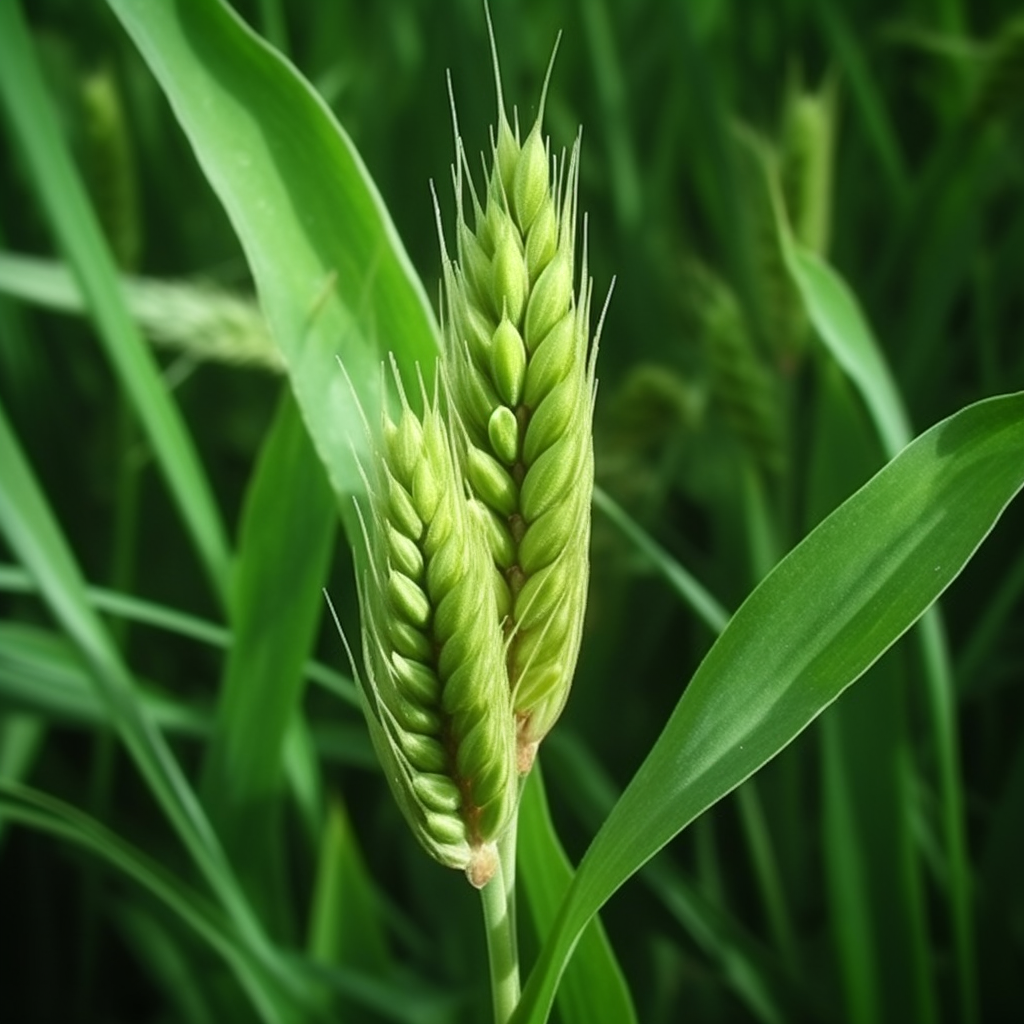
Hordeurn vulgare
Angiotensin-converting enzyme (ACE) is an important therapeutic target in the regulation of high blood pressure. This study was conducted to investigate the alterations in blood pressure associated with ACE inhibition activity of the polyphenols (1–10), including 3-O-feruloylquinic acid (1), lutonarin (2), saponarin (3), isoorientin (4), orientin (5), isovitexin (6), isoorientin-7-O-[6-sinapoyl]-glucoside (7), isoorientin-7-O-[6-feruloyl]-glucoside (8), isovitexin-7-O-[6-sinapoyl]-glucoside (9), and isovitexin-7-O-[6-feruloyl]-glucoside (10), isolated from barley seedlings (BS). All the isolated polyphenols exhibited comparable IC50 values of ACE inhibition activity (7.3–43.8 µM) with quercetin (25.2 ± 0.2 µM) as a positive control, and their inhibition kinetic models were identified as noncompetitive inhibition.
Especially, compound 4 was revealed to be an outstanding ACE inhibitor (IC50 = 7.3 ± 0.1 µM, Ki = 6.6 ± 0.1 µM). Based on the compound structure–activity relationships, the free hydroxyl groups of flavone-moieties and glucose connections at the A ring of the flavone moieties were important factors for inhibition of ACE. The alcohol extract of BS also demonstrated potent ACE inhibition activity (66.5% ± 2.2% at 5000 µg mL−1). The polyphenols from BS had strong inhibitory activity on ACE and this study results suggest that BS can be used as an effective blood pressure regulator through ACE inhibition.
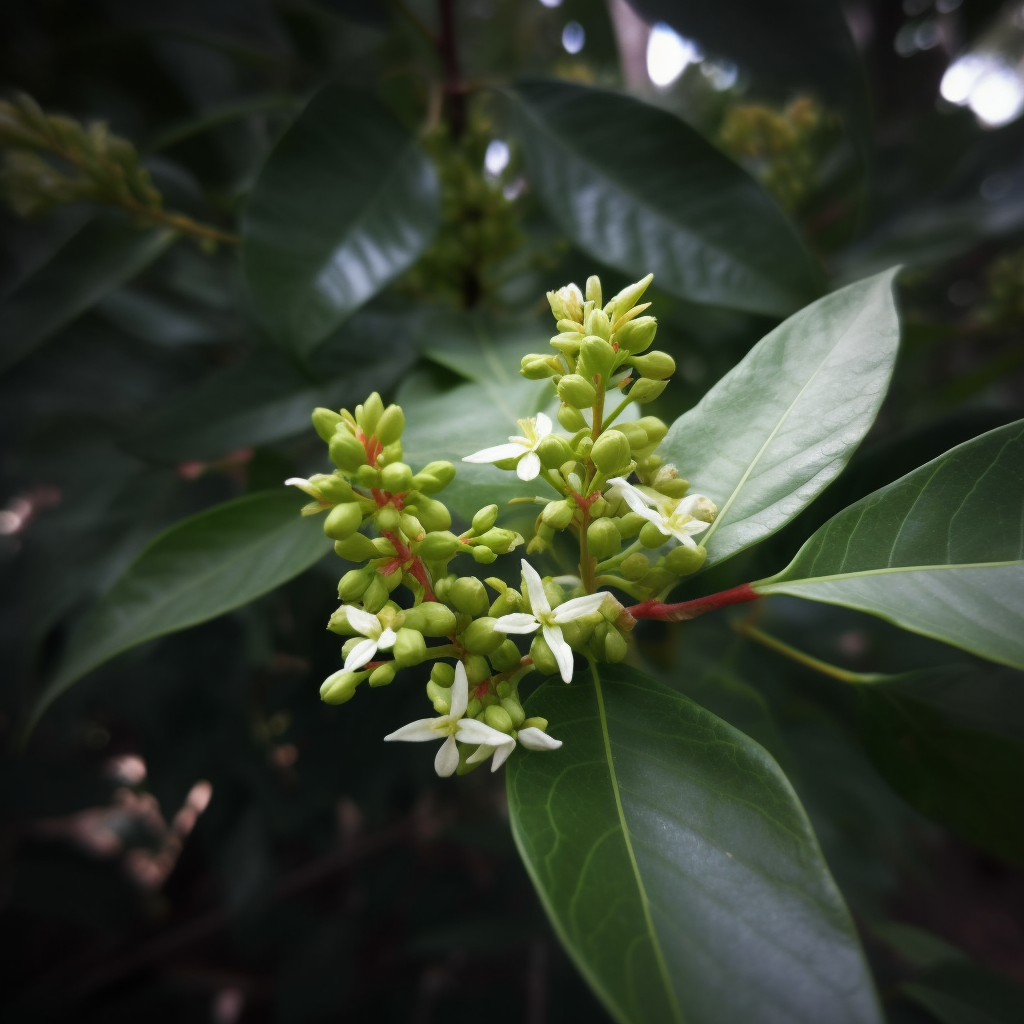
Harpephyllum caffrum
The stem bark of Harpephyllum caffrum Bernh ex CF Krauss (family: Anacardiaceae) is used traditionally in African folk medicine to manage, control and/or treat an array of human ailments, including diabetes mellitus and hypertension. In order to scientifically appraise some of the anecdotal, folkloric and ethnomedical uses of Harpephyllum caffrum, this study was undertaken to examine the hypoglycaemic and hypotensive effects of Harpephyllum caffrum stem bark aqueous extract (HCE) in rat experimental paradigms. The hypoglycaemic effect of the plant extract (HCE) was examined in normal and diabetic rats, using a streptozotocin (STZ)-induced diabetes mellitus model. hypertensive, Dahl salt-sensitive rats were used to investigate the hypotensive (antihypertensive) effect of the plant extract.
Chlorpropamide (250 mg/kg po) was used as the reference hypoglycaemic agent for comparison. Acute oral administrations of the plant extract (HCE, 50-800 mg/kg po) caused dose-related, significant (p < 0.05- 0.001) hypoglycaemia in normal (normoglycaemic) and STZ-treated diabetic rats. Furthermore, acute intravenous administrations of the plant extract (HCE, 25-400 mg/kg iv) produced dose-dependent, significant reductions (p < 0.05-0.001) in systemic arterial blood pressures and heart rates of the hypertensive, Dahl salt-sensitive rats used. Although the exact mechanisms of action of the plant extract still remain obscure at the moment, it is unlikely that the plant causes hypotension in the mammalian experimental animal model used, via the cholinergic mechanism, since its hypotensive effect was resistant to atropine pretreatment.
The numerous polyphenolic compounds and flavonoids present in the plant are speculated to account for the observed hypoglycaemic and hypotensive effects of the extract. However, the findings of this experimental animal study indicate that the stem-bark aqueous extract of H caffrum possesses hypoglycaemic and hypotensive properties, and thus lend pharmacological support to the suggested folkloric, anecdotal and ethnomedical uses of the plant in the management and/or control of adult-onset type 2 diabetes mellitus and hypertension in some rural communities of southern African.

Hibiscus sabdariffa
Ethnopharmacological relevance: The beverages of Hibiscus sabdariffa calyces are widely used in Mexico as diuretic, for treating gastrointestinal disorders, liver diseases, fever, hypercholesterolemia and hypertension. Different works have demonstrated that Hibiscus sabdariffa extracts reduce blood pressure in humans, and recently, we demonstrated that this effect is due to angiotensin converting enzyme (ACE) inhibitor activity.
Aim of the study: The aim of the current study was to isolate and characterizer the constituents responsible of the ACE activity of the aqueous extract of Hibiscus sabdariffa.
Materials and methods: Bioassay-guided fractionation of the aqueous extract of dried calyces of Hibiscus sabdariffa using preparative reversed-phase HPLC, and the in vitro ACE Inhibition assay, as biological monitor model, were used for the isolation. The isolated compounds were characterized by spectroscopic methods.
Results: The anthocyanins delphinidin-3-O-sambubioside (1) and cyanidin-3-O-sambubioside (2) were isolated by bioassay-guided purification. These compounds showed IC(50) values (84.5 and 68.4 microg/mL, respectively), which are similar to those obtained by related flavonoid glycosides. Kinetic determinations suggested that these compounds inhibit the enzyme activity by competing with the substrate for the active site.
Conclusions: The competitive ACE inhibitor activity of the anthocyanins 1 and 2 is reported for the first time. This activity is in good agreement with the folk medicinal use of Hibiscus sabdariffa calyces as antihypertensive.
Objectives: The present study investigated the effects of aqueous extract of Hibiscus sabdariffa (HS) on the three basic components of renin–angiotensin–aldosterone system: Plasma renin, serum angiotensin-converting enzyme (ACE), and plasma aldosterone (PA) in mild to moderate essential hypertensive Nigerians and compared with that of lisinopril, an ACE inhibitor.
Materials and Methods: A double-blind controlled randomized clinical study was used. Seventy-eight newly diagnosed but untreated mild to moderate hypertensive subjects attending Medical Outpatients Clinic of Enugu State University Teaching Hospital, Enugu were recruited for the study. Those in Group A received placebo (150 mg/kg/day), Group B were given lisinopril (10 mg once daily) while those in Group C received aqueous extract of HS (150 mg/kg/day). After 4 weeks of treatment, the levels of plasma renin, serum ACE, and PA were determined.
Results: HS and lisinopril significantly (P < 0.001) reduced PA compared to placebo by 32.06% and 30.01%, respectively. Their effects on serum ACE and plasma renin activity (PRA) were not significant compared to placebo; they reduced ACE by 6.63% and 5.67% but increased plasma PRA by 2.77% and 5.36%, respectively.
Conclusion: HS reduced serum ACE and PA in mild to moderate hypertensive Nigerians with equal efficacy as lisinopril. These actions are possibly due to the presence of anthocyanins in the extract.
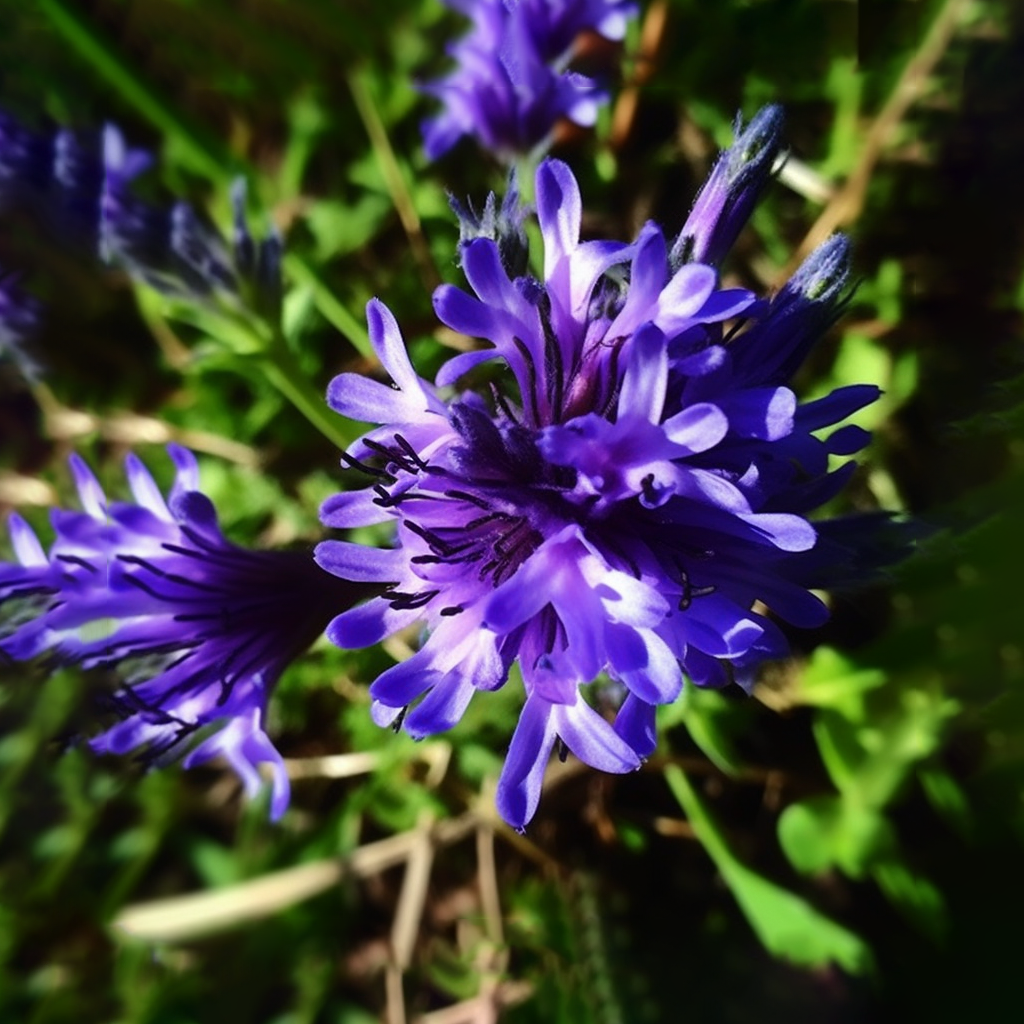
Hyptis fruticosa
Cardiovascular effects of Hyptis fruticosa essential oil in rats.
In non-anesthetized normotensive rats, Hyptis fruticosa essential oil (HFEO, 5, 10, 20 and 40 mg/kg; i.v.) induced hypotension associated with tachycardia. In intact and isolated rings of rat superior mesenteric artery (control), HFEO (1-1000 microg/ml, n=6, cumulatively) induced concentration-dependent relaxations of tonus induced by 10 microM phenylephrine (Phe) (pD(2)=2.6+/-0.27; E(max)=64+/-8.3%).
In denuded endothelium pre-contracted rings with Phe or K(+)-depolarizing solution (80 mM), the concentration-response curves to HFEO were not shifted (pD(2)=2.3+/-0.25 and 2.3+/-0.28, respectively), but their maximal responses were significantly (P<0.05 vs control) increased (E(max)=122.3+/-18.2% and 92+/-3.6%, respectively). HFEO was also capable of antagonizing the concentration-response curves to CaCl(2) (3 microM-30 mM) in a dose-dependent manner.
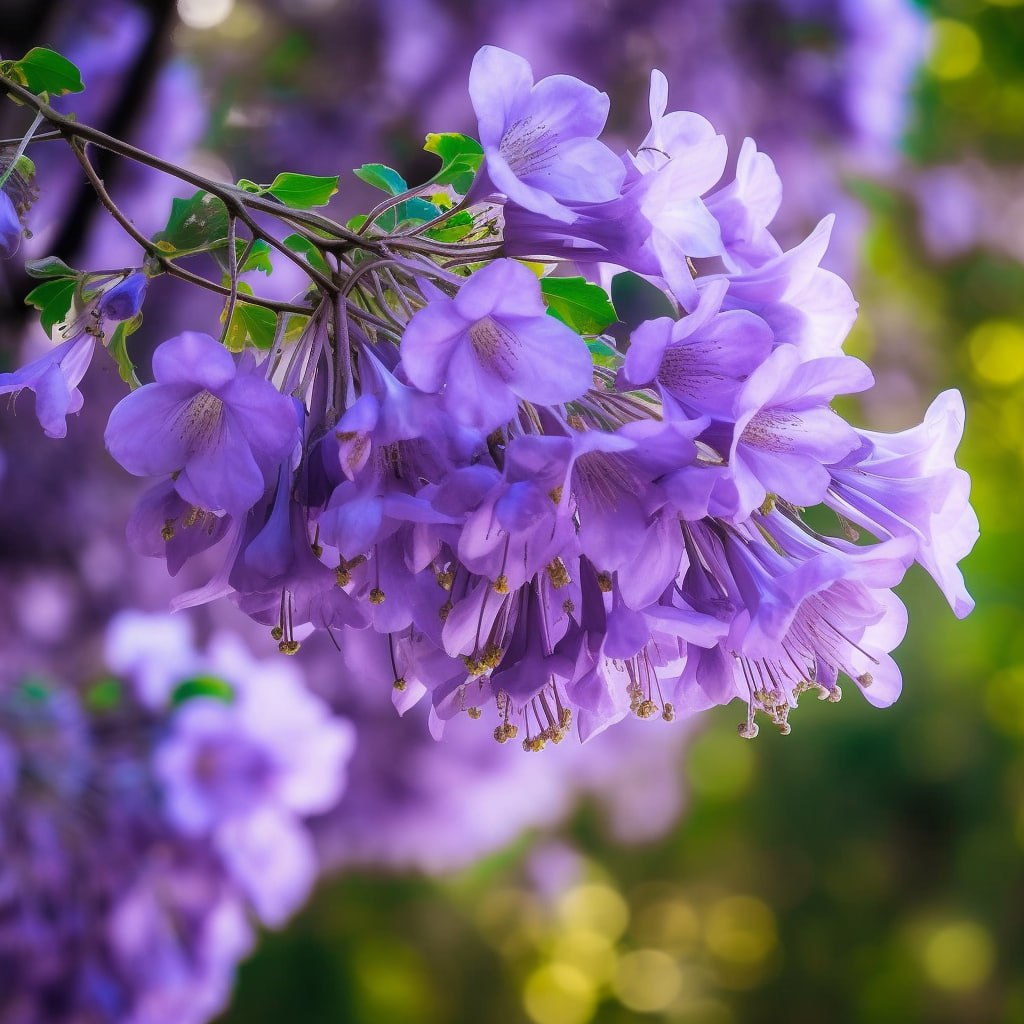
Jacaranda mimosaefolia
Hypotensive effect of the hydroalcoholic extract from Jacaranda mimosaefolia leaves in rats
Hypothermic and cardiovascular activities of the methanol extract of Jacaranda mimosaefolia leaves were tested. To evaluate the hypotensive properties, anesthetized rats were used and temperature, blood pressure, and cardiac frequency were recorded. In addition, the in vitro effect produced by the extract on induced contraction with norepinephrine (NE) in rat aorta rings was evaluated.
The extract produced a significant hypothermic effect with a maximum at 2 h, an effect which was accompanied by hypotension and low cardiac frequency, physiological conditions that were again re-established to the following 2 h. In isolated aorta preparations norepinephrine antagonistic effect was not correlated with the presence of Ca2+, pD2 for NE was modified by the extract, an effect that could explain a blockade of the adrenergic receptors.

Jatropha gossypiifolia
Hypotensive and vasorelaxant effects of ethanolic extract from Jatropha gossypiifolia L. in rats.
The present work was carried out to examine the hypotensive effects of ethanolic extract (EE) from Jatropha gossypiifolia L. The oral administration of EE (125 or 250 mg kg(-1) day(-1)) caused a significant and dose-dependent reduction of the systolic blood pressure. The concentration-response curves to norepinephrine (NE) or Ca(2+) were non-parallelly shifted to the right and the maximum contractile responses were concentration dependently depressed by EE (0.1 or 0.5 mg/ml) in endothelium-deprived mesenteric artery.
The cumulative additions of EE (0.1-30 mg/ml) caused a concentration-dependent relaxant response in endothelium-deprived mesenteric artery precontracted with NE or Ca(2+). In conclusion, our results have shown that the EE from J. gossypiifolia L. can elicit hypotension, by oral via, in conscious normotensive rats and vasorelaxant activity on rat mesenteric rings precontracted with NE or Ca(2+).

Laelia anceps
RMELanc-induced relaxation in aortic rings precontracted with NE, 5-HT and KCl. It also reduced NE-induced transient contraction in Ca(2+)-free solution and inhibited contraction induced by increasing external calcium. Nevertheless, the vasorelaxant effect of RMELanc was not reduced by ODQ, 1-alprenolol, TEA, glibenclamide, and 2-AP. Oral administration of 100 mg/kg of RMELanc exhibited a significant decrease in systolic and diastolic blood pressures in SHR rats. HPLC analysis allowed us to detect the presence of 2,7-dihydroxy-3,4,9-trimethoxyphenantrene (1), which induced a significant relaxation effect. Therefore, our results suggest that RMELanc induces vasorelaxant and antihypertensive effects by blockade of Ca(2+) channels.

Lycium chinense
This study was designed to investigate the effects of Korean Lycii fructus water extract in Al (Aluminum) administered rats. Forty-eight male Sprague-Dawley rats were divided into six groups: Control group, water extract group with 3% Lycii fructus, 1000 and 2000 ppm of Al groups, and 1000 and 2000 ppm of Al with 3% Lycii fructus water extract group. The Al content of rat tissue in the Al administered group was lower than that in rat tissue in the Al with 3% Lycii fructus water extract group.
Plasma levels of renin and aldosterone activity was higher in the Al administration group, compared with the 3% Lycii fructus water extract group and Al administered group. Aspartate amino transaminase and alanine amino transaminase activities were elevated in the Al administered group and lower in the 3% Lycii fructus water extract group. Lactate dehydrogenase was lower in the 3% Lycii fructus water extract Al group than in the Al group. Choline acetyltransferase was higher in the 3% Lycii fructus water extract Al group than in the Al group.
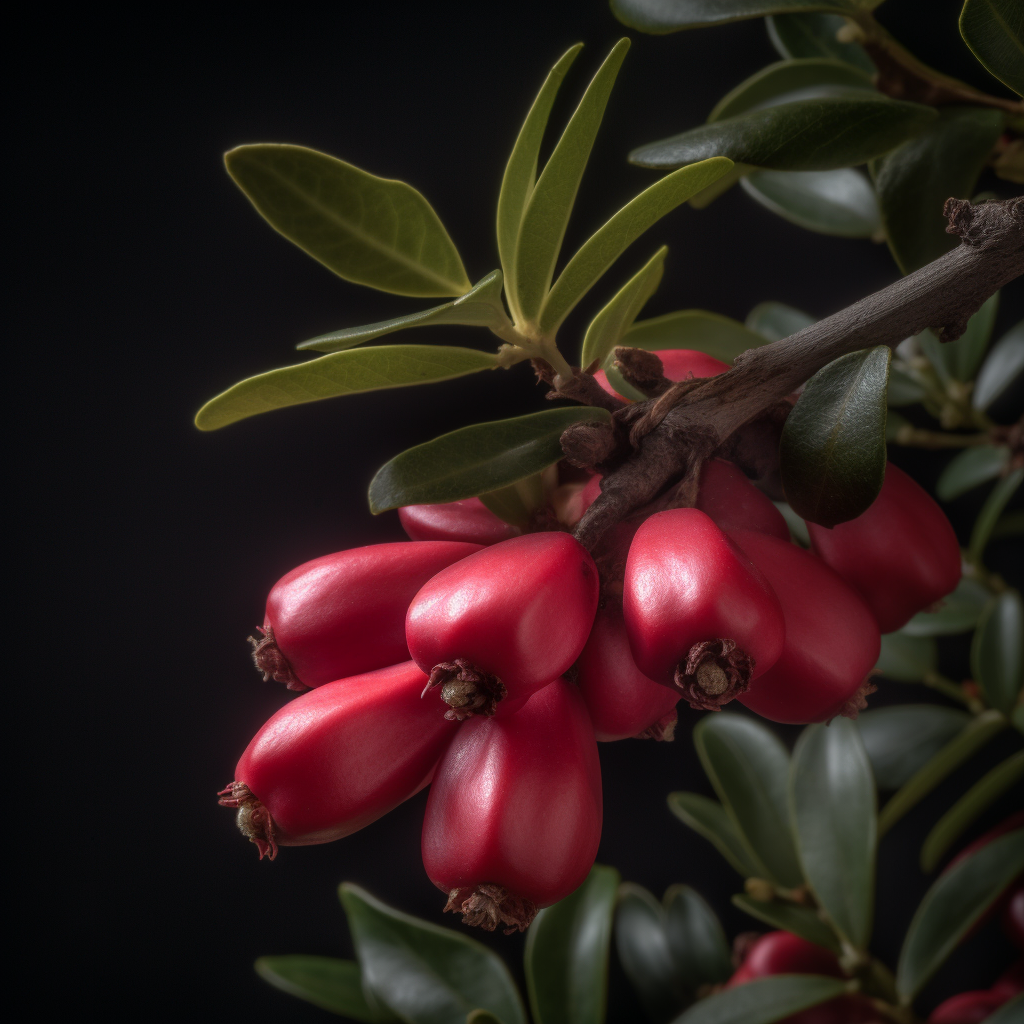
Lycium barbarum
Despite recent advances in disease management and prevention, heart failure (HF) prevalence is still high. hypertension, inflammation and oxidative stress are being investigated as important causative processes in HF. L. barbarum L. polysaccharides (LBPs) are widely used for their anti-inflammatory and antioxidant properties.
Thus, the aim of the present study was to evaluate the effects of LBPs on inflammation and oxidative stress markers in a pressure overload-induced HF rat model, surgically induced by abdominal aorta banding in Wistar rats (AAB) (n = 28). Also, control rats (n = 10) were subjected to a sham operation. After echocardiographic confirmation of HF (week 24), AAB rats were divided into three groups: rats treated with LBPs for 12 weeks: 100 mg/kg body weight /day (AAB_100, n = 9), 200 mg/kg body weight /day (AAB_200, n = 7) and no-treatment group (control AAB, n = 12). After 12 weeks of treatment with LBPs, the decline of cardiac function was prevented compared to the control AAB rats.
Treatment with 200 mg/kg body weight /day LBPs significantly reduced the inflammation as seen by cytokine levels (IL-6 and TNF-α) and the plasma lipid peroxidation, as seen by malondialdehyde levels. These results suggest that LBPs present anti-inflammatory and antioxidant effects with utility in a HF animal model and encourage further investigation of the cardioprotective effects of these polysaccharides.

Lepechinia caulescens
We have determined that the methanolic extract of L. caulescens (MELc) produced a significant vasodilator effect in a concentration-dependent and endothelium-dependent manner. This relaxation was blocked by N(omega)-nitro-L-arginine methylester (L-NAME), indicating that MELc vasodilator properties are endothelium mediated due to liberation of nitric oxide (NO). In this paper we aimed to corroborate its mode of action. MELc effects on noradrenaline (NA)-induced contraction in isolated rat aortic thoracic rings with endothelium (+E), in the presence of atropine (0.1 microM) and 1-H-[1,2,4]-oxadiazolo-[4,3a]-quinoxalin-1-one (ODQ, 1 microM) were conducted.
MELc relaxation curve was significantly shifted to the right in the presence of ODQ and atropine, thus confirming that its mode of action is related with activation of nitric oxide synthase (NOS) and the consequent increment in NO formation. Bio-guided study of MELc allowed the isolation of ursolic acid (UA, 50 mg) and ursolic-oleanolic acids mixture [UA/OA (7:3), 450 mg]. The relaxant effect of UA (0.038-110 microM) was evaluated in functional experiments. UA induced a significant relaxation in a concentration- and endothelium-dependent manner (IC(50)=44.15 microM) and did not produce a vasorelaxant effect on contraction evoked by KCl (80 mM). In addition, NA-induced contraction was significantly displaced to the right by UA (30 microM).
In order to determine its mode of action, UA-induced relaxant effect was evaluated in the presence of atropine (0.1 microM), indomethacin (10 microM), L-NAME (100 microM) and ODQ (1 microM). Relaxation was blocked by L-NAME and ODQ. On the other hand, UA (3 microM) provoked a significant displacement to the left in the relaxation curve induced by sodium nitroprusside (SNP, 0.32 nM to 0.1 microM), but it was not significant in the presence of Carbamoyl choline (carbachol, 1 nM to 10 microM). These results indicate that UA-mediated relaxation is endothelium dependent, probably due to NO release, and the consequent activation of vascular smooth muscle soluble guanylate cyclase (sGC), a signal transduction enzyme that forms the second messenger cGMP.

Lepidium sativum
antihypertensive effect of Lepidium sativum L. in spontaneously hypertensive rats
The antihypertensive and diuretic effects of the aqueous extract of Lepidium sativum L. (LS) were studied both in normotensive (WKY) and spontaneously hypertensive rats (SHR). Daily oral administration of the aqueous LS extract (20mg/kg for 3 weeks) exhibited a significant decrease in blood pressure (p<0.01) in SHR rats while in WKY rats, no significant change was noted during the period of treatment. The systolic blood pressure was decreased significantly from the 7th day (p<0.05) to the end of treatment (p<0.01) in SHR rats. The aqueous LS extract enhanced significantly the water excretion in WKY rats (p<0.001) but no statistically significant change was observed in SHR rats. Furthermore, oral administration of aqueous LS extract at a dose of 20mg/kg produced a significant increase of urinary excretion of sodium (p<0.05), potassium (p<0.01) and chlorides (p<0.01) in WKY rats.
In spontaneously hypertensive rats, the aqueous LS extract administration induced a significant increase of urinary elimination of sodium (p<0.01), potassium (p<0.001) and chlorides (p<0.001). Glomerular filtration rate showed a significant increase after oral administration of LS in normal rats (p<0.001) while in SHR rats, no significant change was noted during the period of treatment. Furthermore, no significant changes were noted on heart rate after LS treatment in SHR as well as in WKY rats. Our results suggest that daily oral administration of aqueous LS extract for 3 weeks exhibited antihypertensive and diuretic activities.

Leonurus japonicus
Stachydrine (Sta), a major constituent of Leonurus japonicus Houtt, has been reported to possess numerous cardioprotective effects. In this study, we evaluated the effect of Sta on pressure overload-induced diastolic heart failure in rats and investigated the mechanisms underlying the effect. Wistar rats were randomized to transverse aortic constriction (TAC) or sham operation. After 3 days, the rats that underwent TAC were randomized to treatment for a total of four experimental groups (n=10 each group): sham operation, TAC only, TAC + telmisartan (Tel), and TAC + stachydrine (Sta). After 12 weeks, we evaluated left ventricular hypertrophy, function, and fibrosis by echocardiography, pressure-volume loop analysis, and histology.
In addition, levels of fibrosis-related proteins in the heart were determined by Western blot analysis. Our results showed that Sta significantly suppressed TAC-induced cardiac hypertrophy, and TAC-induced increases in heart weight/body weight and heart weight/tibial length. In addition, Sta attenuated TAC-induced decreases in left ventricular ejection fraction and improved other hemodynamic parameters. Compared with the TAC only group, rats treated with Sta exhibited significant decreases in interstitial and perivascular fibrosis, TGF-βR1 protein levels, and phosphorylation of Smad2/3; however, protein levels of TGF-β1, TGF-βR2, and Smad4 did not differ significantly between the two groups.
Taken together, our results demonstrate that Sta protects against diastolic heart failure by attenuating myocardial hypertrophy and fibrosis via the TGF-β/Smad pathway.

Laelia autumnalis
The aim of the present study was to evaluate the possible mechanism of the vasorelaxant action of methanol extract from Laelia autumnalis (MELa) in isolated rat aortic rings, and to establish its antihypertensive activity in vivo. MELa (0.15–>50 microg/mL) induced relaxation in aortic rings pre-contracted with KCl (80 mM), showing an IC50 value of 34.61+/-1.41 microg/mL and E max value of 85.0+/-4.38% (in endothelium-intact rings) and an IC50 value of 45.11+/-4.17 microg/mL and E max value of 80.0+/-12.1% (in endothelium-denuded rings). Serotonin (5-HT, 1 x 10(-4) M) provoked sustained contraction, which was markedly inhibited by MELa (0.15–>50 microg/mL) in a concentration-dependent and endothelium-independent manner. Pretreatment with MELa (15, 46, 150, 300 and 1500 microg/mL) also inhibited contractile responses to norepinephrine (NE 1 x 10(-11) M to 1 x 10(-5.5) M). In endothelium-denuded rings, the vasorelaxant effect of MELa was reduced partially by ODQ (1 microM), but not by tetraethylammonium (5 microM), glibenclamide (10 microM), and 2-aminopyridine (100 microM).
The extract also reduced NE-induced transient contraction in Ca2+-free solution, and inhibited contraction induced by increasing external calcium in Ca2+-free medium plus high KCl (80 mM). The antihypertensive effect of MELa was determined in spontaneously hypertensive rats (SHR). A single oral administration of the extract (100 mg/kg) exhibited a significant decrease in systolic and diastolic blood pressure and heart rate (p<0.05) in SHR rats. Our results suggest that MELa induces relaxation in rat aortic rings through an endothelium-independent pathway, involving blockade of Ca2+ channels and a possible cGMP enhanced concentrations and also causes an antihypertensive effect.

Laminaria japonica
[Effect of haidonghua powder(HDHP) on hypothalamic obesity in rats].
Objective: To study the effect of HDHP including Laminaria japonica Aresch. and Benincasa hispida(Thunb.) Cogn. etc. on antiobesity in rats with hypothalamic obesity.
Method: A rat model of hypothalamic obesity induced by MSG was used and the relative indexes was observed.
Result: HDHP(2.5 g.kg-1) could significantly reduce the Lee’s index as well as the size of fat cells. HDHP did not influence the serum levels of T3 and T4, insulin and aldosterone, did not inhibited appetite not led to diarrhea.
Conclusion: HDHP has the effect of anti-obesity, Without any influencing on the function of thyroid gland and metabolism of water and salt. The mechanism is related to the reduction of fat cell size and the accumulation of fat.

Lilium lancifolium
Background: Polyphenols have the potential to reduce the risk of many metabolic disorders. Lily bulbs are rich in polyphenols; however, their effects on lipid metabolism remain unclear. This study aimed to explore the effects of lily bulbs’ polyphenols (LBPs) on oxidative stress and lipid metabolism.
Results: A total of 14 polyphenolic compounds in LBPs were identified by high-performance liquid chromatography equipped with diode-array detection mass spectrometry. Total phenolic compound in LBPs was 53.76 ± 1.12 g kg−1 dry weight. In cellular experiments, LBPs attenuated the disruption of mitochondrial membrane potential, impeded reactive oxygen species production, alleviated oxidative stress, and reduced lipid accumulation in oleic acid induced HepG2 cells. In in vivo studies, LBPs significantly inhibited body weight gain, reduced lipid levels in serum and liver, and improved oxidative damage in a dose-dependent manner in mice fed a high-fat diet. Moreover, LBPs ameliorated hepatic steatosis and suppressed the expression of hepatic-lipogenesis-related genes (SREBP-1c, FAS, ACC1, and SCD-1) and promoted lipolysis genes (SRB1 and HL) and lipid oxidation genes (PPARα and CPT-1) in mice fed a high-fat diet.
Conclusion: It was concluded that LBPs are a potential complementary therapeutic alternative in the development of functional foods to curb obesity and obesity-related diseases, such as metabolic syndrome.
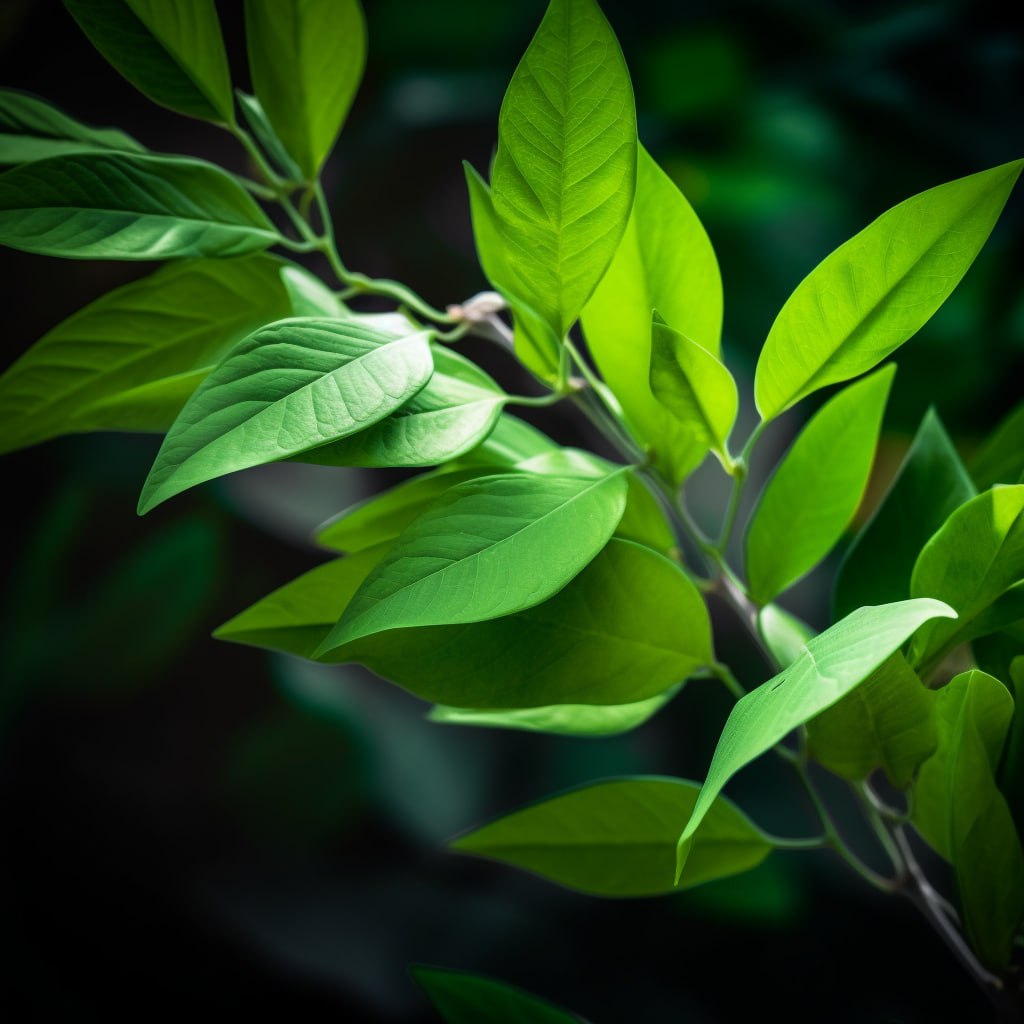
Loranthus ferrugineus
The mode by which Loranthus ferrugineus methanol extract antagonizes and/or modulates norepinephrine-induced vasoconstriction was investigated in rat aortic rings. The vascular effects of three different concentrations of this extract were challenged against cumulative additions of norepinephrine. Phentolamine, a nonselective α-adrenoceptor antagonist, verapamil, an L-type calcium channel blocker, and papaverine, a phosphodiesterase inhibitor, were used in three different concentrations as positive controls. Log concentration-response curves and double-reciprocal plots were constructed for the extract and each vasorelaxant. To characterize antagonism reversibility, the norepinephrine maximum contractile effect was examined before extract addition to the aortic ring chamber and after its removal. Phentolamine shifted the norepinephrine log concentration-response curve to the right with no significant depression in the maximum response.
Similar to verapamil and papaverine, the extract produced a rightward shift in norepinephrine log concentration-response curve and a significant drop in maximum response. The double-reciprocal plots showed comparable y-intercept values for all phentolamine concentrations, a characteristic of competitive antagonism. In contrast, different y-intercept values on double-reciprocal plots were obtained for each concentration of extract, verapamil, and papaverine, typical of noncompetitive antagonism.
The norepinephrine maximum contractile response was approximately similar before the addition of extract and after its removal. The data collectively showed that L. ferrugineus methanol extract exerted its vascular effect by reversible noncompetitive antagonism of norepinephrine-induced vasoconstriction. These findings add to the understanding of the cardiovascular mechanisms by which L. ferrugineus, a plant traditionally used for the management of hypertension, elicits its action.
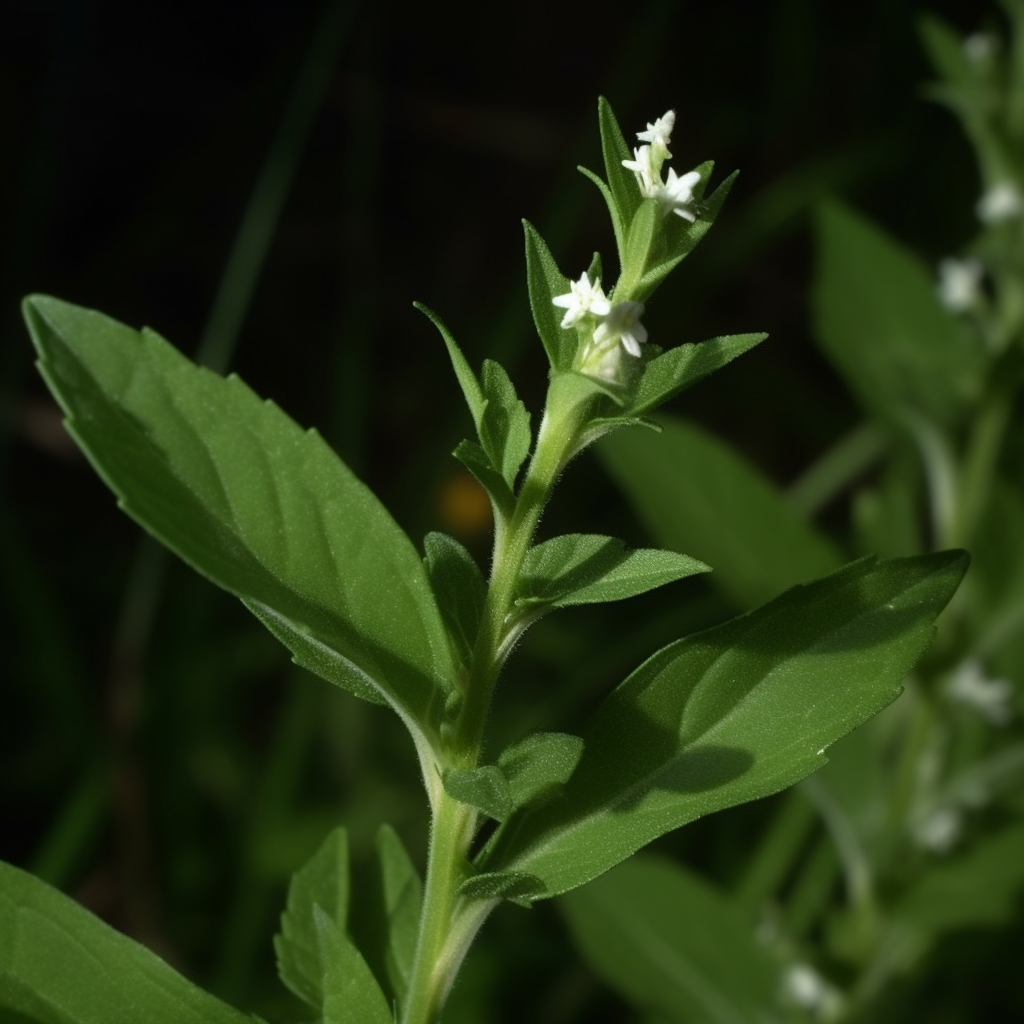
Lycopus lucidus
Aldosterone impairs vascular endothelial cell function.
Aldosterone is a mineralocorticoid hormone that plays an important role in regulating electrolyte balance and blood pressure and also participates in endothelial dysfunction. We evaluated the direct effect of aldosterone on human umbilical vein cells (HUVEC). Levels of eNOS phosphorylation by vascular endothelial growth factor were diminished, and the amount of NO produced in response to vascular endothelial growth factor measured as NO2+NO3 was significantly decreased in cells previously incubated with aldosterone. Incubation with aldosterone for 24 h dose-dependently increased Nox4 mRNA expression in HUVEC. Although NF-kappaB was not apparently activated by aldosterone, mRNA levels of vascular cell adhesion molecule-1, E-selectin, monocyte chemotactic protein-1, and intercellular adhesion molecule-1 in HUVEC were significantly increased after incubation with aldosterone.
Thus, aldosterone directly causes the dysregulation of endothelial cell function, which may be partly responsible for high blood pressure and atherosclerosis.
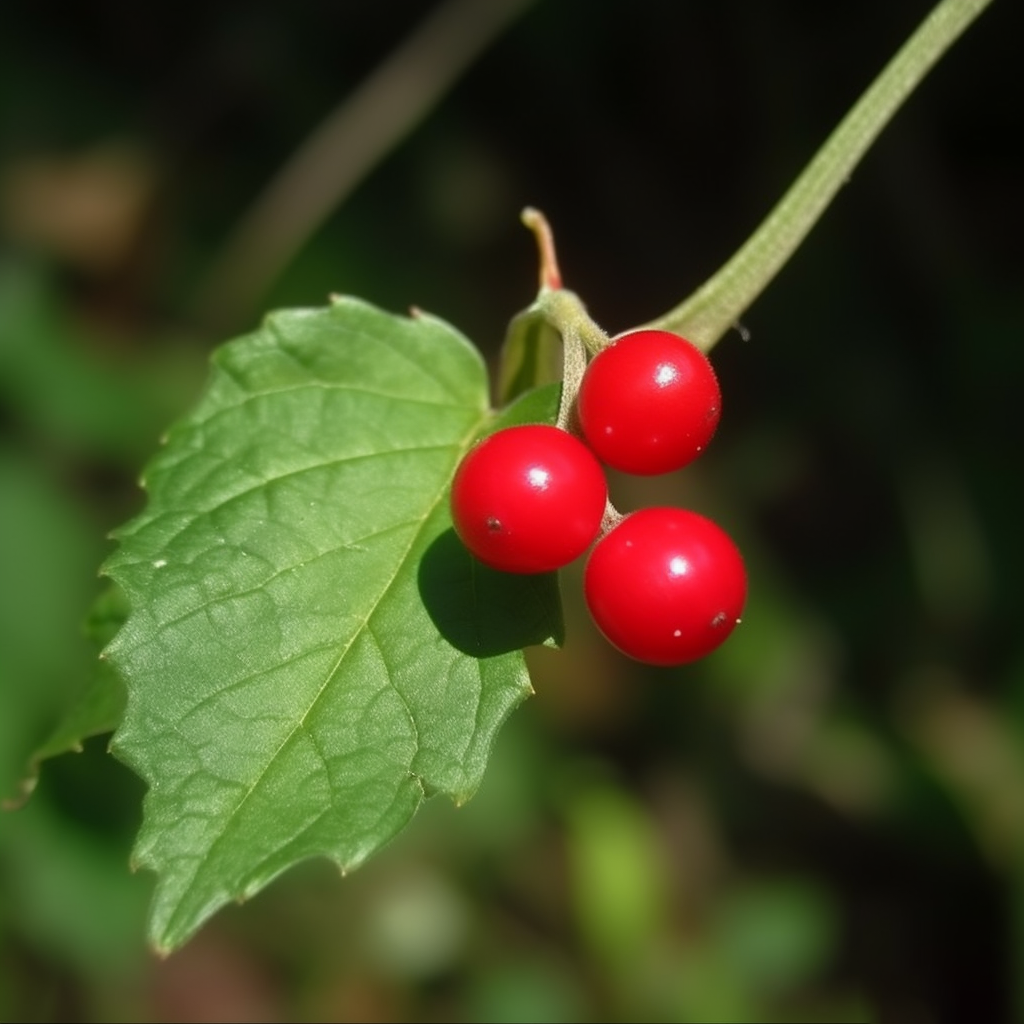
Melothria Maderaspatana
The present study was designed to investigate the antihypertensive and antioxidant effect of Melothria maderaspatana leaf extract (MME) on sham-operated and DOCA-salt (deoxycorticosterone acetate) induced hypertensive rats. Administration of DOCA-salt significantly increased the systolic (from 127 to 212 mm Hg) and diastolic (from 91 to 174 mm Hg) blood pressure compared to sham-operated control rats, while treatment with MME significantly reduced the systolic (from 212 to 135 mm Hg) and diastolic (from 174 to 96 mm Hg) blood pressure compared to hypertensive control.
In DOCA-salt rats, the plasma and tissue concentration of thiobarbituric acid reactive substances (TBARS) and lipid hydroperoxide (LOOH) significantly increased and administration of MME significantly reduced these parameters towards the levels in sham-operated control. In hypertensive rats, activities of the enzymatic antioxidants such as superoxide dismutase (SOD), catalase (CAT) and glutathione peroxidase (GPx) and levels of non-enzymatic antioxidants such as vitamin C, vitamin E and reduced glutathione (GSH) decreased significantly in the plasma and tissues.
Administration of MME returned the enzymatic and non-enzymatic antioxidants towards sham-operated control. MME shows both antihypertensive and antioxidant properties in DOCA-salt hypertensive rats and, among the three different doses tested, 200 mg/kg caused the maximum effect.
The present study was designed to investigate the antihypertensive and antioxidant effect of Melothria maderaspatana leaf extract (MME) on sham-operated and DOCA-salt (deoxycorticosterone acetate) induced hypertensive rats. Administration of DOCA-salt significantly increased the systolic (from 127 to 212 mm Hg) and diastolic (from 91 to 174 mm Hg) blood pressure compared to sham-operated control rats, while treatment with MME significantly reduced the systolic (from 212 to 135 mm Hg) and diastolic (from 174 to 96 mm Hg) blood pressure compared to hypertensive control.
In DOCA-salt rats, the plasma and tissue concentration of thiobarbituric acid reactive substances (TBARS) and lipid hydroperoxide (LOOH) significantly increased and administration of MME significantly reduced these parameters towards the levels in sham-operated control. In hypertensive rats, activities of the enzymatic antioxidants such as superoxide dismutase (SOD), catalase (CAT) and glutathione peroxidase (GPx) and levels of non-enzymatic antioxidants such as vitamin C, vitamin E and reduced glutathione (GSH) decreased significantly in the plasma and tissues.
Administration of MME returned the enzymatic and non-enzymatic antioxidants towards sham-operated control. MME shows both antihypertensive and antioxidant properties in DOCA-salt hypertensive rats and, among the three different doses tested, 200 mg/kg caused the maximum effect.

Momordica charantia
Various morphological parts (roots, stems, leaves and fruits) of Momordica charantia Linn (family: Cucurbitaceae) are used traditionally in African folk medicine to manage, control and/or treat a plethora of human ailments, including diabetes mellitus and hypertension. In order to scientifically appraise some of the folkloric, anecdotal and ethnomedical uses of M charantia, the present study was undertaken to investigate the hypoglycaemic and hypotensive effects of M charantia whole-plant aqueous extract (MCE) in rat experimental paradigms. The hypoglycaemic effect of the plant extract was examined in normal and diabetic rats, using streptozotocin (STZ)- induced diabetes mellitus models. Normotensive (normal), and hypertensive Dahl salt-sensitive rats were used to probe the hypotensive (antihypertensive) effect of the plant extract. Chlorpropamide was used as reference hypoglycaemic agent for comparison. Acute oral administrations of the plant extract caused dose-related, significant hypoglycaemia in normal (normoglycaemic) and STZ-treated, diabetic rats.
Furthermore, acute intravenous administrations of MCE produced dose-dependent, significant reductions in systemic arterial blood pressure and heart rates of normal, and hypertensive Dahl salt-sensitive rats. Although the exact hypoglycaemic and hypotensive mechanisms of action of the plant extract remain speculative at the moment, it is unlikely that the herb causes hypotension in the mammalian experimental animal model used via cholinergic mechanisms, since its cardiovascular effects are resistant to atropine pretreatment.
However, the findings of this experimental animal study indicate that the plant extract possesses hypoglycaemic and hypotensive properties, and therefore, lend pharmacological credence to folkloric, ethnomedical uses of the plant in the management and/or control of diabetes mellitus and hypertension in some rural African communities.
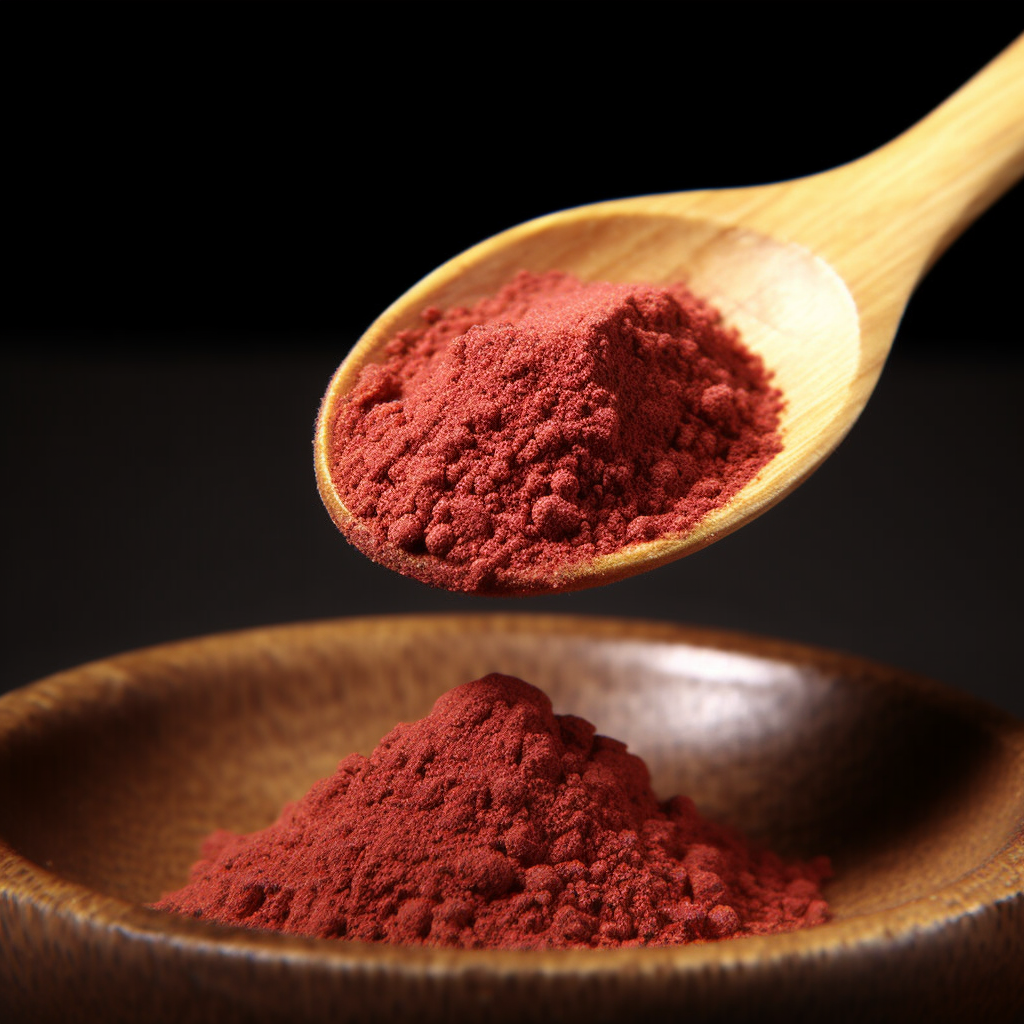
Monascus purpureus
This study aimed to determine the antihypertensive and metabolic effects of an aqueous extract of Monascus purpureus M9011 on fructose-induced hypertensive rats. After dietary feeding of fructose for 2 weeks, the rats exhibited significantly higher systolic blood pressure (SBP), mean arterial pressure (MAP), and plasma insulin and triglyceride levels, but lower insulin sensitivity than those in control rats on regular diet. The intragastric loading of fructose-fed rats with M9011 containing γ-aminobutyric acid (GABA, 1 mg·kg-1·day-1) prevented the development of fructose-induced hypertension.
After fructose-induced hypertension had been established, intragastric loading of M9011 reversed the elevated blood pressure to normal level. Administration of pure GABA at the same dose as that contained in M9011 failed to prevent or reverse hypertension due to fructose consumption. Chronic M9011 treatment significantly suppressed the fructose-induced elevation in total cholesterol levels and enhanced the recovery of high-density lipoprotein cholesterol/total cholesterol ratio.
However, M9011 treatment did not alter insulin sensitivity or the plasma levels of insulin, glucose, and triglyceride in fructose-fed and control rats. The present results suggest that M9011 is a novel, potent, food-based antihypertensive agent with the capability to improve long-term control of cholesterol metabolism in rats and may be of importance in clinical application for the hypertensive diabetic population.

Nigella sativa
antihypertensive effect of Nigella sativa seed extract in patients with mild hypertension
Hypertension (HT) is a lifestyle-related disease and dietary modifications are effective for its management and prevention. We conducted a randomized, double-blind, placebo-controlled trial to evaluate the efficacy of treatment with an oral Nigella sativa (NS) seed extract supplement in patients with mild HT. Subjects were randomized into three groups: a placebo and two test groups that received 100 and 200 mg of NS extract twice a day. After 8 weeks, systolic blood pressure (SBP) values in both case groups were found to be significantly reduced when compared with the baseline values for each group. In addition, the decrease in SBP in the two case groups was statistically significant relative to the placebo group (P < 0.05-0.01).
Meanwhile, diastolic blood pressure (DBP) values in the case groups were found to be significantly reduced from the baseline and a significant reduction was also observed in these groups (P < 0.01) when compared with the placebo group. In addition, extract administration reduced both SBP and DBP in a dose-dependent manner. Meanwhile, NS extract caused a significant decline in the level of total and low-density-lipoprotein (LDL)-cholesterol relative to baseline data. No complications caused by NS were observed.
The results suggest that the daily use of NS seed extract for 2 months may have a blood pressure-lowering effect in patients with mild HT.
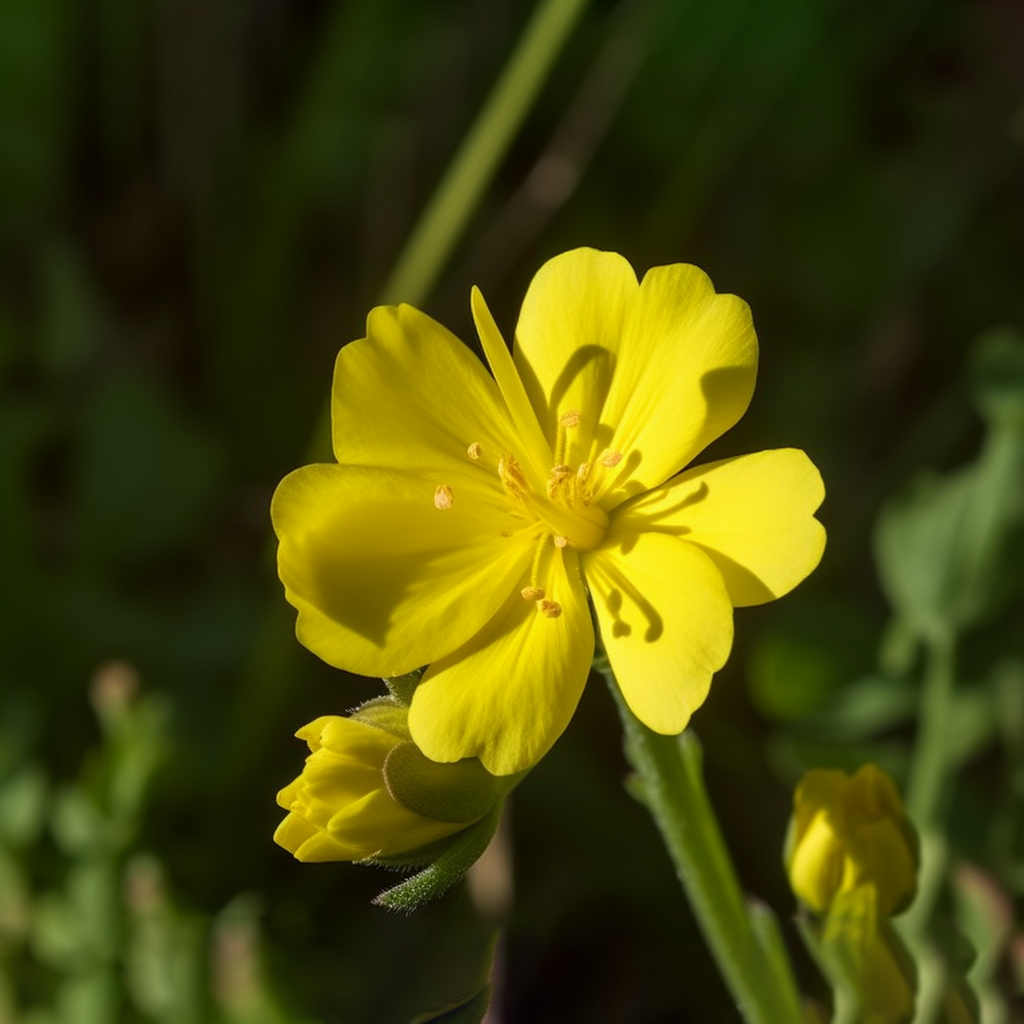
Oenothera biennis
The effect of evening primrose oil on adiponectin level and some biochemical parameters in model of fructose-induced metabolic syndrome were investigated. The rats were divided into 4 groups: control, evening primrose oil, fructose, fructose + evening primrose oil. Body weight, daily feed and water consumptions and systolic blood pressures of animals were measured.
At the end of trial, blood samples were taken, livers were excised and histopathological examination was performed. Glucose, uric acid, triglyceride, T.cholesterol, LDL, HDL, VLDL, ALT, AST, ALP, LDH, adiponectin, insulin, IL-6, TNF-α, TAC, and TOS levels were analysed. Some analysed parameters and systolic blood pressure of fructose + evening primrose oil group decreased significantly compared to fructose group and adiponectin, TAC, and HDL levels were significantly increased.
As conclusion, evening primrose oil can be considered as antioxidant agent by reducing oxidative stress, increasing adiponectin levels and insulin sensitivity, anti-inflammatory properties, exhibiting anti-atherogenic effect by regulating dyslipidemia and systolic blood pressure.

Ophiopogon japonicus
The polysaccharide (OJP1), extracted from the root of Ophiopogon japonicus, is a well-known traditional Chinese medicine used to treat cardiovascular diseases. The present study was set up to investigate the cardioprotective effect of OJP1 on isoproterenol (ISO)-induced myocardial ischemia injury in rats. Results showed that pretreatment with OJP1 (100, 200 and 300 mg/kg) significantly reduced ISO-induced ST-segment elevation and the heart index, attenuated the levels of marker enzymes (AST, LDH, CK and CK-MB), along with a significantly enhanced the activities of ATPases. Moreover, pretreatment with OJP1 not only enhanced the activities of SOD, GPx and CAT in serum and myocardium, but also decreased the level of MDA.
The biochemical and histopathological analysis also showed that OJP1 can alleviate the myocardial injury induced by ISO. Taken together, our results indicated that oral administration of OJP1 offered significant cardioprotective effect against the damage induced by ISO through enhancement of endogenous antioxidants.
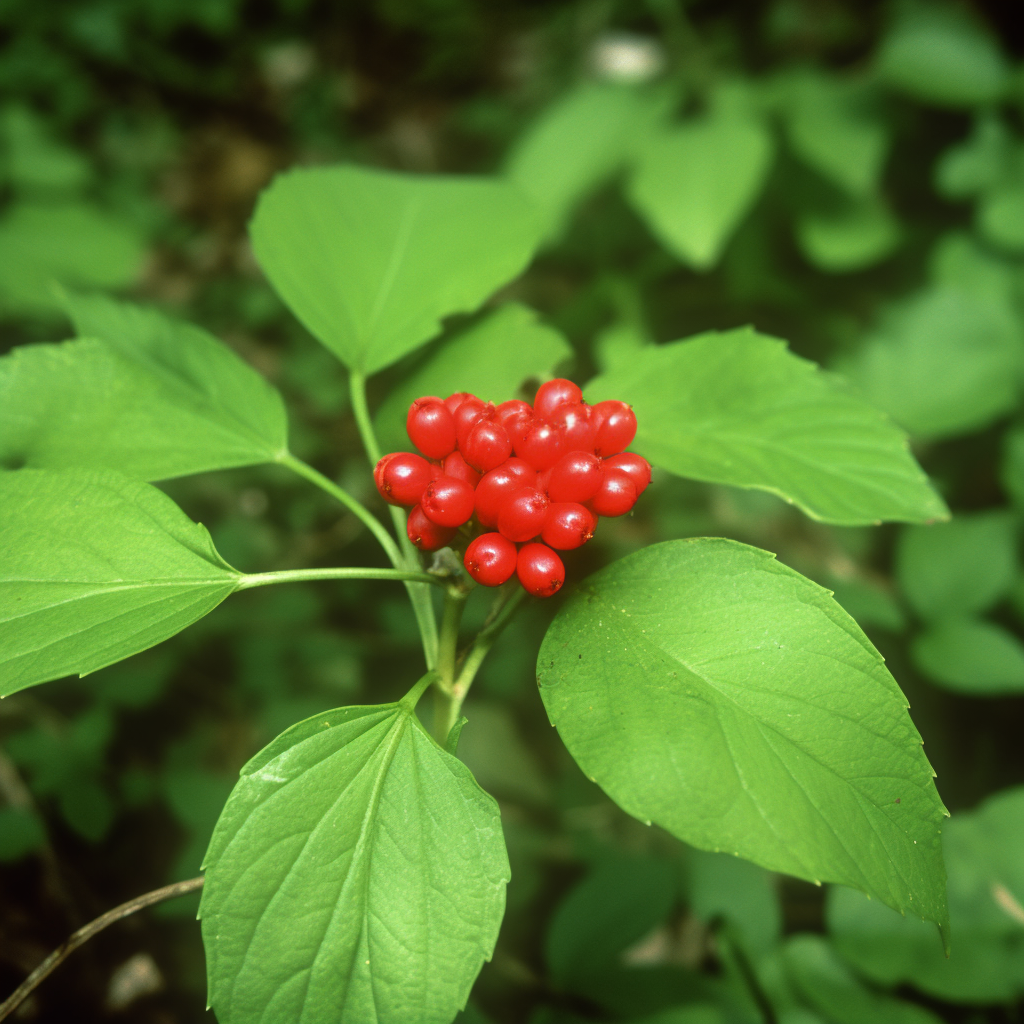
Panax ginseng
This study investigates the effects of the Panax ginseng (Araliaceae) extract G115 on angiotensin-converting enzyme (ACE) activity and nitric oxide (NO) in cultured human endothelial cells from umbilical veins (HUVEC) and bovine mesenteric arteries (BMA). In HUVEC, ACE activity was significantly reduced after 10 min incubation with aqueous extract of ginseng 5.0 and 10 mg/ml.
This effect was additative with the inhibition of the traditional ACE inhibitor enalaprilat. No effect was seen on NO production from the cells. angiotensin I-induced contraction of BMA was significantly attenuated by 0.1 and 0.5 mg/ml ginseng, while no endothelium-dependent or -independent relaxation was seen. In conclusion, extract of Panax ginseng (G115) inhibits ACE activity, but does not affect NO production in HUVEC and BMA.
Ginsenoside Rg1 protects mouse podocytes from aldosterone-induced injury in vitro
Aim: Aldosterone is elevated in many diseases such as hypertension, diabetic nephropathy and chronic kidney disease, etc. The aim of this study was to investigate the effects of aldosterone on intracellular ROS production and autophagy in podocytes in vitro, and to explore the possibility of ginsenoside Rg1 (Rg1) being used for protecting podocytes from aldosterone-induced injury.
Methods: MPC5 mouse podocyte cells were tested. Autophagosome and autophagic vacuole formation were examined under confocal microscopy with MDC and acridine orange staining, respectively. ROS were detected with flow cytometry. Malondialdehyde content and superoxide dismutase (T-SOD) activity were measured using commercial kits. The expression of LC3-II, beclin-1, SOD2 and catalase was measured by Western blotting.
Results: Treatment with aldosterone (10 nmol/L) significantly increased ROS generation and the expression of SOD2 and catalase in MPC5 cells. Furthermore, treatment with aldosterone significantly increased the conversion of LC3-I to LC3-II, beclin-1 expression and autophagosome formation. Co-treatment with rapamycin (1 ng/mL) or chloroquine (10 μmol/L) further increased aldosterone-induced autophagosome formation. Co-treatment with Rg1 (80 ng/mL) effectively relieved oxidative stress and increased T-SOD activity at the early stage and subsequently decreased autophagy in aldosterone-treated podocytes. Co-treatment with 3-MA (4 mmol/L) or NAC (50 mmol/L) exerted similar effects against aldosterone-induced autophagy in podocytes.
Conclusion: Aldosterone enhances ROS generation and promotes autophagy in podocytes in vitro. Ginsenoside-Rg1 effectively relieves aldosterone-induced oxidative stress, thereby indirectly inhibiting aldosterone-induced podocyte autophagy.

Panax pseudo-ginseng
Objective Research on the function of Panax Notoginsenoside(PNS) in improving the cardiac function in rats with acute post-myocardial infarction(AMI) left ventricular remodeling(LVRM). Methods Models of AMI were produced by ligation of left anterior descending coronary artery except the sham-operation group, building rat model of AMI, after 24 hours of postoperative in rats.The rats were randomly divided into control and experimental groups, then respectively gavaged NS, fosinopril group and the low middle and high dosage of PNS for four consecutive weeks.
The cardiac function index such as Ventricular septal end-diastolic thickness (IVSd),Left ventricular end-diastolic dimension(LVIDd), End-systolic ventricular septal thickness(IVSs), Left ventricular end-systolic diameter (LVIDs), End-diastolic posterior wall thickness of left ventricular (LVPWd),End-systolic posterior wall thickness of left ventricular (LVPWs), Ejection fraction (EF),The percentage of left ventricular systolic(FS), Mitral early diastolic flow velocity mouth(MV),Heart rate(HR) in the rats were observed.
Result Compared with the NS group, EF, FS and MV(P0.01~0.05) can be significantly improved by PNS in middle and high dosage group. Conclusion Treatment with PNS in post AMI LVRM enhanced left ventricular systolic and diastolic function,decreased peripheral resistance,PNS can improve the cardiac function in post AMI LVRM.

Polygonum cuspidatum
Traditional Chinese medicine (TCM) has been widely used in China for thousands of years to treat and prevent diseases. TCM has been proven safe and effective, and it is being considered as one of the important types of complementary and alternative medicine and receives increasing attention worldwide. The dried root of Polygonum cuspidatum Sieb. et Zucc. (also known as “Hu Zhang” in Chinese) is one of the medicinal herbs listed in the Pharmacopoeia of the People’s Republic of China. Hu Zhang is widely distributed in the world. It can be found in Asia and North America and is used as folk medicine in countries such as Japan and Korea. In China, Hu Zhang is usually used in combination with other TCM herbs.
The therapeutic uses of those Hu Zhang-containing TCM prescriptions or formulations are for treating cough, hepatitis, jaundice, amenorrhea, leucorrhea, arthralgia, burns and snake bites. Recent pharmacological and clinical studies have indicated that Hu Zhang has antiviral, antimicrobial, anti-inflammatory, neuroprotective, and cardioprotective functions. This review gives a summary of the reported therapeutic effects of the active compounds and the different extracts of Hu Zhang.

Pleurotus nebrodensis
antihypertensive effect of Pleurotus nebrodensis in spontaneously hypertensive rats
In this study, we examined the effects of Pleurotus nebrodensis on systolic blood pressure of spontaneously hypertensive rats. Single-dose and continuous-dose tests with sample diets made from the fruit body of the mushroom, P. nebrodensis were carried out on SHR and control rats. Sample diets included 6% dry powder of fruit body (6% dry powder), hot water extract, polysaccharide fraction, protein fraction, dialyzable fraction and non-dialyzable fraction. Polysaccharide and protein fractions were obtained by hot water extraction. The protein fraction was separated to the dialyzable fraction and non-dialyzable fraction by dialysis. In the single-dose test, protein fraction, hot water extract and polysaccharide fraction decreased systolic blood pressure.
Blood pressure was lowered after administration for 2 h, and it returned to the pre-administration blood pressure after 48 h. In the continuous-dose test, spontaneously hypertensive rats were fed each of the diets for 16 weeks. The 6% dry powder group showed significantly inhibited elevation of blood pressure compared with the control group and there was no influence on total cholesterol and triglyceride levels. The non-dialyzable fraction showed suppression of increase in blood pressure from the start of the continuous oral administration. Effects on the rennin angiotensin system and renal function were also indicated. The antihypertensive action effect of P. nebrodensis can be expected to not only prevent but also to improve hypertension.
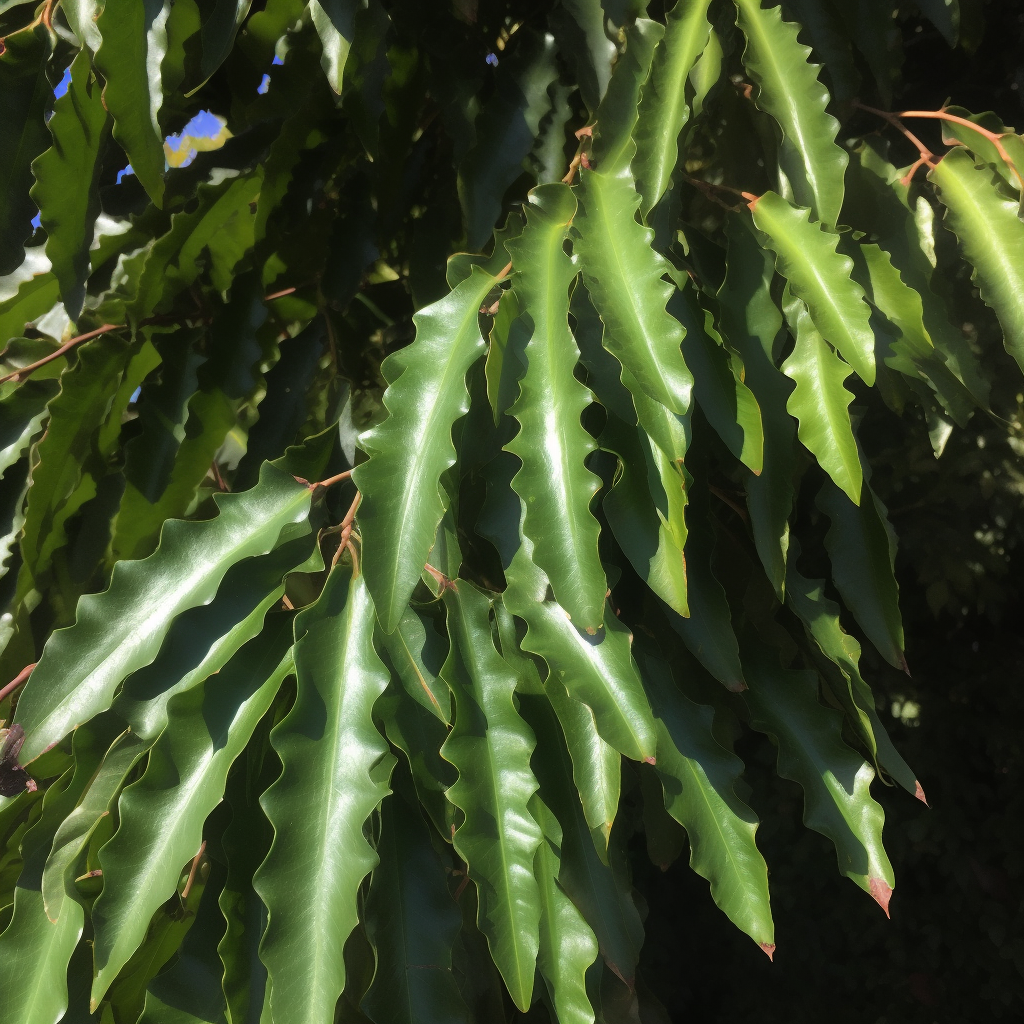
Polyalthia longifolia
A defatted extract of Polyalthia longifolia var. pendula root bark (PRB) in 50% methanol showed a significant ability to reduce blood pressure. It caused a 22% and 47% fall in mean arterial blood pressure (MABP) in rats at doses of 3 mg/kg and 30 mg/kg, respectively. Compounds purified from this extract include kolavenic acid (3), clerodane (1) and its isomer (2), liriodenine (4), lysicamine (5) and bisclerodane imide (6) and its isomer (7). Of these, only kolavenic acid produced a 22% fall in MABP, at a dose of 30 mg/kg. PRB showed a decrease in blood pressure of normotensive and egg yolk induced hypertensive rats. The LD50 of PRB was determined as 100 mg/kg in mice.

Prunella vulgaris
A selective and sensitive liquid chromatography tandem mass spectrometry method was developed for the simultaneous determination of salviaflaside and rosmarinic acid in rat plasma. Sample preparation was carried out through liquid–liquid extraction with ethyl acetate using curculigoside as internal standard (IS). The analytes were determined by selected reaction monitoring operated in the positive ESI mode. Chromatographic separation was performed on an Agilent Eclipse Plus C18 column (100 × 4.6 mm, 1.8 μm) with a mobile phase consisting of methanol–water–formic acid (50:50:0.1, v/v/v) at a flow rate of 0.3 mL/min. The run time was 1.9 min per sample and the injection volume was 5 μL.
The method had an LLOQ of 1.6 ng/mL for salviaflaside and 0.94 ng/mL for rosmarinic acid in plasma. The linear calibration curves were fitted over the range of 1.6–320 ng/mL for salviaflaside and 0.94–188 ng/mL for rosmarinic acid in plasma with correlation coefficients (r2) >0.99. Intra- and inter-day precisions (relative standard deviation) were < 13.5%, and accuracies (relative error) were between −8.6% and 14.5% for all quality control samples. The method was validated and applied to the pharmacokinetics of salviaflaside and rosmarinic acid in plasma after oral administration of Prunella vulgaris extract to rats.
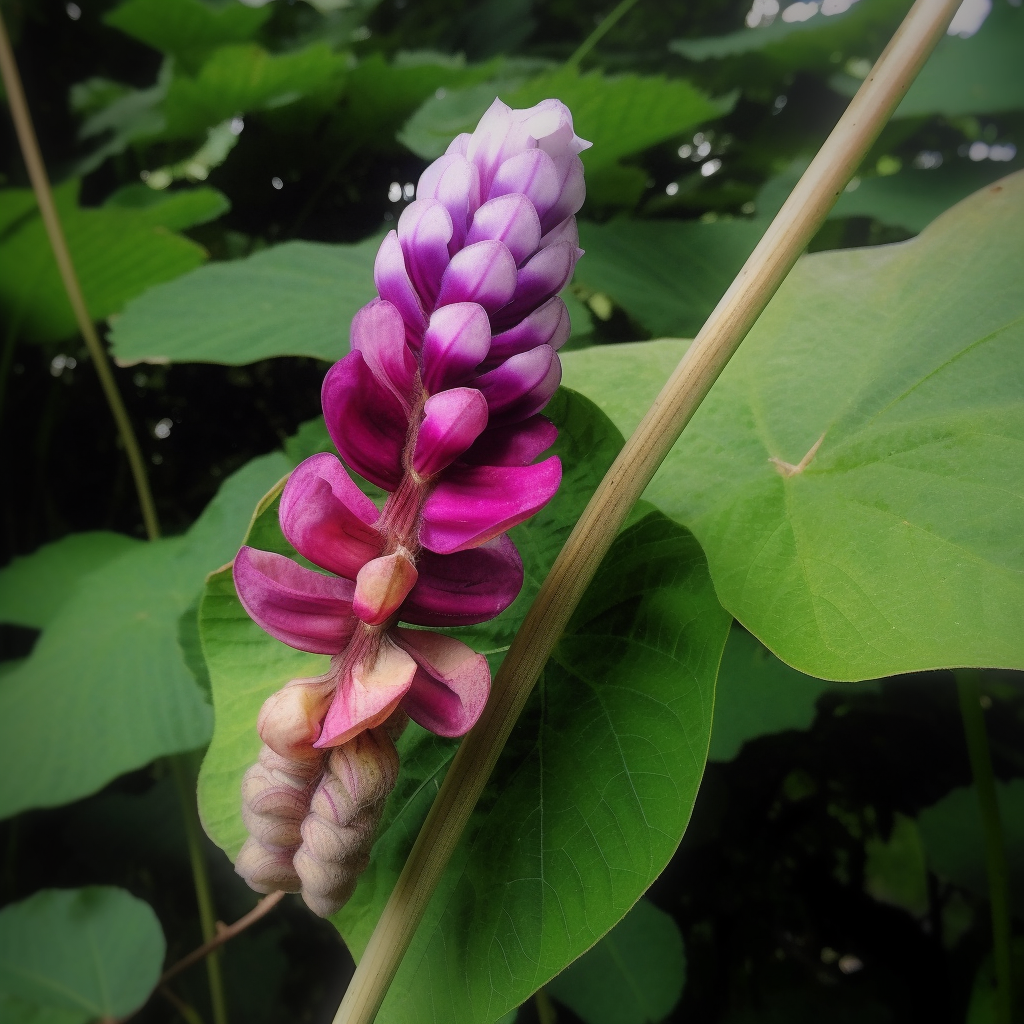
Pueraria lobata
Introduction. hypertension in association with diabetes (DM), renal impairment (RI), and left ventricular hypertrophy (LVH) increases the risk of future cardiovascular events. We hypothesize, traditional herbal medicines Danshen and Gegen (D&G) have beneficial effects on atherogenesis in these high-risk hypertensive subjects. Subjects and Methods. 90 asymptomatic hypertensive subjects associated with LVH (63.3%), DM (62.2%), or RI (30%) were randomized to receive D&G herbal capsules 1 gm/day, 2 gm/day, or identical placebo capsules in double-blind and parallel fashion for 12 months. Brachial flow-mediated dilation (endothelium-dependent dilation, FMD) and carotid intima-media thickness (IMT) were measured by ultrasound.
All data were analyzed using the Statistical Package for Social Sciences in Windows 16.0. Results. Their mean age was years, and 74.4% were male. After 12 months of adjunctive therapies and compared with baseline, there were no significant changes in blood pressure, heart rate, hematological, glucose, and creatinine profiles in both placebo and D&G groups. FMD improved significantly during D&G and less so after placebo treatment. There was a mild but significant decrease in carotid IMT after D&G but no significant changes after placebo. A trend of better improvement in FMD after higher versus lower D&G dosages was seen.
D&G were well tolerated, with no significant adverse events or blood biochemistry changes. Conclusion. D&G adjunctive treatment was well tolerated and significantly improved atherogenesis in high-risk hypertensive patients, with potential in primary atherosclerosis prevention.

Passiflora Edulis
antihypertensive effect of an extract of Passiflora edulis rind in spontaneously hypertensive rats
Orally administered methanol extract of Passiflora edulis rind (10 mg/kg or 50 mg/kg) or luteolin (50 mg/kg), which is one of consistent polyphenols of the extract, significantly lowered systolic blood pressure in spontaneously hypertensive rats (SHRs). Quantitative analysis by liquid chromatography tandem mass spectrometry (LC-MS/MS) showed that the extract contained 20 microg/g dry weight of luteolin and 41 microg/g dry weight of luteolin-6-C-glucoside. It also contained gamma-aminobutyric acid (GABA, 2.4 mg/g dry weight by LC-MS/MS or 4.4 mg/g dry weight by amino acid analysis) which has been reported to be an antihypertensive material.
Since the extract contained a relatively high concentration of GABA, the antihypertensive effect of the extract in SHRs might be due mostly to the GABA-induced antihypertensive effect and partially to the vasodilatory effect of polyphenols including luteolin.
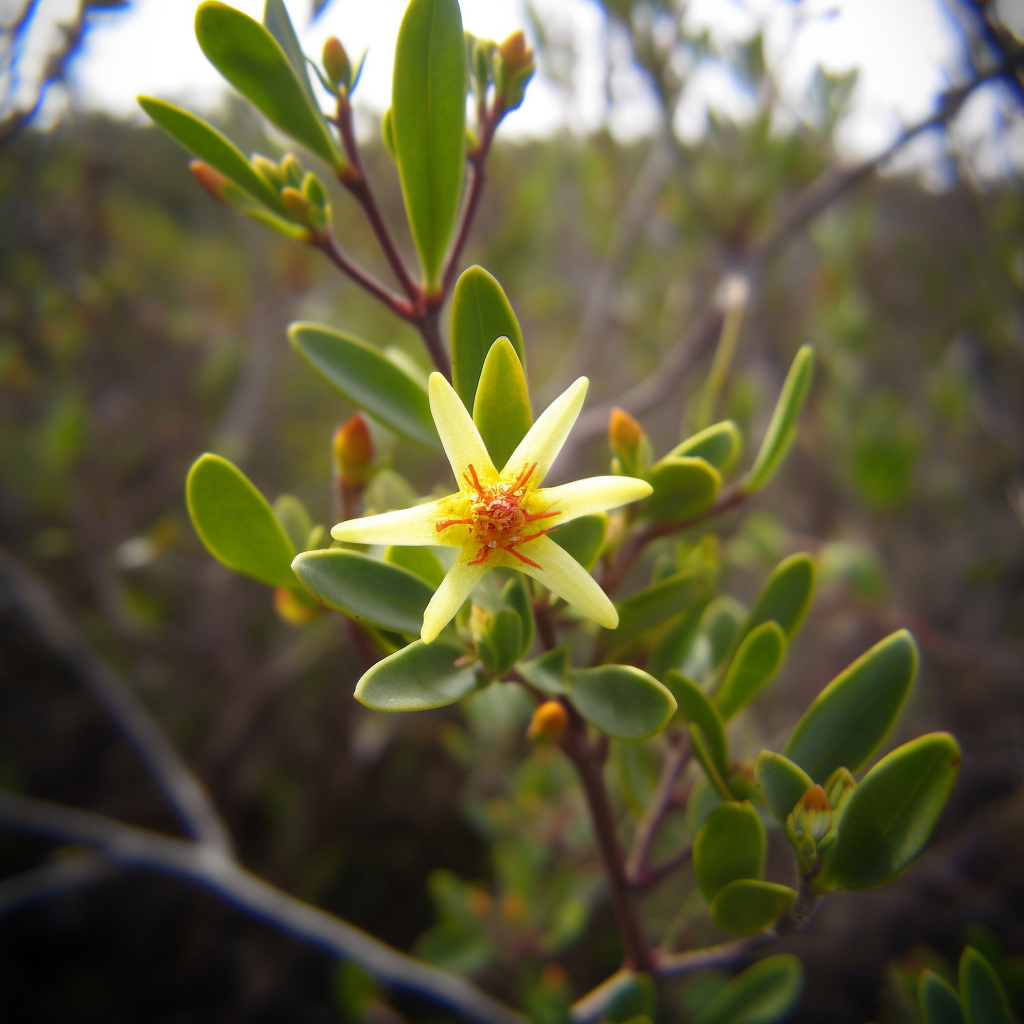
Periploca laevigata
The present study describes the chemical composition, and antimicrobial, antioxidant and angiotensin I-converting enzyme (ACE) inhibitory activities of essential oil from Periploca laevigata root barks (PLRB), an aromatic plant widely distributed in Tunisia and used as a traditional medicinal plant. Gas chromatography/mass spectrometry was used to determine the composition of the PLRB oil. Forty-three components were identified in the essential oil and the main compounds were benzaldehyde (56%), methyl 4-methoxysalicylate (6.55%) and carvacrol (4.75%). The PLRB essential oil exhibited a dose-dependent manner of inhibitory activity toward ACE. The highest ACE inhibitory activity (54%) was observed at a concentration of 30 μg/ml. The PLRB oil was also found to possess antioxidant activities, as evaluated by the 1,1-diphenyl-2-picrylhydrazyl (DPPH) radical method, β-carotene bleaching and reducing power assays.
The antimicrobial activity of the essential oil was also investigated on several microorganisms. The inhibition zones and minimal inhibitory concentration (MIC) values of bacterial strains were in the range of 12–46 mm and 50–300 μg/ml, respectively. The inhibitory activity of the PLRB essential oil against Gram-positive bacteria was significantly higher than against Gram-negative. It also exhibited remarkable activity against several fungal strains.Our findings demonstrate that the essential oil from P. laevigata might be a good candidate for further investigations of new bioactive substances.
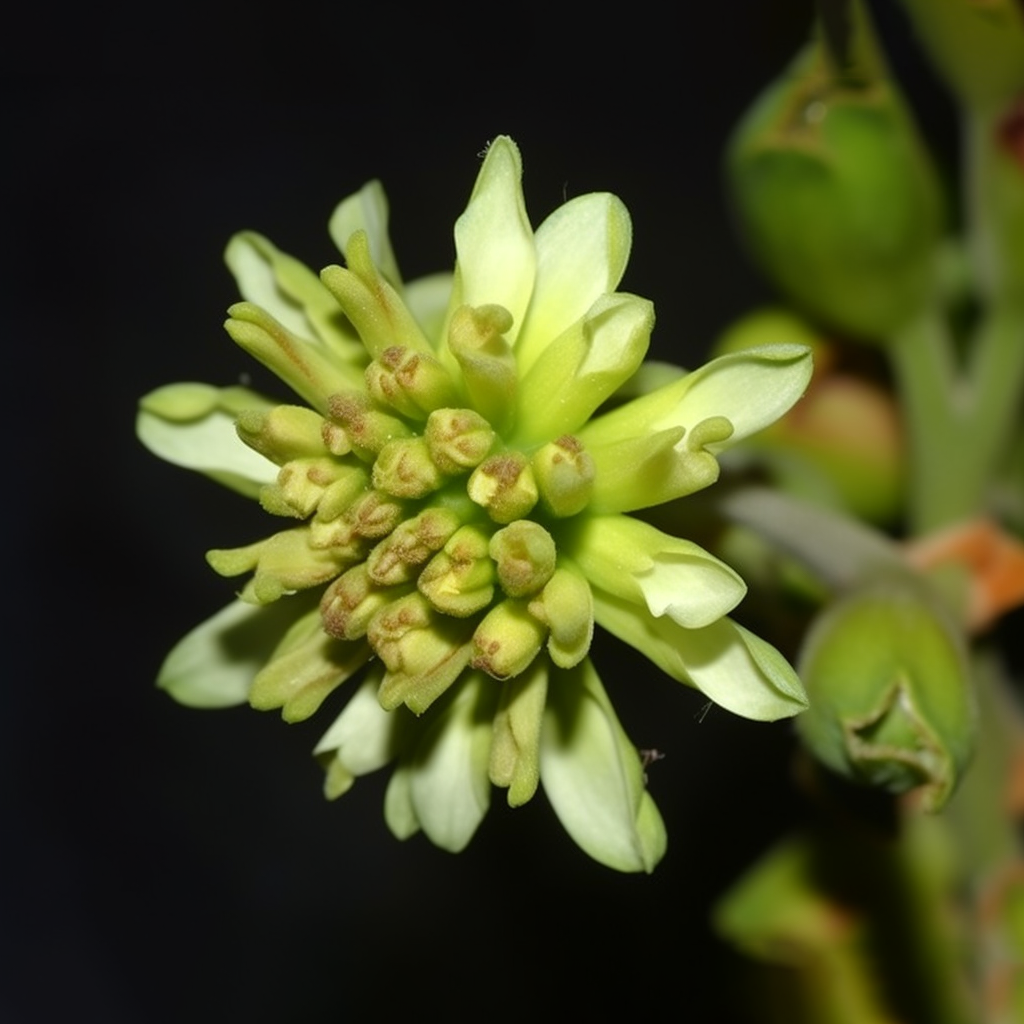
Persea americana
The cardiovascular effects of Persea americana Mill (Lauraceae) aqueous leaf extract (PAE) have been investigated in some experimental animal paradigms. The effects of PAE on myocardial contractile performance was evaluated on guinea pig isolated atrial muscle strips, while the vasodilatory effects of the plant extract were examined on isolated portal veins and thoracic aortic rings of healthy normal Wistar rats in vitro. The hypotensive (antihypertensive) effect of the plant extract was examined in healthy normotensive and hypertensive Dahl salt-sensitive rats in vivo. P americana aqueous leaf extract (25-800 mg/ml) produced concentration-dependent, significant (p < 0.05-0.001), negative inotropic and negative chronotropic effects on guinea pig isolated electrically driven left and spontaneously beating right atrial muscle preparations, respectively.
Moreover, PAE reduced or abolished, in a concentration-dependent manner, the positive inotropic and chronotropic responses of guinea pig isolated atrial muscle strips induced by noradrenaline (NA, 10(-10)-10(-5) M), and calcium (Ca(2+), 5-40 mM). PAE (50-800 mg/ml) also significantly reduced (p < 0.05-0.001) or abolished, in a concentration-dependent manner, the rhythmic, spontaneous, myogenic contractions of portal veins isolated from healthy normal Wistar rats. Like acetylcholine (ACh, 10(-8)-10(-5) M), the plant extract (25- 800 mg/ml) produced concentration-related relaxations of isolated endothelium-containing thoracic aortic rings pre-contracted with noradrenaline. The vasorelaxant effects of PAE in the isolated, endothelium-intact aortic rings were markedly inhibited or annulled by N(G)-nitro-L-arginine methyl ester (L-NAME, 10(-5) M), a nitric oxide synthase inhibitor. Furthermore, PAE (25-400 mg/kg iv) caused dose-related, transient but significant reductions (p < 0.05-0.001) in the systemic arterial blood pressure and heart rates of the anaesthetised normotensive and hypertensive rats used.
The results of this laboratory animal study indicate that PAE caused bradycardia, vasorelaxation and hypotension in the mammalian experimental models used. The vasorelaxant action of PAE was endothelium dependent, and was, therefore, possibly dependent on the synthesis and release of nitric oxide (NO). The vasorelaxant effects of PAE appeared to contribute significantly to the hypotensive (antihypertensive) effects of the plant extract. However, the findings of this study tend to suggest that P americana leaf could be used as a natural supplementary remedy in essential hypertension and certain cases of cardiac dysfunctions in some rural Africa communities.

Phyllanthus acidus
Background: Phyllanthus amarus (Schum & Thonn), a plant belonging to the family of Euphorbiaceae is used in Ivorian traditional medicine to treat cardiovascular disorders such as hypertension. However, although this plant has been described as a diuretic agent, the underlying mechanism remains unclear. Therefore, the aim of the present study was to investigate the mechanism action of diuretic effects of an ethanolic fraction of Phyllanthus amarus (EFPA) in rats.
Methods: Effects of EFPA on urinary excretion were carried out for doses ranging from 5 to 80 mg/kg given by intraperitoneal injection (i.p.) and compared with that induced by furosemide (5 mg/kg) after 8 h. Thereafter, the diuretic activity of EFPA was also evaluated in the presence of indomethacin (5 mg/kg, i.p.) in order to determine the involvement of prostaglandins, after 24 h.
Results: Between 5 and 80 mg/kg, EFPA induced a significant urinary excretion. The profile of urinary excretion showed that after 2 h, the highest dose of 80 mg/kg induced a urinary volumetric excretion (UVE), which was similar to that induced by furosemide. After 24 h, EFPA at 10 mg/kg increased significantly UVE, Na+ (43 mEq) and Cl¯ (97 mEq) urinary excretions without promoting kaliuresis. In rats pretreated with indomethacin, the urinary excretion and the natriuretic response of EFPA were significantly reduced.
Conclusion: Altogether, this study has shown that EFPA promotes a significant urinary excretion of water and Na+, confirming its diuretic activity. Moreover, the increased diuresis could be attributed, at least in part, to the involvement of prostaglandins.
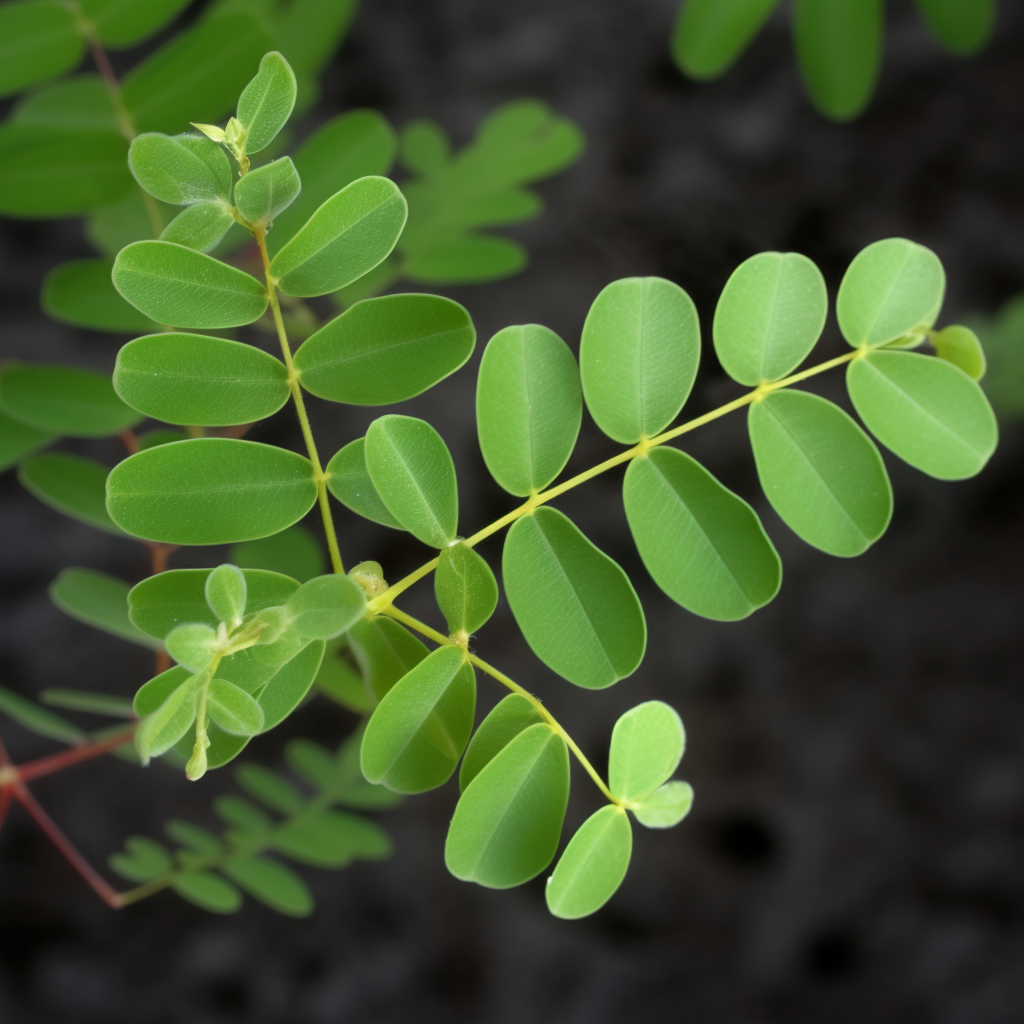
Phyllanthus urinaria
The wrinkle-fruited leaf flower (Phyllanthus urinaria L.) (Euphorbiaceae) is widely used as a traditional folk medicine for inflammatory relief. Geraniin, the hydrolysable tannin, was purified by a series of chromatographic processes from the 70% aqueous acetone extracts of P. urinaria and identified by NMR [1H (500 MHz) and 13C NMR (126 MHz)] spectra and mass spectroscopy. The scavenging activities of geraniin against DPPH radicals (half-inhibition concentration, IC50, were 0.92 and 1.27 microM, respectively, for pH 4.5 and pH 7.9), hydroxyl radicals (IC50 was 0.11 microM by deoxyribose method and 1.44 microM by electron spin resonance method), and superoxide radicals (IC50 were 2.65 microM) were determined in comparison with positive controls. The inhibitory activities against xanthine oxidase (IC50 were 30.49 microM) were measured. Geraniin also showed dose-dependent inhibitory activities against semicarbazide-sensitive amine oxidase (SSAO, IC50 were 6.58 microM) and against angiotensin converting enzyme (ACE, IC50 were 13.22microM). For kinetic property determinations, geraniin showed competitive inhibitions against SSAO (the apparent inhibition constant, Ki, was 0.70microM) and mixed noncompetitive inhibitions against ACE.
Spontaneously hypertensive rats (SHR, 10-week age) were orally administered to once (5 mg geraniin/kg SHR), and changes of systolic blood pressure (SBP) and diastolic blood pressure (DBP) were measured over 24 h and compared with the positive control of captopril (2 mg/kg SHR). The geraniin showed antihypertensive activity in lowering SBP and DBP and showed a significant difference from the blank (distilled water) at 2, 4, 6, 8, and 24 h. Healthy food products could use geraniin for antioxidant protection and therapeutic effects in the future.
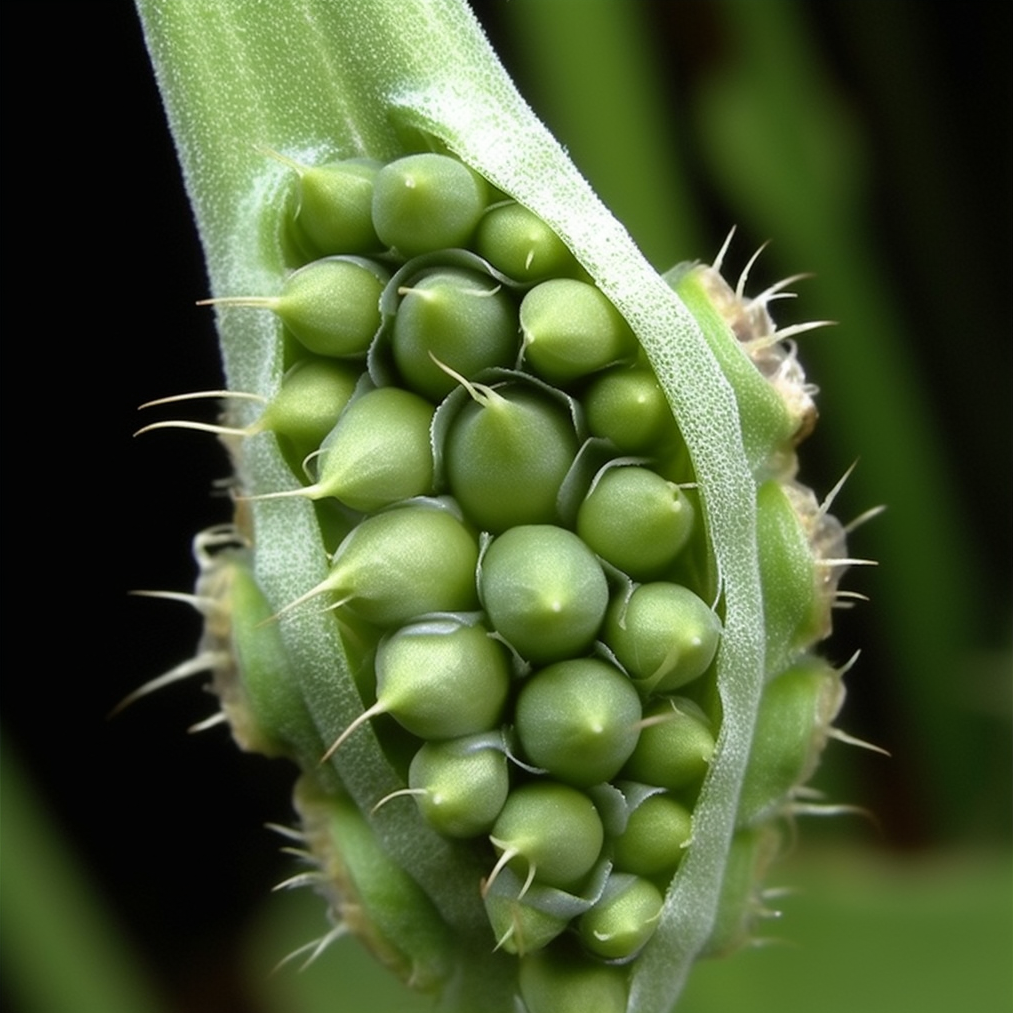
Pinellia ternata
Hypertension is a cardiovascular disease that causes great harm to health and life, affecting the function of important organs and accompanied by a variety of secondary diseases, which need to be treated with drugs for a long time. P. ternata alone or combination with western medicine has played an important role in traditional Chinese medicine. Although P. ternata is used clinically to treat hypertension, its functional molecular mechanism and pharmacological mechanism have not been elucidated.
Therefore, in this study, the potentially effective components, and targets of P. ternata in the treatment of hypertension were screened by the method of network pharmacology, and the mechanism of P. ternata in the treatment of hypertension was analyzed by constructing a component-target relationship network, PPI interaction network, targets’ function analysis, and molecular docking. In the study, 12 potentially effective components and 88 targets were screened, and 3 potential protein modules were found and analyzed after constructing a PPI network using targets. In addition, 10 targets were selected as core targets of the PPI network.
After that, the targets were analyzed by Gene Ontology (GO) enrichment analysis and Kyoto Encyclopedia of Genes and Genomes (KEGG) pathway analysis. Finally, the molecular docking method is used to study the interaction between the targets and the active components. The above evidence shows that the mechanism of P. ternata in the treatment of hypertension is complicated, as it acts in many ways, mainly by affecting nerve signal transmission, cell proliferation, and apoptosis, calcium channels, and so on. The binding between targets and active components mainly depends on Pi bonds and hydrogen bonds.
Using the method of network pharmacology and molecular docking to analyze the mechanism of P. ternata in the treatment of hypertension will help to provide a better scientific basis for the combined use of traditional Chinese medicine and western medicine, and will better help to improve the quality of P. ternata and point out its direction.

Radix Bupleuri
Radix Paeoniae Alba (Baishao, RPA) has long been used in traditional Chinese medicine formulation to treat hypertension by repression the hyperfunction of liver. However, whether the RPA itself has the antihypertensive effect or not is seldom studied. This study was to evaluate the protective effect of RPA on hypertensive rats. Alcohol in conjunction with a high fat diet- (ACHFD-) induced hypertensive rats and spontaneously hypertensive rats (SHR) was constantly received either RPA extract (25 or 75 mg/kg) or captopril (15 mg/kg) all along the experiments. As a result, RPA extract (75 mg/kg) could significantly reduce systolic blood pressure of both ACHFD-induced hypertensive rats and SHR after 9-week or 4-week treatment.
In ACHFD-induced hypertensive rats, the blood pressure was significantly increased and the lipid profiles in serum including triglyceride, total cholesterol, LDL-cholesterol, and HDL-cholesterol were significantly deteriorated. Also, hepatic damage was manifested by a significant increase in alanine transaminase (ALT) and aspartate transaminase (AST) in serum. The RPA extract significantly reversed these parameters, which revealed that it could alleviate the liver damage of rats. In SHR, our result suggested that the antihypertensive active of RPA extract may be related to its effect on regulating serum nitric oxide (NO) and endothelin (ET) levels.
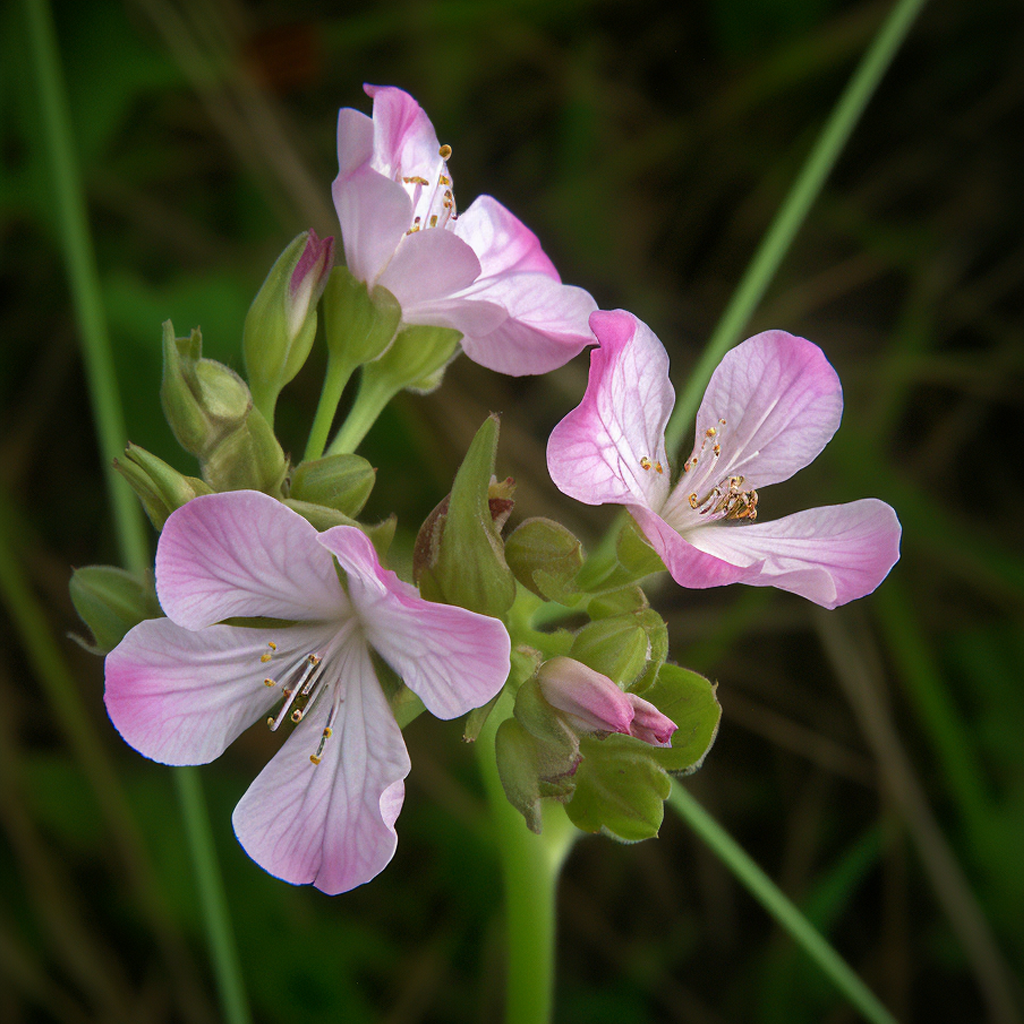
Raphanus sativus
In this study, we describe the hypotensive, cardio-modulatory and endothelium-dependent vasodilator actions of Raphanus sativus (radish) seed crude extract in an attempt to provide scientific basis for its traditional use in hypertension. The plant extract (Rs.Cr) was prepared in distilled water and was subjected to phytochemical screening using standard analytical procedures. In vivo blood pressure was monitored in anaesthetized normotensive rats. Isolated tissue preparations were suspended in tissue baths containing Kreb’s solution while acute toxicity study was performed in mice for 24 h. Rs.Cr tested positive for the presence of saponins, flavonoids, tannins, phenols and alkaloids and caused a dose-dependent (0.1-3 mg/kg) fall in blood pressure and heart rate of rats that was mediated via an atropine-sensitive pathway. In isolated guinea-pig atria, Rs.Cr showed dose-dependent (0.03-3.0 mg/mL) inhibition of force and rate of contractions.
In the atropine-treated tissues, the inhibitory effect was abolished and a cardiac stimulant effect was unmasked which was resistant to adrenergic and serotonergic receptor blockade. In the endothelium-intact rat aorta, Rs.Cr inhibited phenylephrine-induced contractions, which was blocked by atropine and Nomega-Nitro-L-arginine methyl ester hydrochloride while was also absent in the endothelium-denuded preparations. The extract was safe in mice up to the dose of 10 g/kg. The study shows that the cardiovascular inhibitory effects of the plant are mediated through activation of muscarinic receptors thus possibly justifying its use in hypertension.

Rehmannia glutinosa
Anti-hypertensive effects of Radix Rehmanniae and its active ingredients
Radix Rehmanniae (RR) is the root tuber of Rehmannia glutinosa Libosch. Herein, the methanol extracts of dried RR (DRR) and processed RR (PRR) were partitioned to obtain ethyl acetate, aqueous, and n-butanol layers. The angiotensin-I converting enzyme (ACE) inhibition test indicated that the ethyl acetate extracts of DRR (DRRE) and PRR (PRRE) show better inhibitory activity.
Therefore, changes in blood pressure were tested over 24 h in spontaneously hypertensive rats, with DRR showing good anti-hypertensive activity. DRRE was further subjected to column chromatography; 28 fractions were separated and tested for ACE inhibition. Ultimately, six compounds were identified by spectral analysis, and literature comparison. Specifically, ursolic acid and oleanolic acid showed better ACE inhibition than the other compounds. This study confirmed that DRR has anti-hypertensive activity. In future, DRR’s potential as a health food should be further assessed.
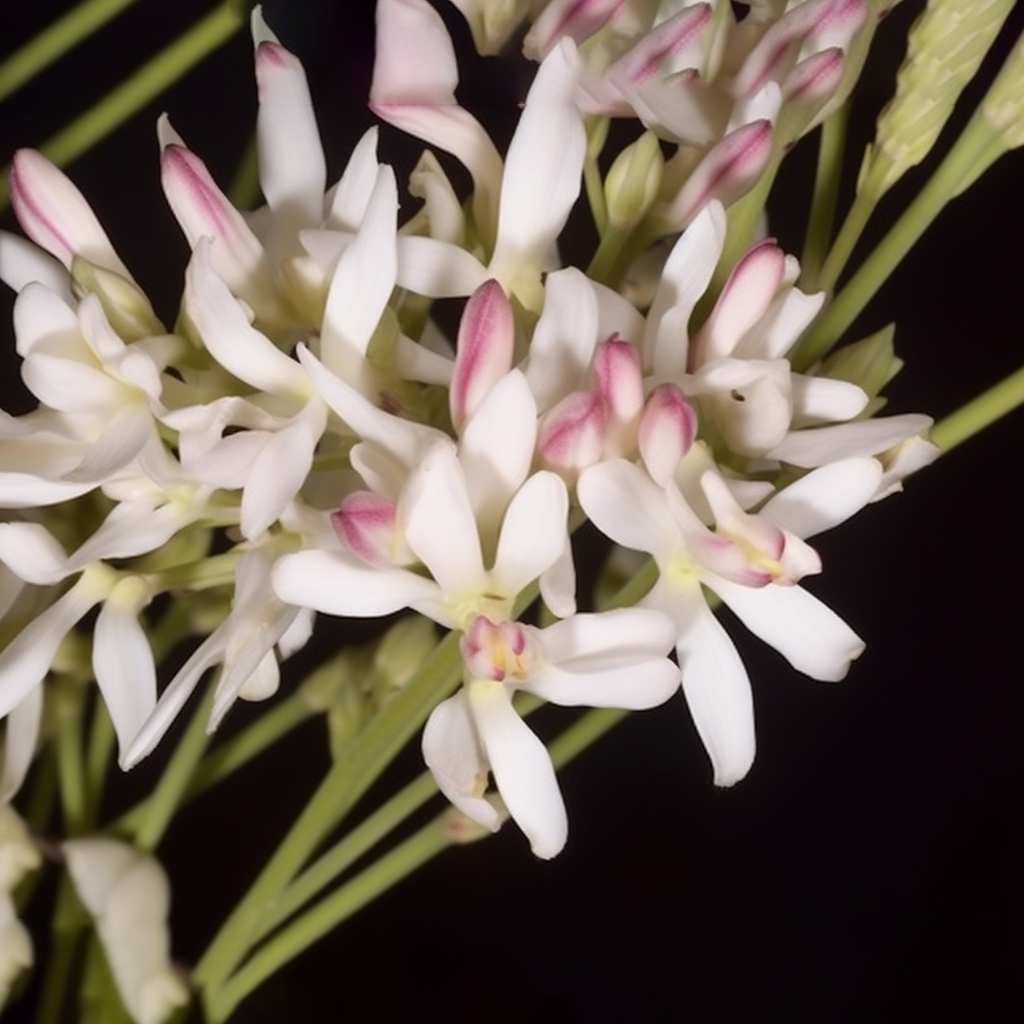
Retama raetam Forssk
The antihypertensive and diuretic effects of the aqueous extract of Retama raetam Forssk. (RR) leaves were studied in both normotensive (WKY) and spontaneously hypertensive rats (SHR). In SHR rats, daily oral administration of RR (20 mg/kg) for three weeks exhibited a significant reduction in blood pressure. The systolic blood pressure decreased significantly from the seventh day (P<0.01) and persisted through the end of treatment (P<0.001) in SHR rats. The RR significantly enhanced the diuresis in WKY rats (P<0.001). Furthermore, oral administration of RR at a dose of 20 mg/kg produced a significant increase on urinary excretion of sodium (P<0.05), potassium (P<0.01) and chlorides (P<0.01) in SHR rats. In WKY rats, RR treatment induced a significant increase on urinary potassium elimination (P<0.05) without affecting sodium and chloride excretion. Irbesartan (Avapro(r)) 20 mg/kg (body weight), an angiotensin II receptor antagonist, was used as reference drug.
No significant changes were noted in heart rate after RR treatment in SHR as well as in WKY rats. Glomerular filtration rate showed a significant increase after RR administration in WKY rats (P<0.01) and a no significant increase in SHR rats. These results suggest that oral administration of aqueous RR extract exhibited antihypertensive and diuretic effects in SHR rats and diuretic action in WKY rats.

Rheum palmatum
Rheum palmatum L. is a traditional Chinese medicine with various pharmacological properties, including anti-inflammatory, antibacterial, and detoxification effects. In this study, the mechanism of the hypoglycemic effect of purified anthraquinone-Glycoside from Rheum palmatum L. (PAGR) in streptozotocin (STZ) and high-fat diet induced type 2 diabetes mellitus (T2DM) in rats was investigated. The rats were randomly divided into normal (NC), T2DM, metformin (Met), low, middle (Mid), and high (Hig) does of PAGR groups.
After six weeks of continuous administration of PAGR, the serum indices and tissue protein expression were determined, and the pathological changes in liver, kidney, and pancreas tissues were observed. The results showed that compared with the type 2 diabetes mellitus group, the fasting blood glucose (FBG), total cholesterol (TC), and triglyceride (TG) levels in the serum of rats in the PAGR treatment groups were significantly decreased, while superoxide dismutase (SOD) and glutathione peroxidase (GSH-PX) levels were noticeably increased. The expression of Fas ligand (FasL), cytochrome C (Cyt-c), and caspase-3 in pancreatic tissue was obviously decreased, and the pathological damage to the liver, kidney, and pancreas was improved.
These indicate that PAGR can reduce oxidative stress in rats with diabetes mellitus by improving blood lipid metabolism and enhancing their antioxidant capacity, thereby regulating the mitochondrial apoptotic pathway to inhibitβ-cell apoptosis and improve β-cell function. Furthermore, it can regulate Fas/FasL-mediated apoptosis signaling pathway to inhibit β-cell apoptosis, thereby lowering blood glucose levels and improving T2DM.

Salvia cinnabarina
Effect of a Diterpenoid from Salvia cinnabarina on Arterial blood pressure in Rats
The effect of a diterpenoid isolated from Salvia cinnabarina, 3,4-seicosopimar-4(18),7,15-triene-3-oic acid (SCB), on arterial blood pressure was evaluated in anaesthetized rats. Male Wistar rats, anaesthetized with urethane (sol. 10% p/v; 10 mL/kg), underwent surgery for continuous monitoring of arterial blood pressure. After preliminary experiments to evaluate the dose response (3, 10 and 30 mg/kg i.v.) of SCB, a dose of 3 mg/kg was chosen for all successive experiments. On different groups of rats treated with the ganglion-blocking agent chlorisondamine (2.5 mg/kg i.p.) the effect of SCB (3 mg/kg i.v.) was evaluated before and following an infusion of the nitric oxide synthase inhibitor L-NAME (0.3 mg/kg/min i.v.).
Intravenous administration of SCB at doses of 3, 10 and 30 mg/kg led to a fall in mean arterial blood pressure (MABP) of 14.75 ± ± ± ± ± 1.44 mmHg, 36.60 ± ± ± ± ± 31.40 mmHg and 31.40 ± ± ± ± ± 6.28 mmHg, respectively (n = = = = = 4-5), that was not modified by treatment of the rat with chlorisondamine nor with L-NAME. The results demonstrate a hypotensive effect of SCB-due to a peripheral mechanism but independent of endothelial nitric oxide release.
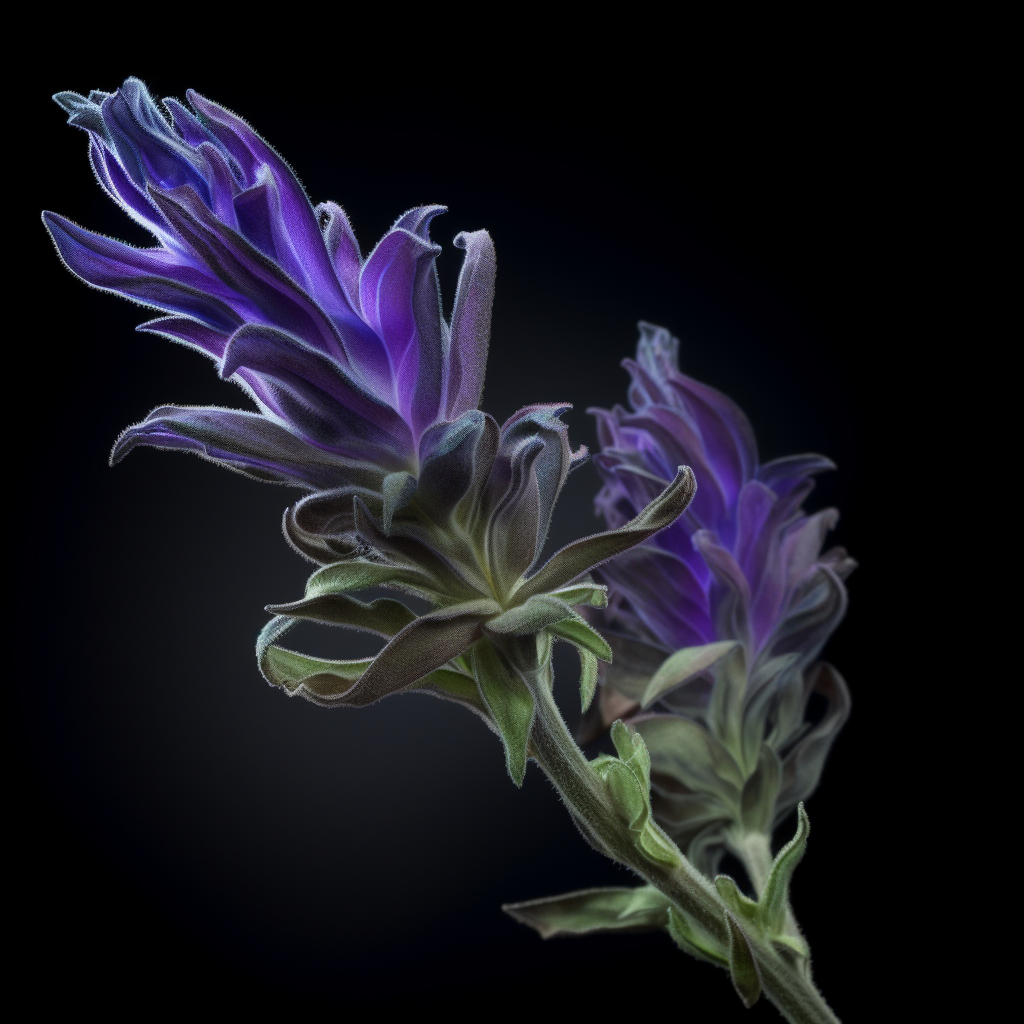
Salvia miltiorrhiza
Metabolic syndrome, such as diabetes mellitus, obesity, atherosclerosis, and high blood pressure (HBP), are closely linked pathophysiologically. However, current monotherapies for metabolic syndrome fail to target the multifactorial pathology via multiple mechanisms, as well as resolving the dysfunctionality of the cells and organs of the body. We aimed to provide a comprehensive and up-to-date review of the pharmacological advances, therapeutic potential, and phytochemistry of Salvia miltiorrhiza, Carthamus tinctorius, and Danhong injection (DHI). We discussed the molecular mechanisms of the bioactive constituents relating to diabetes mellitus and metabolic disease for further research and drug development.
Interestingly, Salvia miltiorrhiza, Carthamus tinctorius, and DHI have anti-inflammatory, anti-glycemic, anti-thrombotic, and anti-cancer properties; and they mainly act by targeting the dysfunctional vasculatures including the inflammatory components of the disease to provide vascular repair as well as resolving oxidative stress. The major bioactive chemical constituents of these plants include polyphenolic acids, diterpene compounds, carthamin, and hydroxysafflor yellow A.
Treatment of diabetes mellitus and its associated cardiovascular complication requires a comprehensive approach involving the use of appropriate traditional Chinese medicine formula. Danshen, Honghua, and DHI target the multiple risk factors regulating the physiologic function of the body and restore normalcy, apart from the traditional advice on exercise and diet control as treatment options in a metabolic syndrome patient.

Scutellariae Radix
The aim of this experiment was to investigate the effects of a mixture of Scutellariae Radix, Coptidis Rhizoma and Coptidis Rhizoma water extracts on the blood pressure, plasma renin activity, plasma levels of aldosterone and atrial natriuretic peptide (ANP) in spontaneously hypertensive rats (SHR). The results of this study were as follows: 1. Systolic blood pressure decreased significantly after the administration of a mixture of Scutellariae Radix, Coptidis Rhizoma, and Coptidis Rhizoma water extract 0.2 ml/200g. 2.
Plasma renin activity and plasma levels of ANP were not changed after the administration of a mixture of Scutellariae Radix, Coptidis Rhizoma and Coptidis Rhizoma water extracts, 3. Plasma levels of aldosterone was increased significantly after the administration of a mixture of Scutellariae Radix, Coptidis Rhizoma and Coptidis Rhizoma water extracts 0.1 ml/200g.
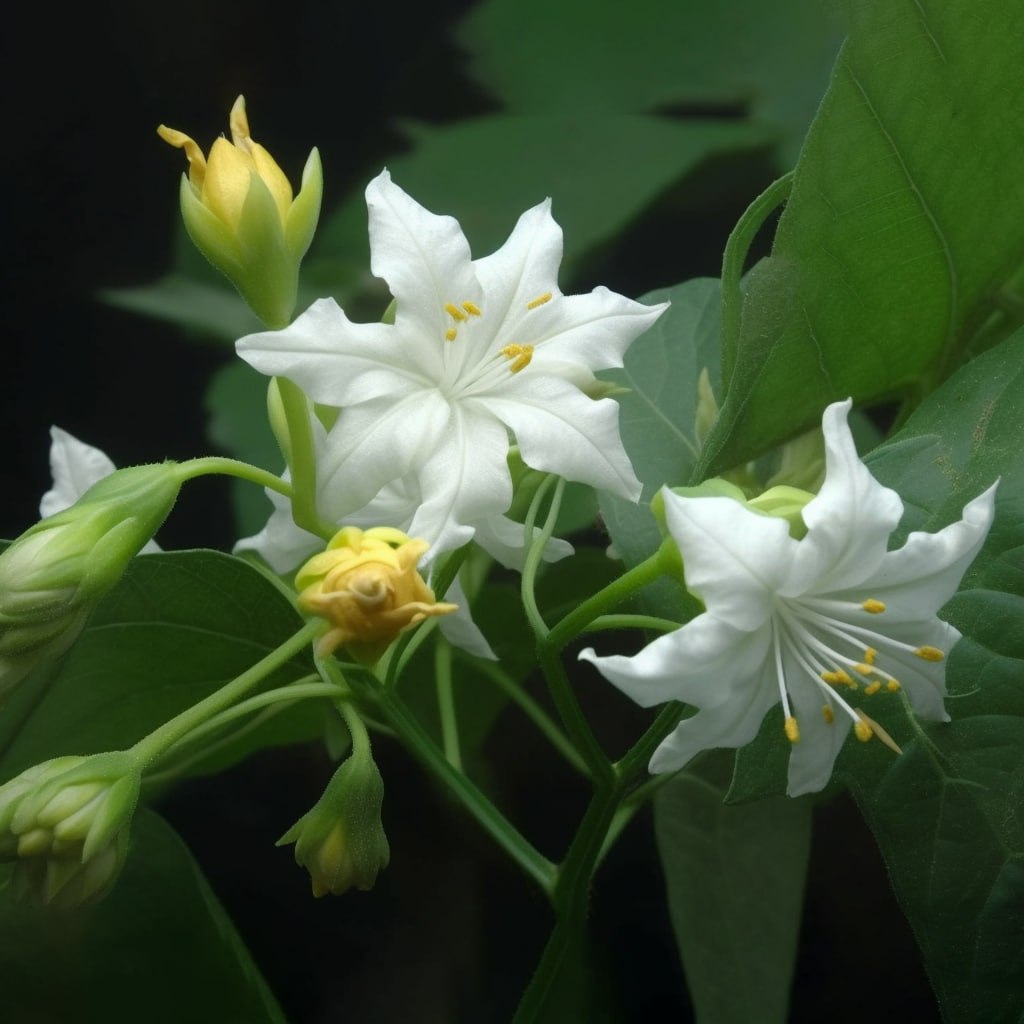
Solanum torvum
Ethnopharmacological relevance: Solanum torvum fruits are commonly used in Cameroonian traditional medicine for treatment of arterial hypertension. It has been previously shown that intravenous administration of aqueous extract from dried fruits (AEST) reduced blood pressure.
Aim: The present work evaluates acute toxicity and effects of oral administration of AEST in chronic arterial hypertension induced by L-NAME. Effects of AEST were also evaluated on isolated aorta.
Materials and methods: AEST (200 mg/kg/day, p.o.) was given solely or concomitantly with L-NAME (40 mg/kg/day, p.o.) for 30 consecutive days. Animal body weight, systolic blood pressure and heart rate were measured before stating the treatment and at the end of each week. Urinary volume and urinary sodium and potassium contents were quantified before and at days 1, 15 and 30 of the treatment. Aorta from treated animals was tested for their sensitivity to noradrenaline and carbachol. Aorta from normal untreated rats was used to evaluate the in vitro vascular effect of AEST.
Results: The results showed that AEST did induce neither mortality nor visible signs of toxicity. When given solely or in co-administration with L-NAME, AEST significantly reduced animal’s body weight. It amplified the hypertensive and cardiac hypertrophy effect of L-NAME and did not affect these parameters in normotensive animals. AEST increased the sensitivity to noradrenaline in normotensive and significantly reduced it in hypertensive animals. AEST significantly increased urinary volume and sodium excretion in L-NAME treated animals while reducing the sodium excretion in normotensive. In vitro, AEST induced a potent partial endothelium-dependent contraction of aortic ring; contractions that were partially antagonized by prazosin and verapamil and were not relaxed by carbachol.
Conclusion: These results suggest that oral chronic administration of AEST induced potentiation of arterial hypertension and cardiac hypertrophy in L-NAME treated rats. These effects may result from a reduction in sensitivity to vasorelaxant agents and increase in hypersensitivity to contractile factors. AEST possess potent in vitro vasocontractile activity that may result from activation of both alpha(1)-adrenergic pathway and calcium influx.

Sophora japonica
Modulation of Lipogenesis and Glucose Consumption in HepG2 Cells and C2C12 Myotubes by Sophoricoside
Sophoricoside, an isoflavone glycoside isolated from Sophora japonica (Leguminosae), has been widely reported as an immunomodulator. In this study, the effects of sophoricoside on lipogenesis and glucose consumption in HepG2 cells and C2C12 myotubes were investigated. Treatment with sophoricoside at concentrations of 1–10 μM inhibited lipid accumulation in HepG2 cells in a dose-dependent manner. At the same concentration range, no effect on cell viability was observed in the MTT assay. Inhibition of lipogenesis was associated with the downregulation of SREBP-1a, SREBP-1c, SREBP-2 and their downstream target genes (FAS, ACC, HMGR) as revealed by realtime quantitative PCR. The lipid-lowering effect was mediated via the phosphorylation of AMPK.
Further investigation of the activities of this isoflavone showed that sophoricoside has the capability to increase glucose uptake by C2C12 myotubes. It also effectively inhibited the activities of α-glucosidase and α-amylase in vitro and remarkably lowered postprandial hyperglycaemia in starch-loaded C57BL6/J mice. These results suggest that sophoricoside is an effective regulator of lipogenesis and glucose consumption and may find utility in the treatment of obesity and type 2 diabetes.
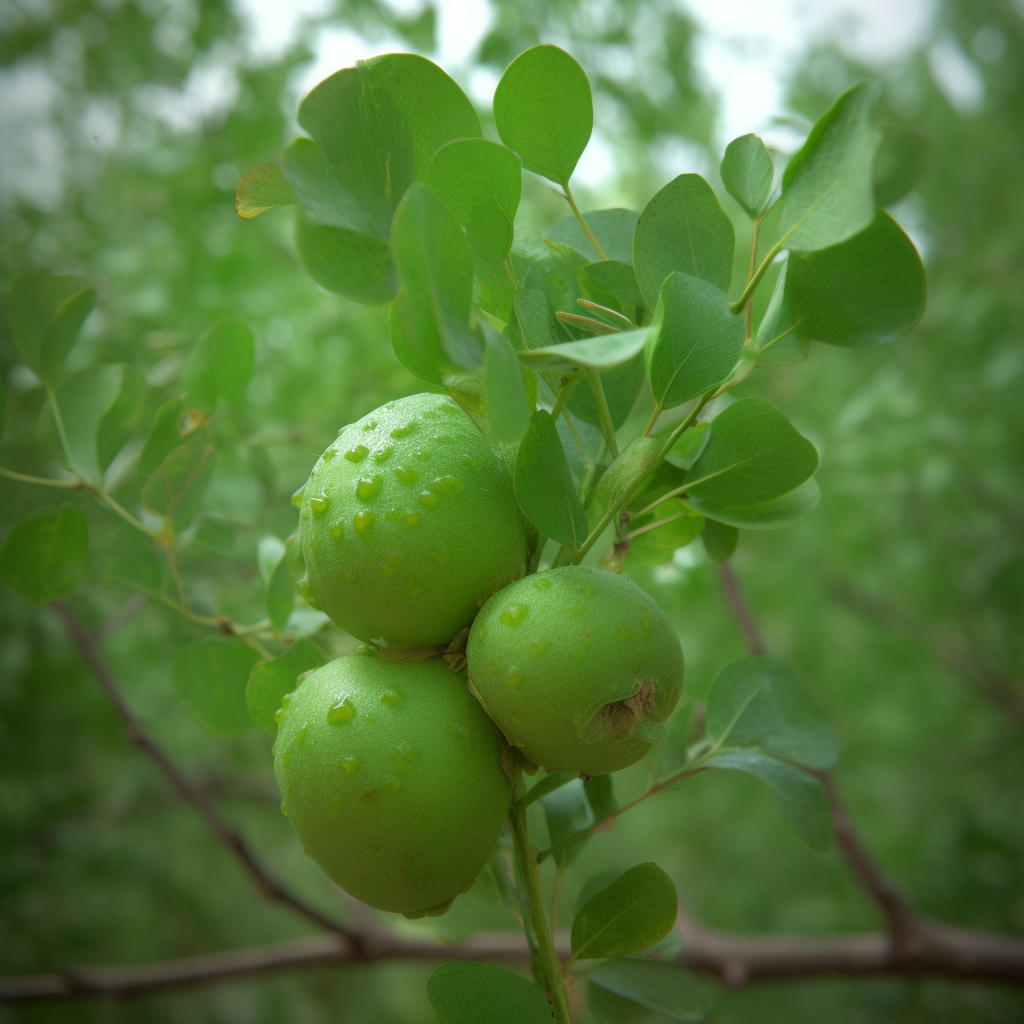
Sclerocarya birrea
Studies in our laboratories suggest that Sclerocarya birrea stem-bark ethanolic extract (SBE) has hypoglycemic properties. Accordingly, we investigated the effects of SBE on major complications of diabetes mellitus; blood glucose, renal function and mean arterial blood pressure (MAP) in non-diabetic and STZ-induced diabetic rats. Oral glucose tolerance test responses to various SBE doses (60, 120 and 240 mg kg(-1)) were studied in fasted rats following glucose load (0.86 g kg(-1), p.o.). Rats treated with deionized water (3 ml kg(-1) p.o.), or standard hypoglycemic drugs (insulin, 100 microg kg(-1), s.c.; metformin, 500 mg kg(-1), p.o. or glibenclamide, 500 microg kg(-1), p.o) acted as untreated and treated positive controls, respectively. Blood was collected in non-diabetic rats after 45 min of SBE, metformin or glibenclamide for plasma insulin determination.
Acute SBE effects on renal function and MAP were studied in anesthetized rats challenged with hypotonic saline after 3.5h equilibration for 4h of 1h control, 1.5h treatment and 1.5h recovery periods. SBE was added to the infusate during the treatment period. Chronic effects were monitored for 5 weeks in animals daily treated with SBE (120 mg kg(-1) p.o.) while hepatic glycogen concentration was measured at the end of the experimental period. SBE exhibited dose-dependent reduction in blood glucose concentration. SBE and metformin did not affect plasma insulin secretion in non-diabetic rats, while glibenclamide increased plasma insulin concentration.
The hypoglycemic effect of SBE treatment was associated with increased hepatic glycogen synthesis. Acute SBE administration did not significantly alter kidney function, but chronic SBE treatment for decreased plasma urea and creatinine concentrations of STZ-diabetic rats with concomitant increase in GFR by comparison with control rats at the corresponding period (0.7+/-0.2 vs. 1.4+/-0.3 ml min(-1)). SBE treatment reduced blood pressure in all groups of animals. The observations suggest that SBE has reno- and cardio-protective effects in diabetes mellitus.
The current results indicate the basis for SBE use as complementary remedy in diabetes.

Scrophulariae Radix
Background: In the previous study, active extract of Radix Scrophularia (ACRS) demonstrated beneficial effects on ventricular remodeling induced by coronary artery ligation and lowered blood pressure in rats. And ACRS also exhibited the effect on lowering the blood pressure in spontaneously hypertensive rats (SHRs). The aim of this study is to explore the effects of ACRS on ventricular remodeling in SHRs and underlying mechanisms.
Results: ACRS significantly lowered the blood pressure, decreased the heart mass indexes, inhibited the deposition of perivascular and interstitial, attenuated the accumulation of types I and III collagen, reduced the tissue angiotensin II, serum norepinephrine and tumor necrosis factor-α concentrations. The underlying mechanisms may be related to downregulating the mRNA expressions of collagen type I, transforming growth factor-β1 and angiotensin converting enzyme, suppressing the phosphorylation of extracellular signal regulated kinase 1/2, c-Jun N-terminal kinase (JNK/SAPK) and p38 mitogen-activated protein kinases (p38 MAPK).
Conclusion: Continuous treatment of SHRs with ACRS for 21 weeks reduced blood pressure, myocardial hypertrophy and the amount of interstitial and perivascular collagen, which indicated that ACRS could prevent hypertensive ventricular remodeling. This can be attributed to suppression of the sympathetic nervous and renin angiotensin aldosterone system through the inhibition of ERK 1/2, JNK and p38 MAPK pathways.
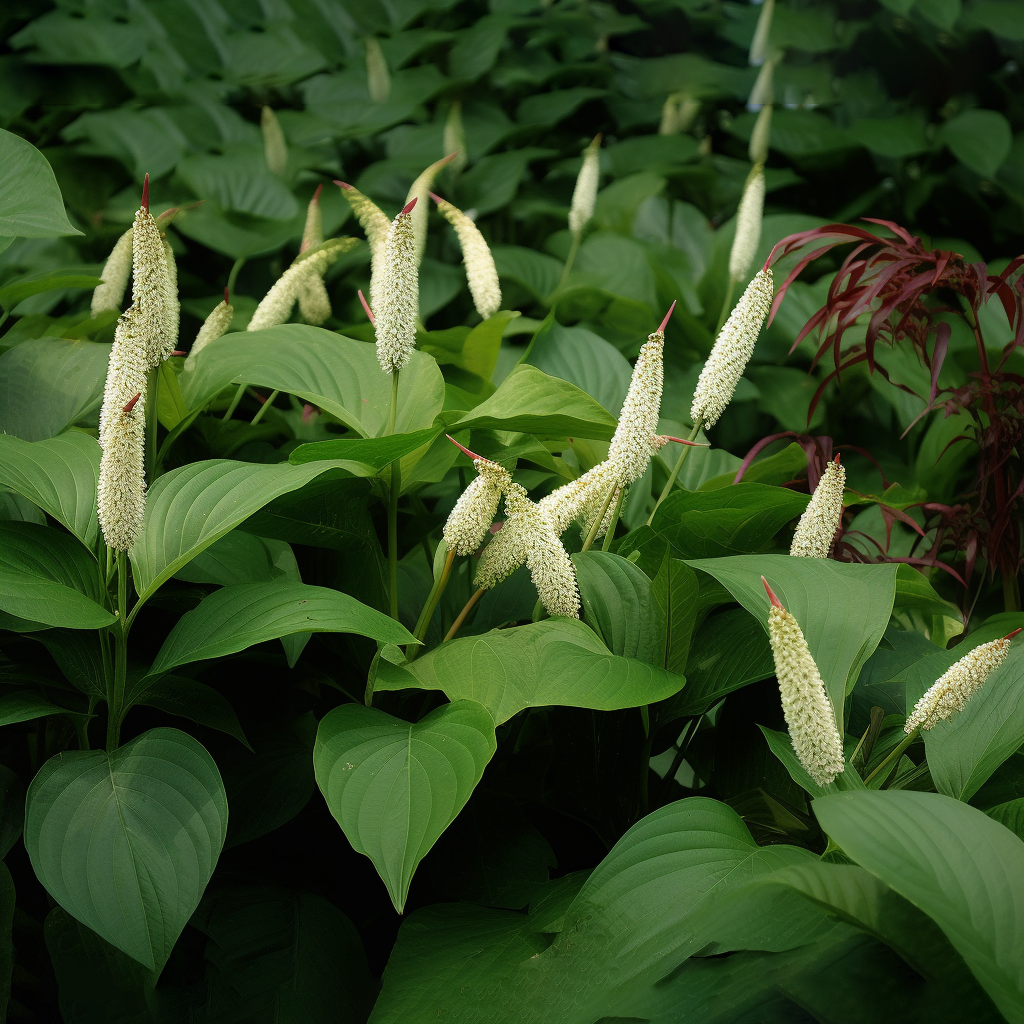
Saururus chinensis
Aim of the study: The present study was performed to evaluate the cardiovascular effects of ethanolic extract of the roots of Saururus chinensis (EERSC) in rats.
Materials and methods: The effects of EERSC on the vascular responses of isolated rat aorta, the cardiac functions in isolated rat heart, and the antihypertensive effects in spontaneously hypertensive rats (SHRs) were evaluated.
Results: In isolated rat aortic preparations, EERSC exhibited a potent vasorelaxant effect with EC(50) value of 9.1 microg/ml. This relaxation was significantly inhibited by denudation of endothelial layer or by pretreatment with N(G)-nitro-l-arginine methyl ester. In addition, the raising extracellular K(+) (45 mM), or pretreatment with tetraethylammonium (10 mM) significantly inhibited EERSC-induced vasorelaxation in endothelium-denuded aortic rings. In isolated rat hearts, EERSC significantly reduced cardiac functions such as left ventricle pressure and heart rate. In an antihypertensive study with SHRs, long-term oral administrations of EERSC decreased blood pressure of SHRs (approximately 20 mmHg).
Conclusions: These results suggest that chronic treatment with EERSC exerts an antihypertensive effect in SHRs, and its direct vasorelaxant properties and negative inotropic actions may contribute to reduce the elevated blood pressure.
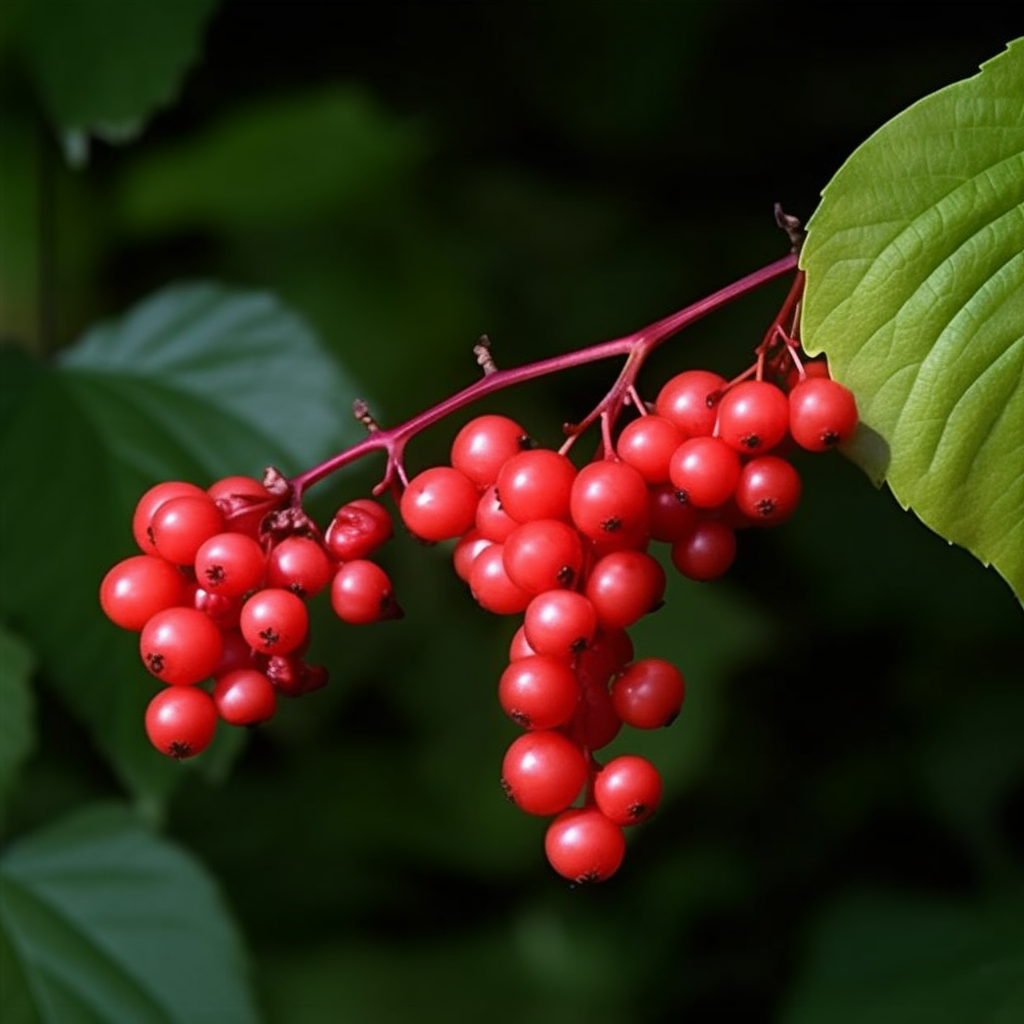
Schisandra chinensis
Gomisin A (GA) is a small molecular weight lignan present in Schisandra chinensis, and has been demonstrated to have vasodilatory activity. In the present study, we investigated the effect of GA on blood pressure (BP) in angiotensin II (Ang II)-induced hypertensive mice. C57/BL6 mice infused subcutaneously with Ang II (1 and 2 μg kg−1 per min for 2 weeks) showed an increase in BP with a decrease in nitric oxide (NO) metabolites in plasma, and a negative correlation between these two parameters was demonstrated. In the thoracic aorta from Ang II-induced hypertensive mice, a decrease in vascular NO that was accompanied by a diminution of phosphorylated endothelial nitric oxide synthase (eNOS), as well as by increased reactive oxygen species (ROS) production, was demonstrated.
These alterations in BP, eNOS phosphorylation and ROS production in the vasculature of Ang II-treated mice were markedly and dose-dependently reversed by simultaneous administration of GA (2 and 10 μg kg−1 per min). In addition, Ang II-induced ROS production in cultured vascular cells such as endothelial cells and vascular smooth muscle cells was markedly attenuated by GA. These results suggested that GA attenuated the increase in BP via preservation of vascular NO bioavailability not only by inhibiting ROS production but also by preventing the impairment of eNOS function in the vasculature of Ang II-induced hypertensive mice.

Siegesbeckia orientalis
Metabolic syndrome typically includes Type 2 diabetes associated with hyperglycemia, central obesity, dyslipidemia and hypertension. It is highly related to oxidative stress, formation of advanced glycated end products (AGEs) and key enzymes, such as carbohydrate digesting enzymes like pancreatic α-amylase and intestinal α-glucosidase, pancreatic lipase and angiotensin I-converting enzyme (ACE). This study used an in vitro approach to assess the potential of four extracts of Siegesbeckia orientalis linne on key enzymes relevant to metabolic syndrome. In this research, S. orientailis was firstly extracted by ethanol. The ethanol extract (SE) was then partitioned sequentially with hexane, ethyl acetate and methanol, and these extracts were named SE-Hex, SE-EA and SE-MeOH, respectively. The experimental results showed that SE-EA had the highest total phenolic content (TPC, 76.9 ± 1.8 mg/g) and the total flavonoids content (TFC, 5.3 ± 0.3 mg/g).
This extract exhibited the most significant antioxidant activities, including DPPH radical-scavenging capacity (IC50 = 161.8 ± 2.4 μg/mL), ABTS radical-scavenging capacity (IC50 = 13.9 ± 1.5 μg/mL) and reducing power. For anti-glycation activities, SE-EA showed the best results in the inhibition of AGEs, as well as inhibitory activities against α-glucosidase (IC50 = 362.3 ± 9.2 μg/mL) and α-amylase (IC50 = 119.0 ± 17.7 μg/mL). For anti-obesity activities, SE-EA indicated the highest suppression effect on pancreatic lipase (IC50 = 3.67 ± 0.52 mg/mL).
Finally, for anti-hypertension activity, SE-EA also demonstrated the strongest inhibitory activity on ACE (IC50 = 626.6 ± 15.0 μg/mL). Close relationships were observed among the parameters of TPC, antioxidant activities, inhibitory activities on α-amylase, α-glucosidase, lipase and ACE (R > 0.9). Moderate correlations were found among the parameters of TFC, antioxidant activities, and suppression of dicarbonyl compounds formation (R = 0.5–0.9). Taken together these in vitro studies reveal the therapeutic potential of SE-EA extract in the prevention and treatment of metabolic disorders.

Tropaeolum majus
Aim of the study: Previous studies have shown that the extracts obtained fromTropaeolum majusL. exhibitpronounced diuretic properties. In the present study, we assessed whether the hypotensive and/or anti-hypertensive mechanism of hydroethanolic extract (HETM), semi-purified fraction (TMLR) obtained fromT. majusand the flavonoids isoquercitrin (ISQ) and kaempferol (KPF) can be mediated by their interactionwith angiotensin converting enzyme (ACE).
Methods and methods: Firstly, to evaluate changes in mean arterial pressure (MAP), different groups of normotensive and spontaneously hypertensive rats (SHR) were orally and intraduodenally treated withHETM (10–300mg/kg) and TMLR (12.5–100mg/kg) and intravenously treated with ISQ and KPF being later anesthetized with ketamine (100mg/kg) and xylazine (20mg/kg). The left femoral vein and the rightcarotid artery were isolated, and polyethylene catheters were inserted for ISQ and KPF (0.5–4mg/kg)administration and blood pressure recording, respectively. The plasmatic ACE activity was evaluated toindirect fluorimetry, in serum samples after orally treatment with HETM, TMLR, ISQ and KPF.
Results: The oral administration of the HETM and its TMLR significantly reduced, in a dose-dependentmanner, the MAP in both normotensive and SHR. In addition, these preparations significantly decreasedthe MAP for up to 3h after the administration of the extract. Additionally, the intravenous administrationof ISQ, but not KPF, decreased MAP in rats. Otherwise, neither the extracts nor ISQ affected the heart rate.The oral administration of the HETM, TMLR or ISQ reduced ACE activity in serum samples at 90minafter administration. Finally, the intravenous administration of ISQ caused a significant reduction in thehypertensive response to angiotensin I, but not angiotensin II in normotensive rats.
Conclusion: Our results show that the hypotensive effects caused by the HETM, as well as by its TMLR,may be associated with the high levels of the flavonoid ISQ found in this plant. In addition, ISQ-inducedhypotension in rats is an event dependent on the inhibition of angiotensin II generation by ACE.

Tanacetum vulgare
vascular effects of Tanacetum vulgare L. leaf extract: in vitro pharmacological study
Aim of the study: Tanacetum vulgare L. (Asteraceae/Compositae) is principally used in traditional Moroccan medicine as antihypertensive remedy. The aim of the present study was to investigate the in vitro vascular activity of the aqueous extract of Tanacetum vulgare L.
Materials and methods: The activity of Tanacetum vulgare L. extract was tested on contractile response of Wistar rat aorta to high KCl and noradrenaline and on endothelium-dependent relaxation evoked by acetylcholine.
Results: The addition of Tanacetum extract during the plateau phase of noradrenaline-evoked contraction produced a rapid relaxation that reached a maximum of 30% of the contraction and was suppressed by the NO synthase inhibitor N(G)-nitro-l-arginine. At higher extract concentrations this rapid relaxation was followed by a slowly developing, N(G)-nitro-l-arginine-resistant, relaxing effect. Tanacetum extract also depressed KCl-evoked contraction by 30% at maximum. This effect was abolished in the presence of N(G)-nitro-l-arginine. The endothelium-dependent relaxation induced by acetylcholine was depressed in the presence of Tanacetum extract in the bathing solution.
Conclusion: This study indicates that the aqueous extract of Tanacetum possesses NO-mediated and NO-independent vasorelaxing properties in vitro.
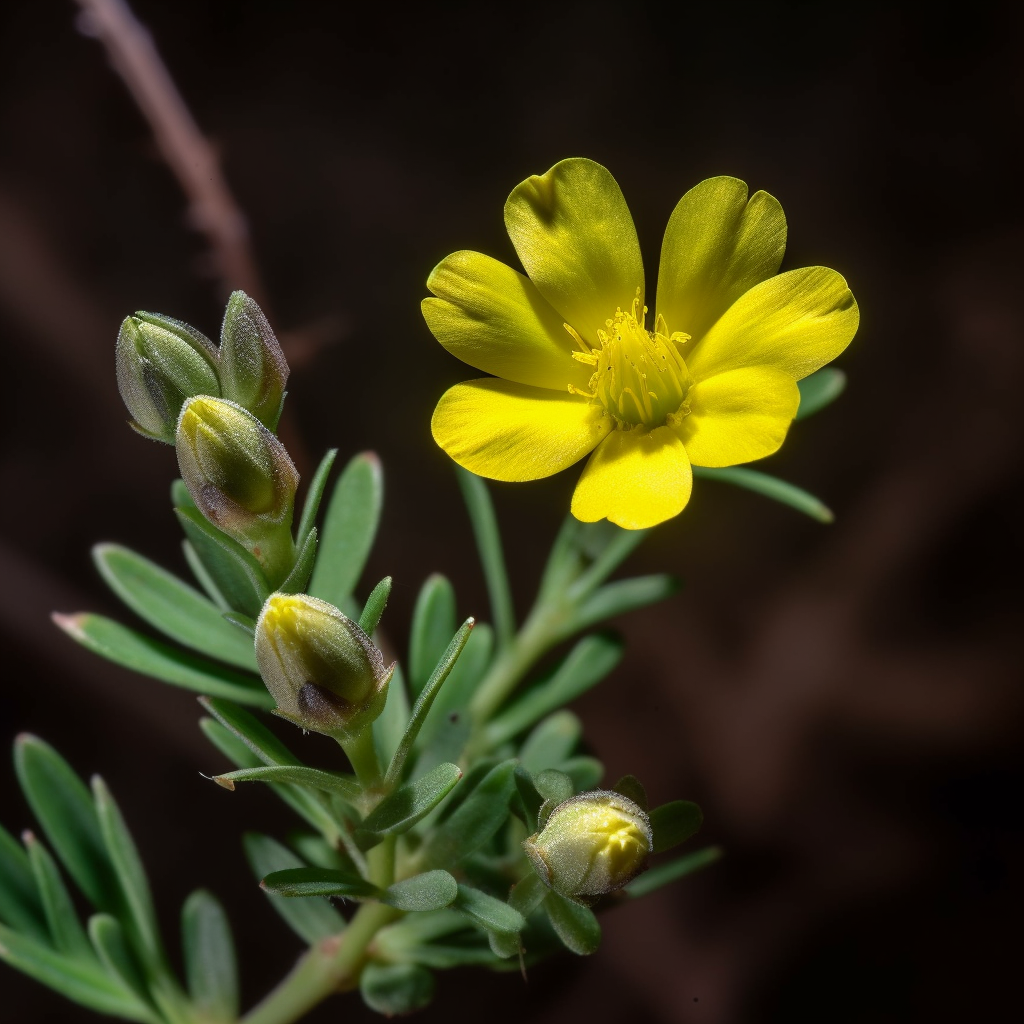
Tribulus terrestris
Tribulus terrestris is a natural herb used for treating many diseases including hypertension. According to previous reports, aqueous extract of tribulus fruits may have some antihypertensive effect with an unknown mechanism. The present study investigated the antihypertensive mechanism of tribulus in 2K1C hypertensive rats by measurement of circulatory and local ACE activity in aorta, heart, kidney and lung. Four groups of rats were selected; control, sham, operated or hypertensive and tribulus treated hypertensive group. hypertension was induced using silver clip on renal artery by surgery.
Four weeks after surgery, a single daily dose of 10 mg/kg of lyophilized aqueous extract of tribulus fruit were given orally to 2K1C rats for four weeks. ACE activity was determined by high performance liquid chromatography (HPLC). blood pressure was measured by the tail-cuff method. The systolic blood pressure (SBP) was significantly increased in 2K1C rats compared to control rats. The SBP of tribulus fed hypertensive rats was significantly decreased compared to hypertensive rats.
The ACE activity in all tissues of 2K1C rats including: aorta, heart, kidney, lung as well as serum were significantly increased compared to normal rats. The ACE activity in all tissues of tribulus fed hypertensive rats was significantly lower than that of hypertensive rats, which was more pronounced in kidney. These results indicated that there is a negative correlation between consumption of tribulus and ACE activity in serum and different tissues in 2K1C rats.
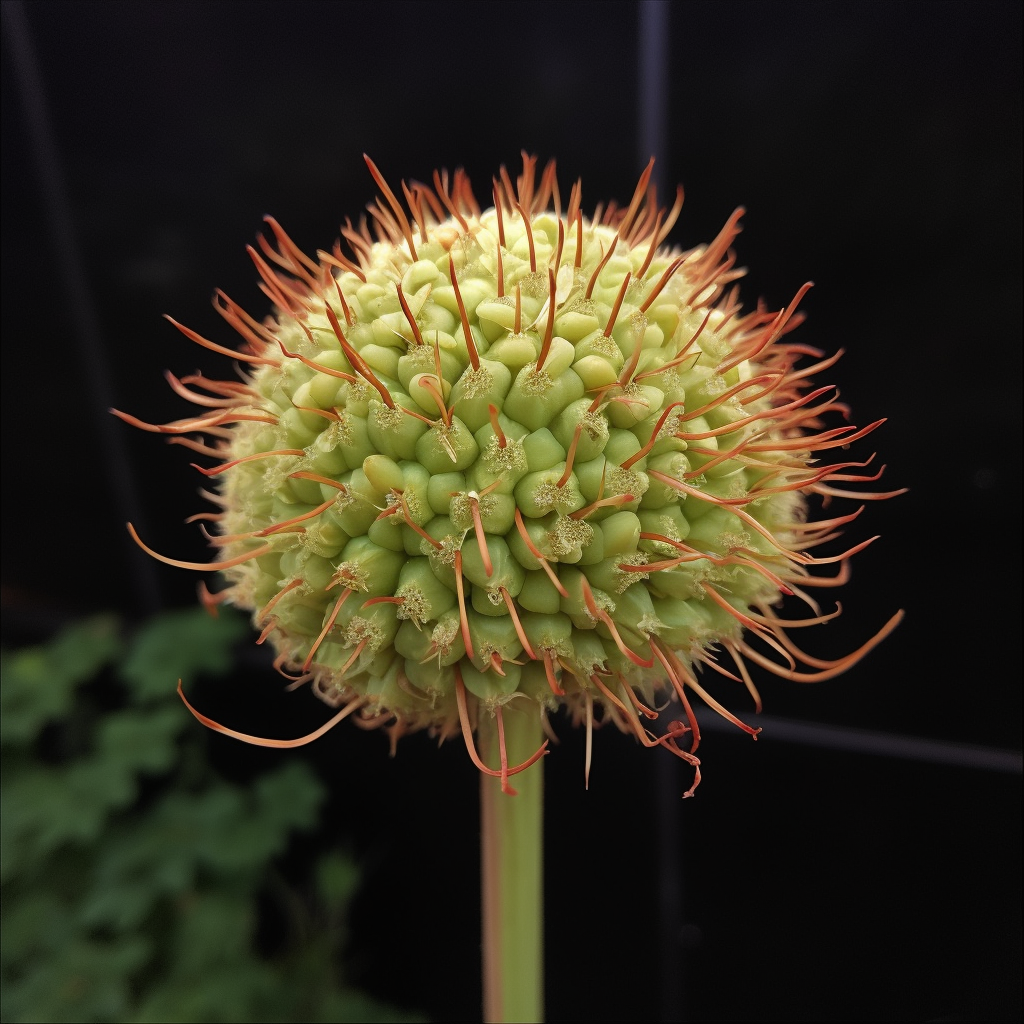
Uncaria rhynchophylla
A review on indole alkaloids isolated from Uncaria rhynchophylla and their pharmacological studies
Uncaria rhynchophylla (Miq.) Jacks, Rubiaceae, is one of the original plants of the important Chinese crude drug, Gou-teng, mainly used for the treatment of convulsion, hypertension, epilepsy, eclampsia, and cerebral diseases. The pharmacological activities of this plant are related to the presence of active compounds predominantly indole alkaloids. In this article, we have reviewed some reports about the pharmacological activities of the main indole alkaloids isolated from U. rhynchophylla. This review paper will contribute to the studies on the chemistry, safety and quality control of medicinal preparations containing Uncaria species.

Valeriana wallichii
Crude extract of Valeriana wallichii rhizome (Vw.Cr) and its fractions were studied for possible antispasmodic and blood pressure lowering activities to rationalize some of the folkloric uses. In rabbit jejunum preparations, Vw.Cr (0.1-3.0 mg/mL) caused relaxation of spontaneous contractions. When tested against high K(+) (80 mM)-induced contractions it produced weak inhibitory effect, while caused complete relaxation of the contractions induced by low K(+) (20 mM). In the presence of glibenclamide (3 microM), the inhibitory effect of low K(+) was shifted to the right, similar to that produced by cromakalim while, verapamil caused no differentiation in its inhibitory effect against low and high K(+)-induced contractions. In guinea pig ileum, the plant extract produced similar results as in rabbit jejunum.
Intravenous administration of Vw.Cr, produced fall in arterial blood pressure in normotensive anaesthetized rats and this effect was partially blocked by glibenclamide. In rabbit aortic preparations, plant extract also caused a selective and glibenclamide-sensitive relaxation of low K(+) (20 mM)-induced contractions. Activity-directed fractionation studies revealed that the observed activity was distributed both in the chloroform and aqueous fractions. These results indicate that the antispasmodic and hypotensive effects of Valeriana wallichii are mediated possibly through K(ATP) channel activation, which justify its use in gastrointestinal and cardiovascular disorders.
Mandatory FDA Warning: As with any supplement, consult your medical practitioner prior to using this product if you are pregnant, may become pregnant, breastfeeding, taking medication, other dietary supplements or have a medical condition. These statements have not been evaluated by the Food and Drug Administration. This product is not intended to diagnose, treat, cure, or prevent any disease. *Daily Value has not been established.




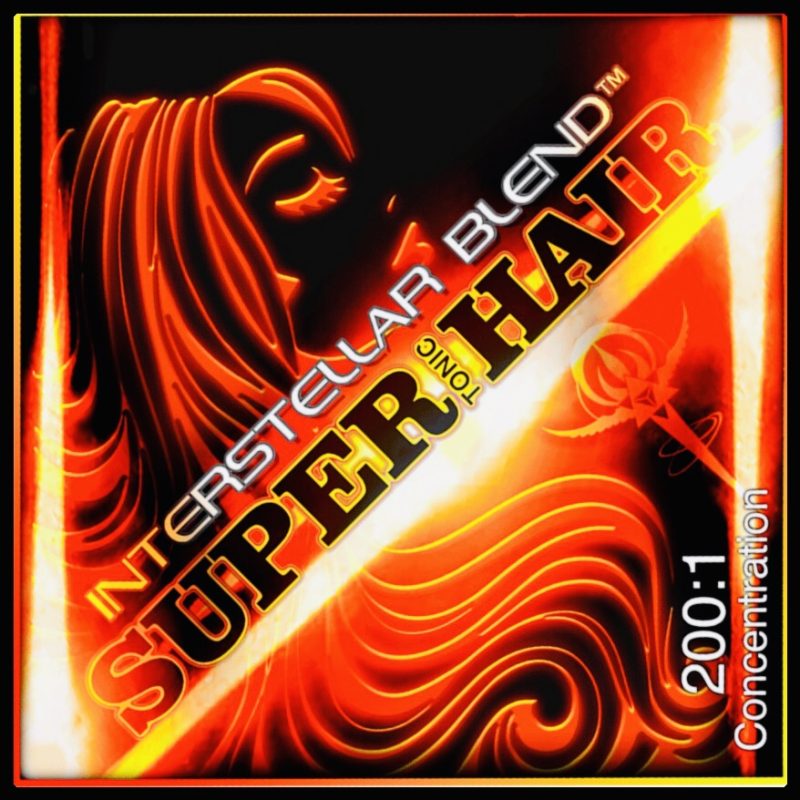
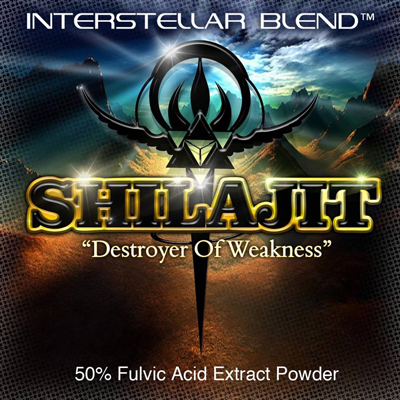


Craig Wilson –
Since Gavin first mentioned this blend I’ve been on his case asking for its release date and as usual with every blend it did not disappoint.
I initially bought it for my uncle as he has alot of issues with his health, one of them being water retention and it’s mainly around his ankles which really gets him down. He’s on alot of meds for his health but I convinced him to try this and within a matter of hours he started feeling the effects, the fluid in his ankles reduced massively and he said he genuinely felt healthier, less heavy and more spritely. I really hope he sticks with it as it’s way more effective than the meds he was receiving from his doctor.
I honestly wasn’t sure what this blend would do for me because I’m in the best shape of my life since I started fasting and taking Gavin’s blends back in February of this year, I take most of the blends every morning without fail and follow a strict 22/2 with longer fasts periodically but once you’ve felt the benefits of Gavin’s blends then anything he releases you will want to try…
I can’t say I’ve ever had any erectile dysfunction and I’m pretty healthy in that area so I certainly didn’t expect any effects there but this blend literally makes you as hard as a bat with a little extra girth thrown in too 😂🤣 , really wasn’t expecting that kind of effect but I’ll take it !!
There really isn’t an area of your health you can’t optimise when following a strict 22/2 fasting protocol plus using Gavin’s blends !!
Absolutely 100% will be a customer for life, thank you Gavin from me and my uncle 🙂
Torsten Oberacker –
I have ordered the challenge combo and started 2 days with megahydration including the aldosterone downregulator. The first 4 hours I didnt noticed to have to pee more, but then it started and worked very good.
When dryfast on day 3 and 4 ive noticed that I lost more subcutaneous water the on other dryfasts before.
And I noticed some nice extra erections the days through.
I am very happy that I’ve tried your blends, wow man, I live them and this just after one week of taking them. I’m looking forward to notice what happen when I take them some weeks more.
I think I found after years something that helps me with my binge eating.
Thank you from my heart Gavin!
Sophia Leva-Marie –
I am simply amazed! Patience is not my strong suit, and I have been searching for a way to release weight and inflammation – quickly and without feeling drained.
I found it with Gavin and Interstellar products. I purchased the Challenge Essential combo and I am getting ready to enter into a challenge period. Yet, just in getting ready for it my body is releasing fluids and inflammation. And I’m feeling more energy right away. I’m loving this downregulation in my body as I prepare for massive weight loss AND massive nutrition. Simultaneously
I can’t wait to consume all of the other amazing products that are what I’ve been looking for, for years. Everyone needs to know about Interstellar and how to be in optimum health. The easy and fast way. Fucking brilliant!
Anh Duc Nguyen –
I started with Interstellar back in 2020 and I can never look back, as the benefits it has provided me are an excellent value for money. At first I was skeptical because of the price, but please trust me there are no regrets!
Below are the products that I have been taking and it’s health benefits to me.
– Trinity- will give you a sense of calmness, stillness, and relaxed state of mind. If you’re short tempered like me then you start to become more cool, things stop bothering you.
– Seven Sages – from all the food you eat, your environment, the people you surround yourself with, the media. It creates a negative thinking on you at times without you noticing, you wake up at times with a negative outlook on life. But Seven Sages clears all of this. You take it and you just feel absolutely blessed, no negativeness.
– Nebula the confidence giver. This has particular helped me overcome myself, I do boxing and with Nebula lets just say I punch a lot more back! In the gym, the last rep that I struggle with: Nebula helps me get it.
– Alderstone this specifically helps me within the gym, my muscle mass and testosterone level increase dramatically with this.
– Thunder helps me with my sex life, I was suffering from premature ejaculation and low libido. This boosts me way back up. Its also the greatest aphrodisiac, you don’t have to wait so long for your next round!
– Pine Pollen at first its a bit to drink this as its clumpy but if you’re about your health then mind over matter 🙂. This help improve my skin so much, smoother!
All in all, each condition you are facing Intestellar will have a solution. Especially Gavin, I message him on facebook for any queries and he points me in the correct direction. Can’t thank him enough.
Everyone tends to fast with these blends but to be honest, I don’t. But I still reap the benefits (of course if I fast it will be more) so don’t worry if you can’t fast. As long as you take them.
Best
Kali Dass (verified owner) –
It’s early, but I’m already impressed. I have always been able to maintain my weight well until the last several years when I encountered some life events and menopause on top of things that really set me back in finding time for working out as I used to.
I have been using aldosterone for a little more than a week and while these are very early results, I am happy to share I am noticing the stubborn belly fat my body has been holding onto seems to finally be releasing with no other activity than walking my dogs each day.
Aldosterone gives me hope I’ll find myself again. I am really looking forward to experiencing the other products I bought as I continue on my journey of healing and recovery. Huge thank you to Gavin for these amazing products!